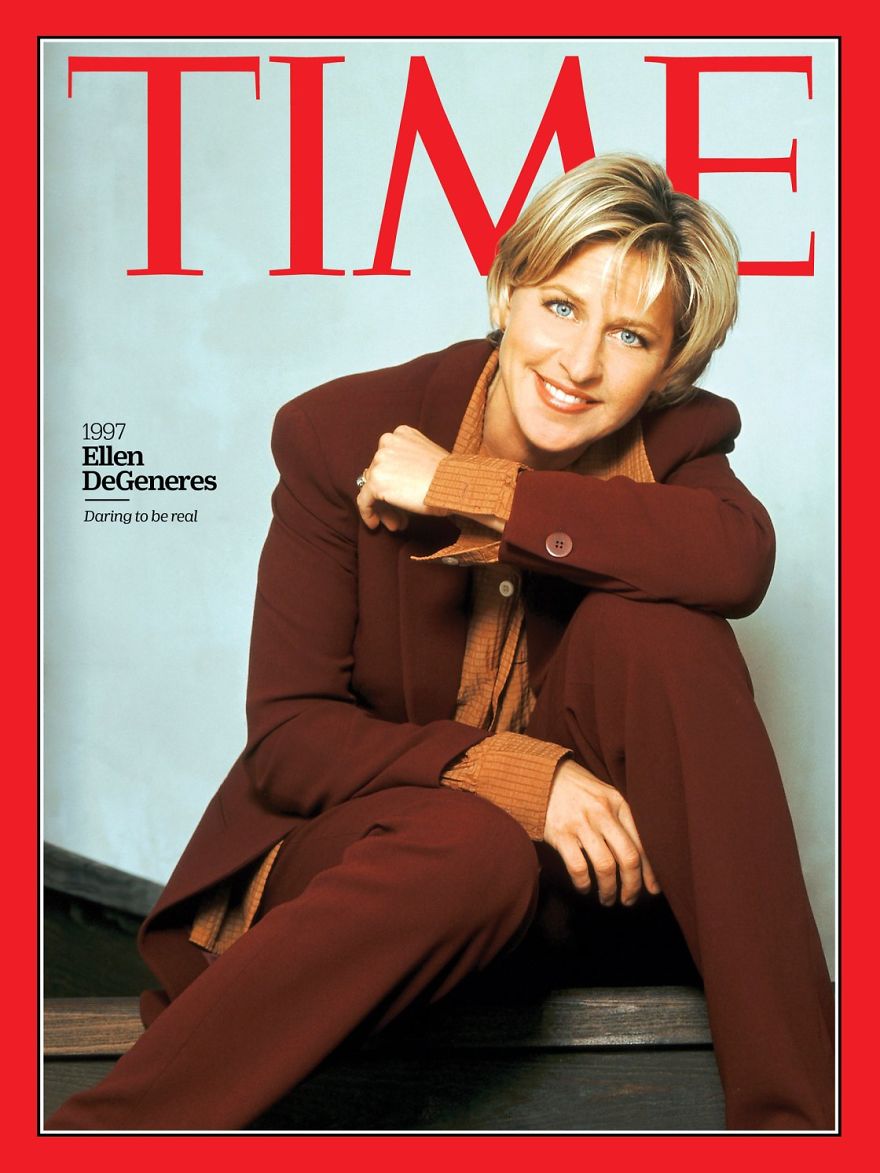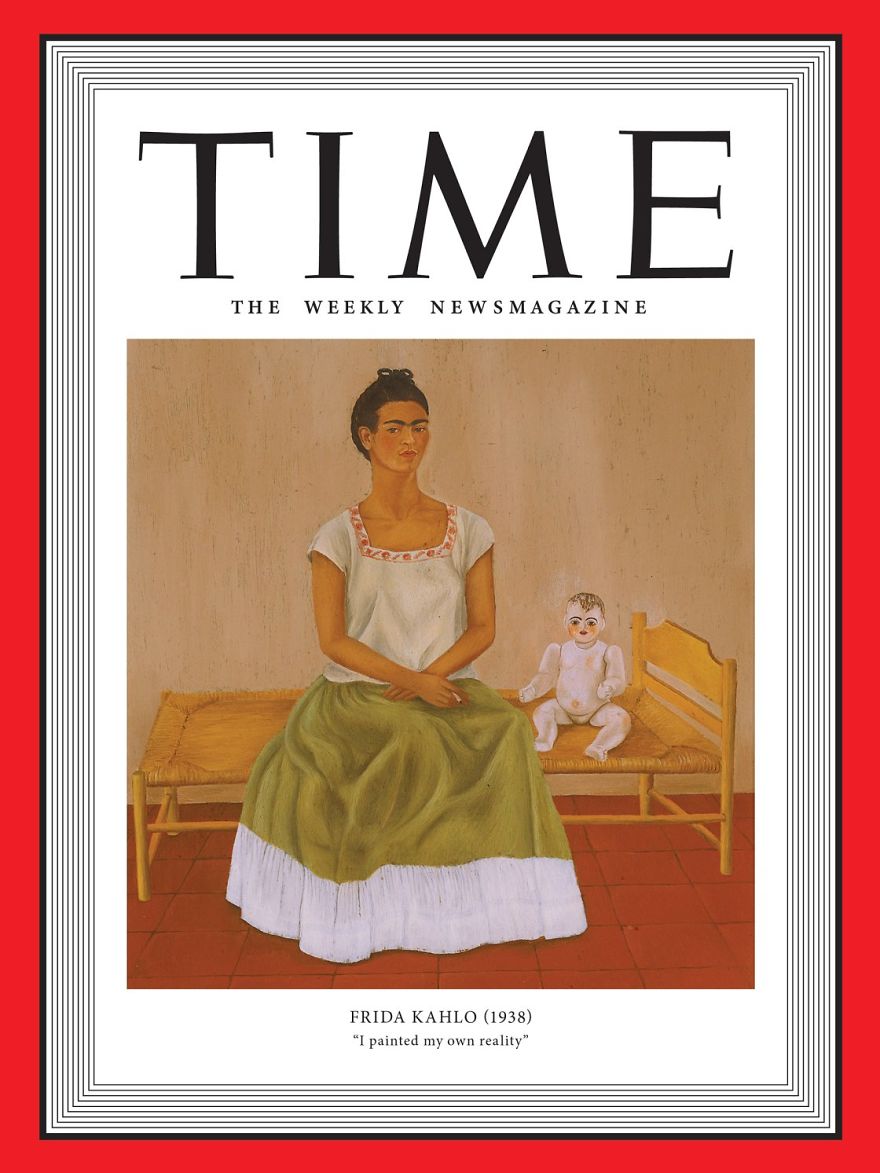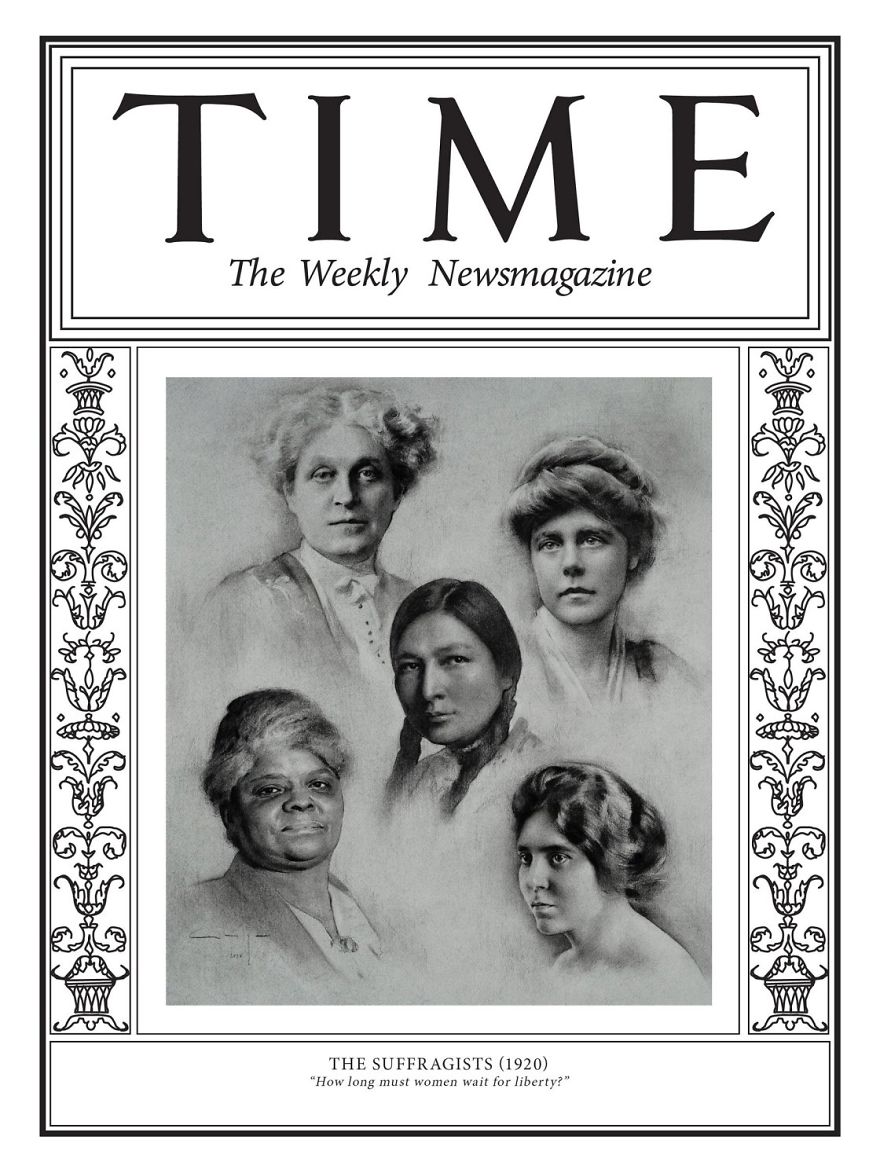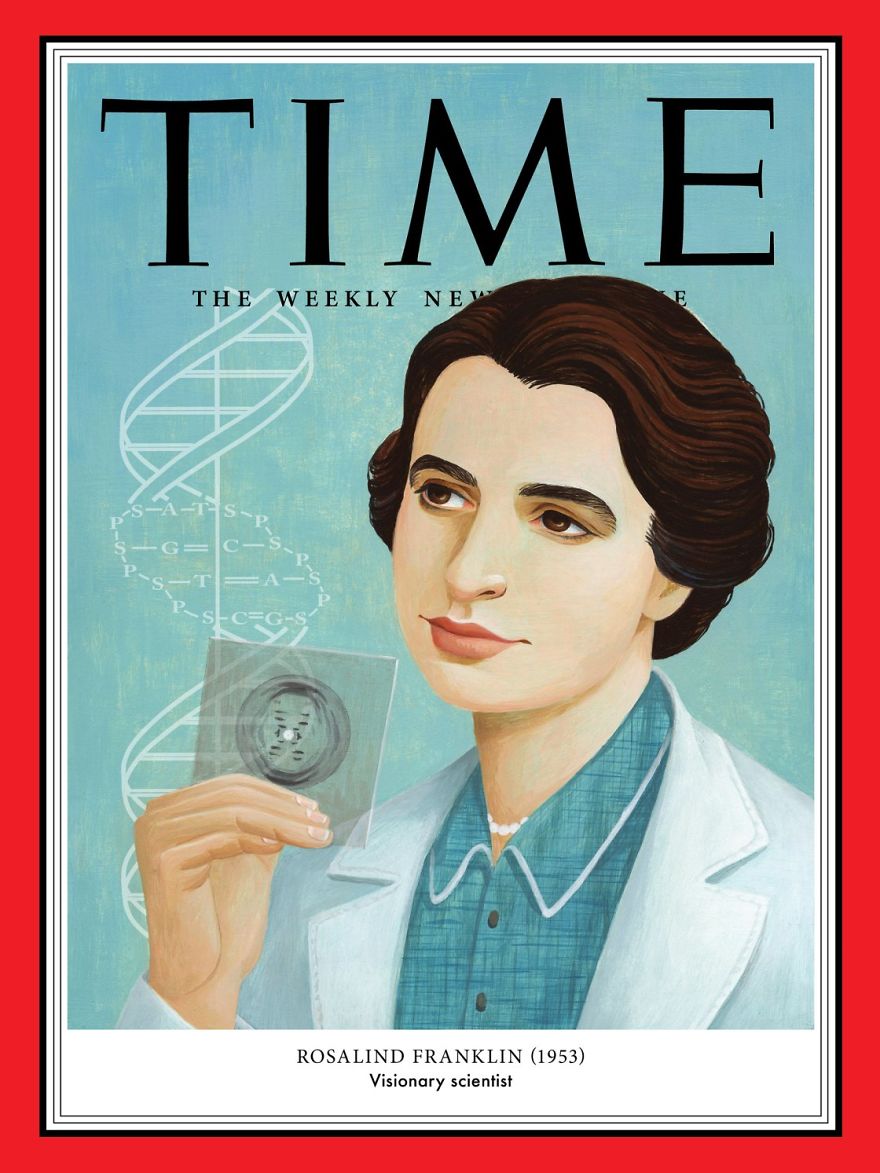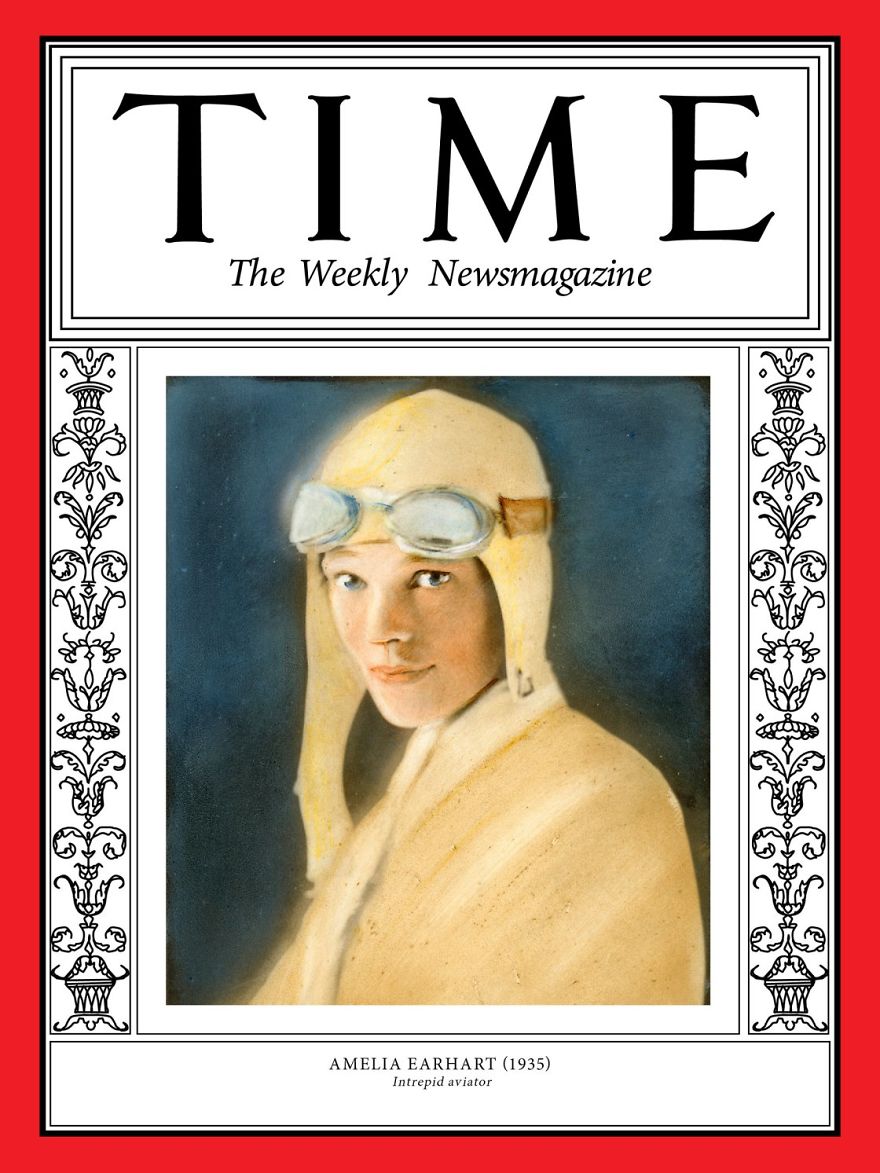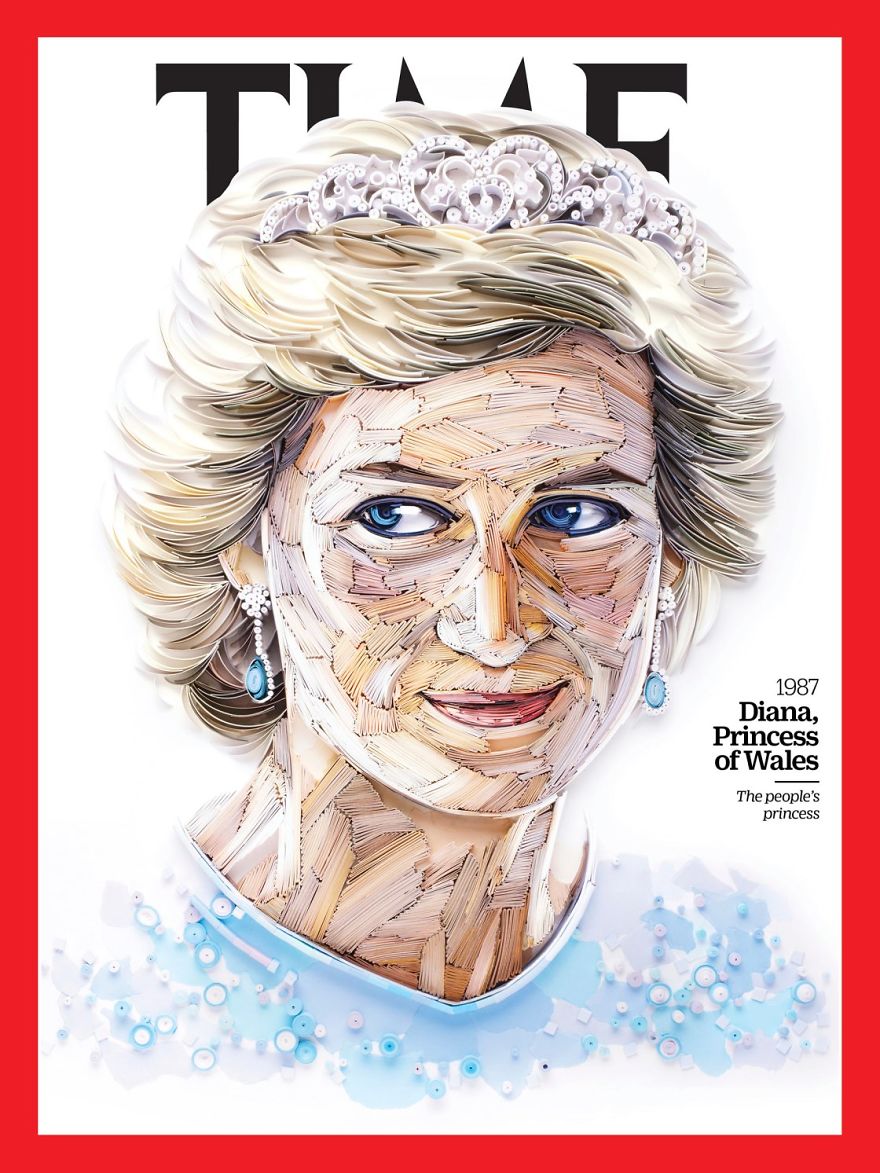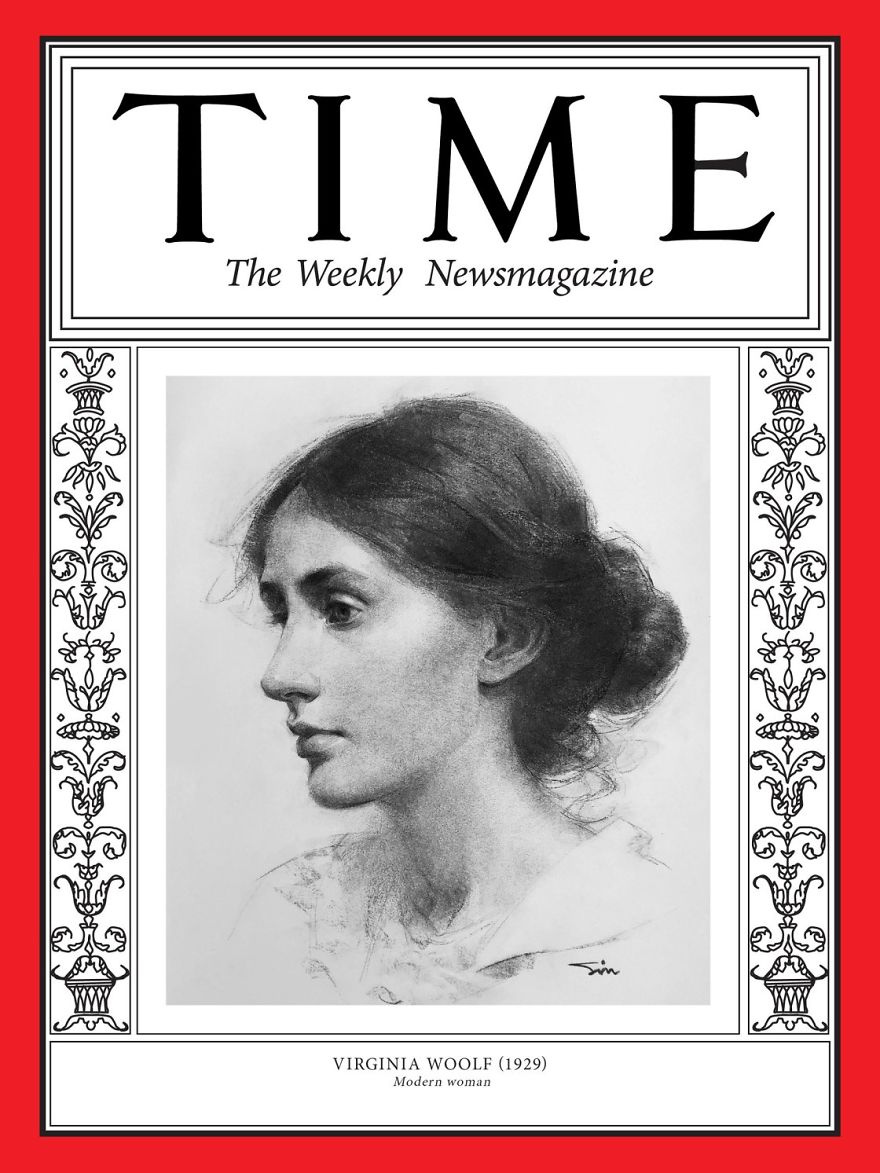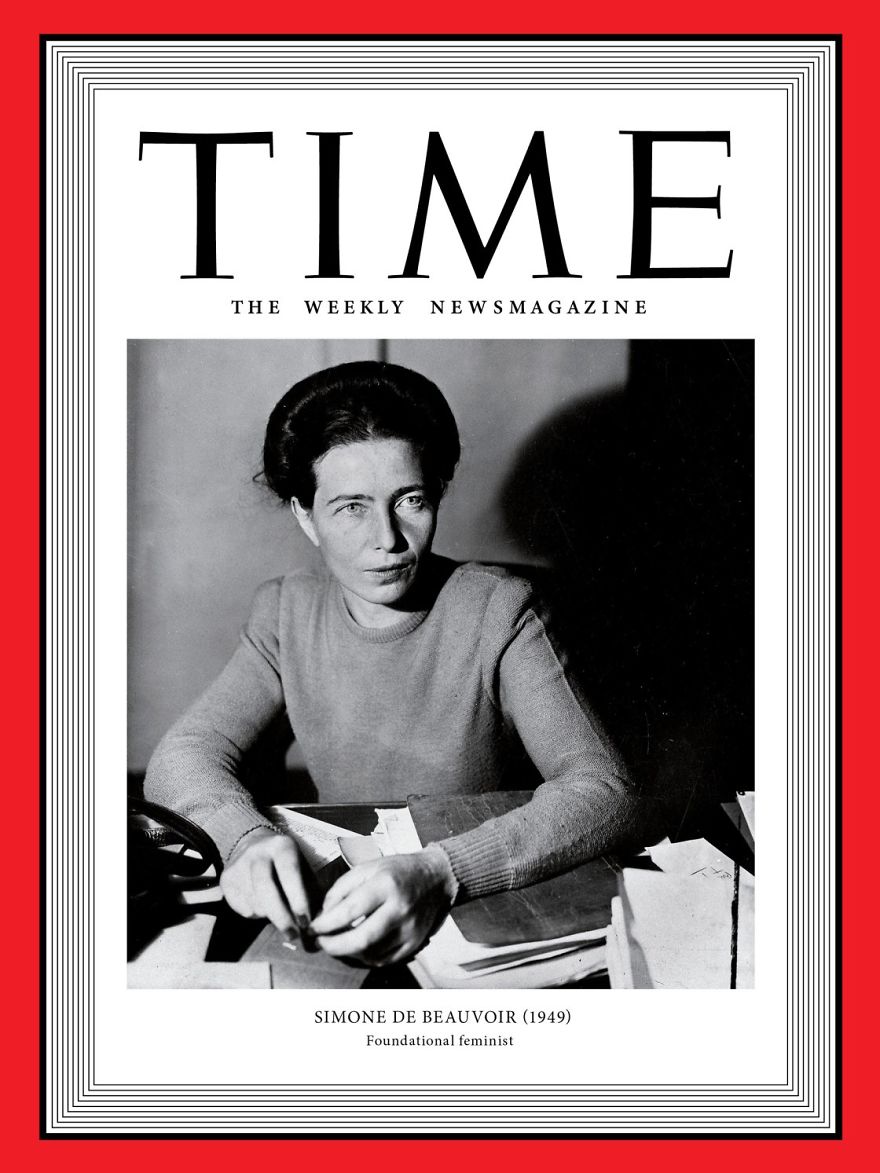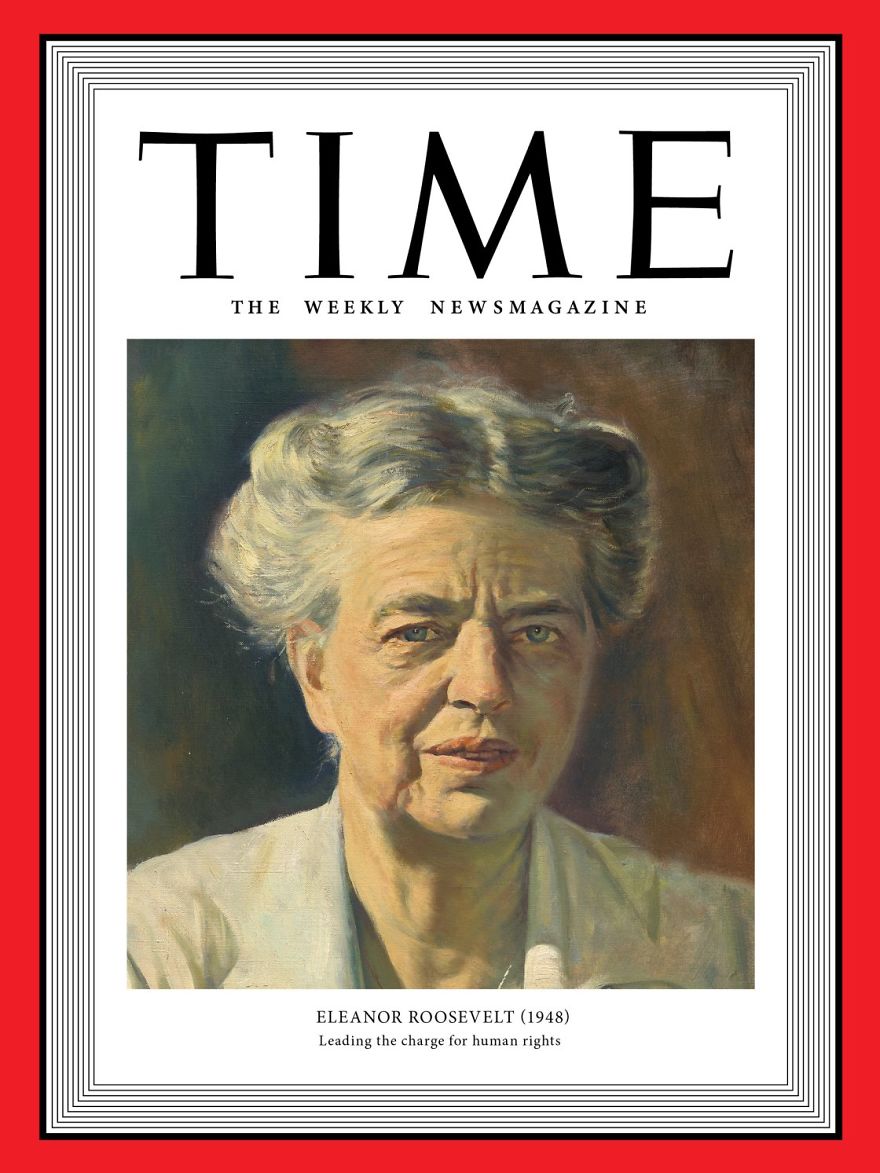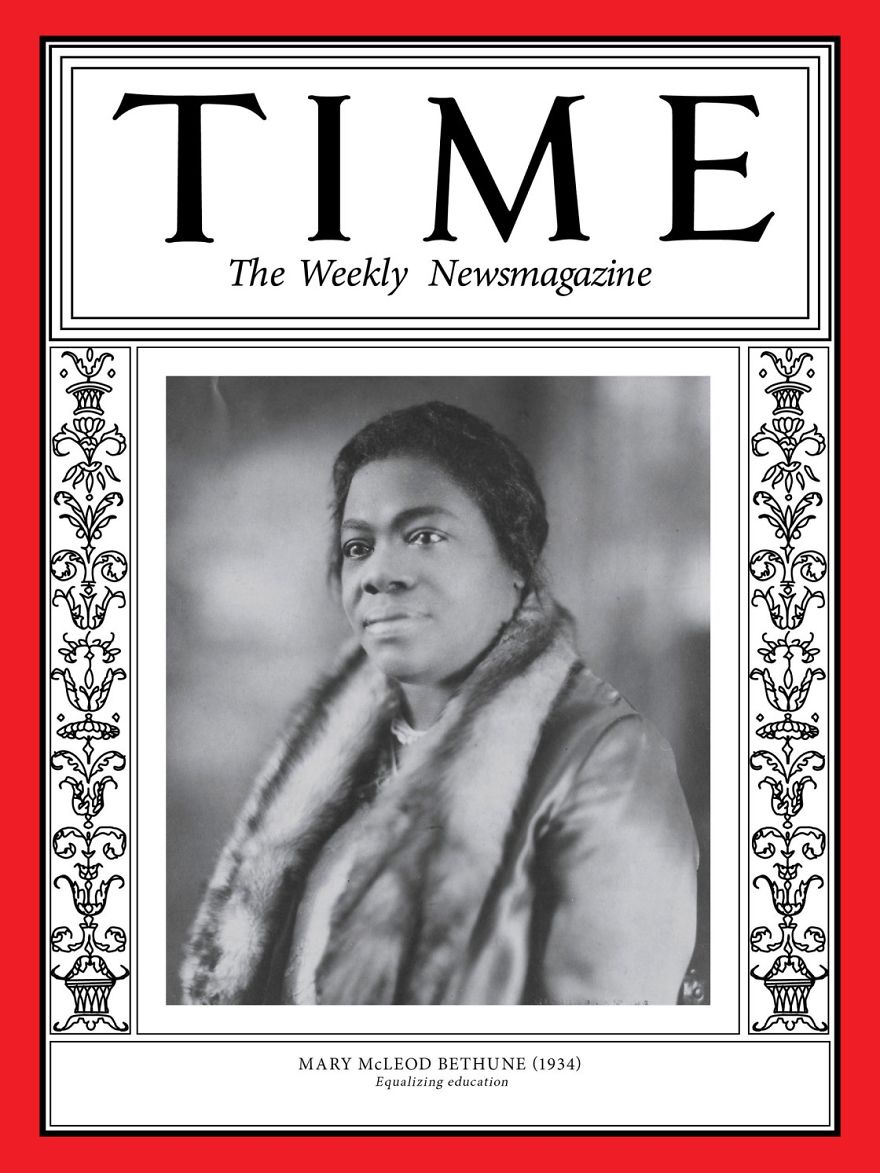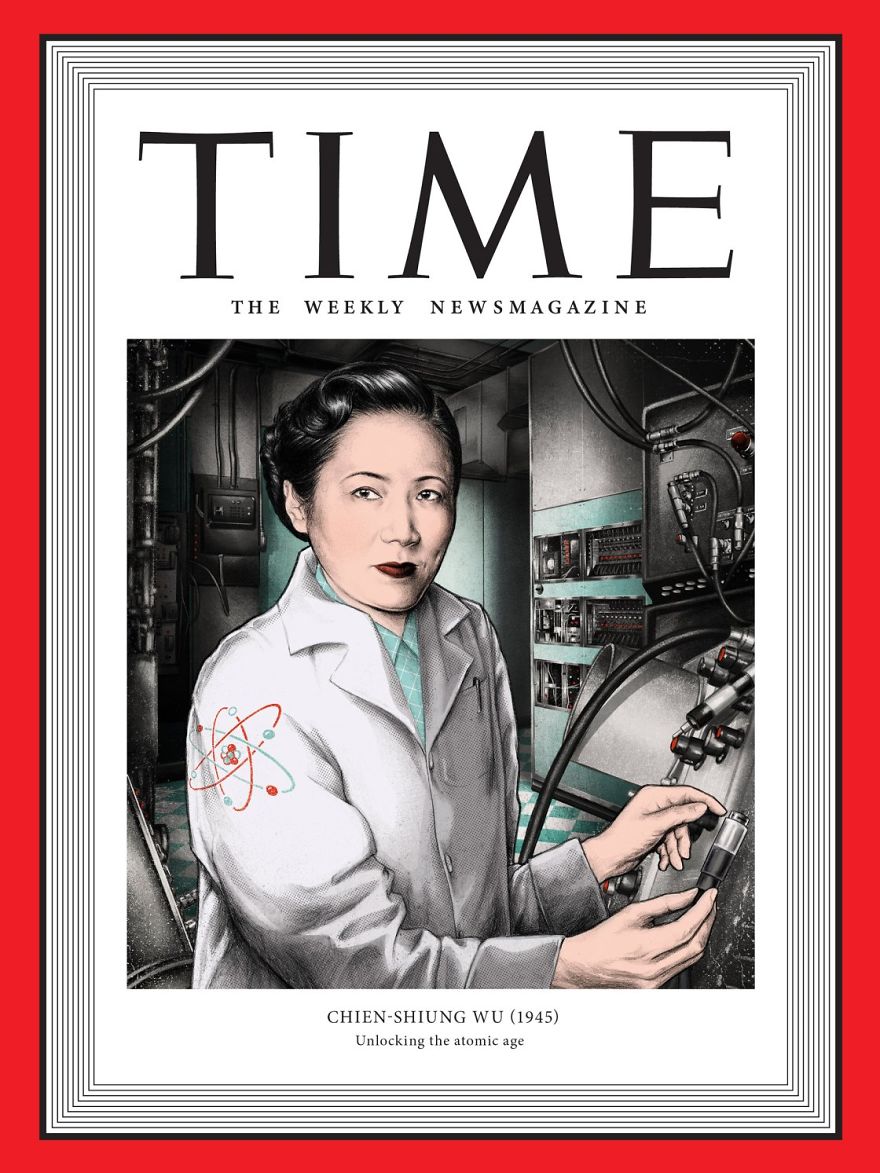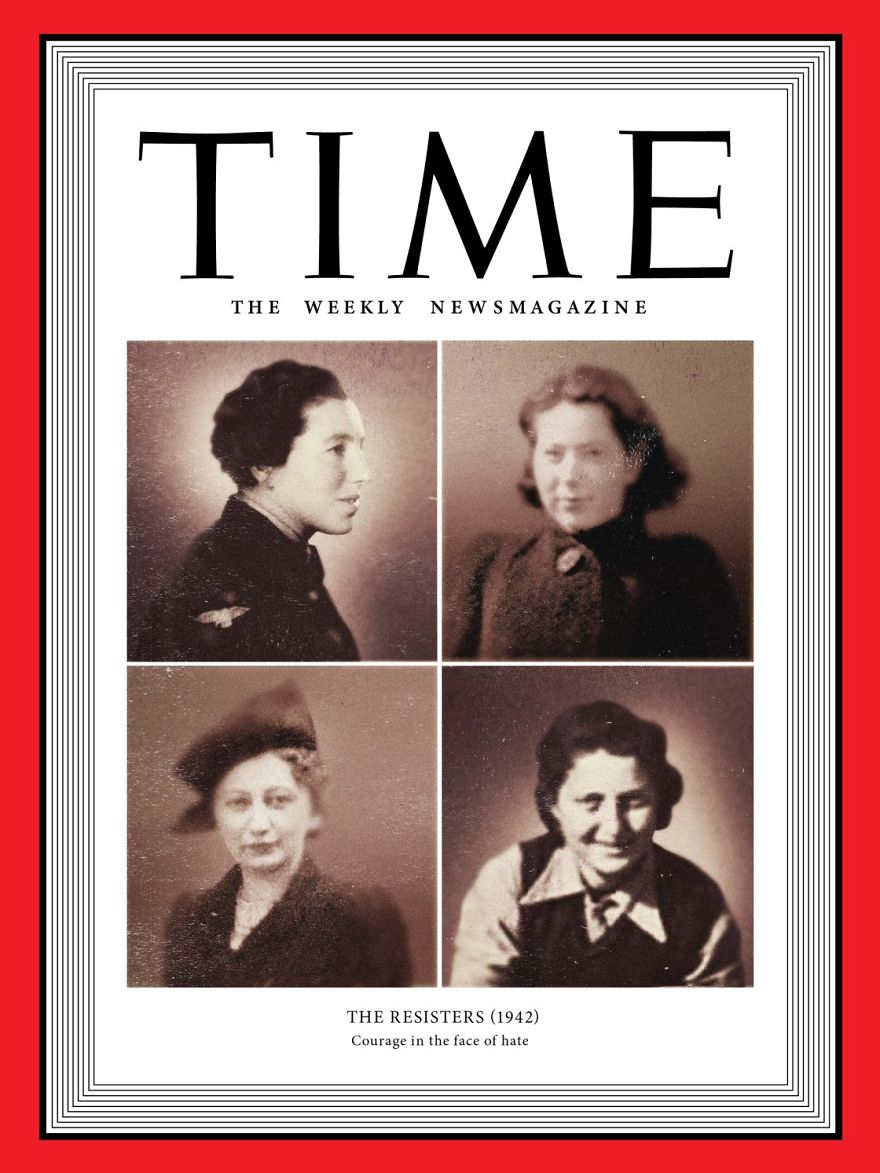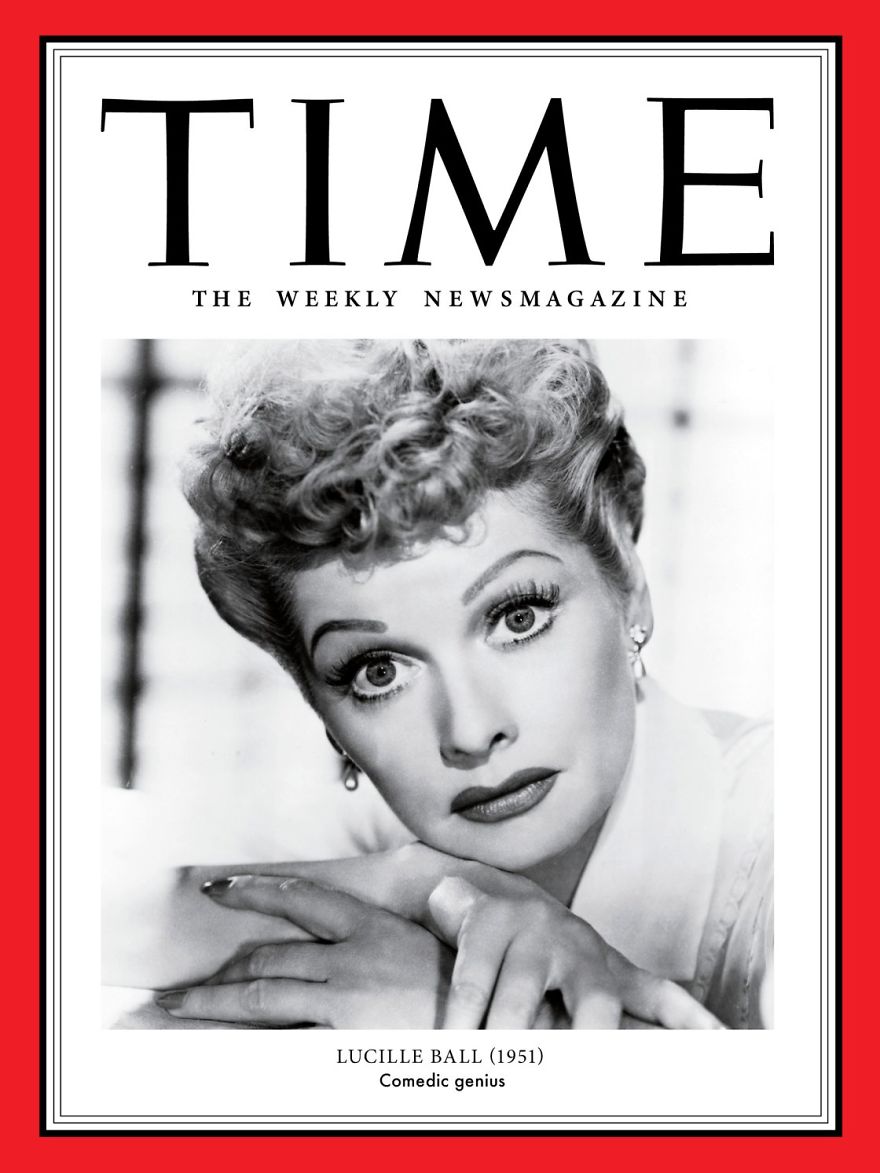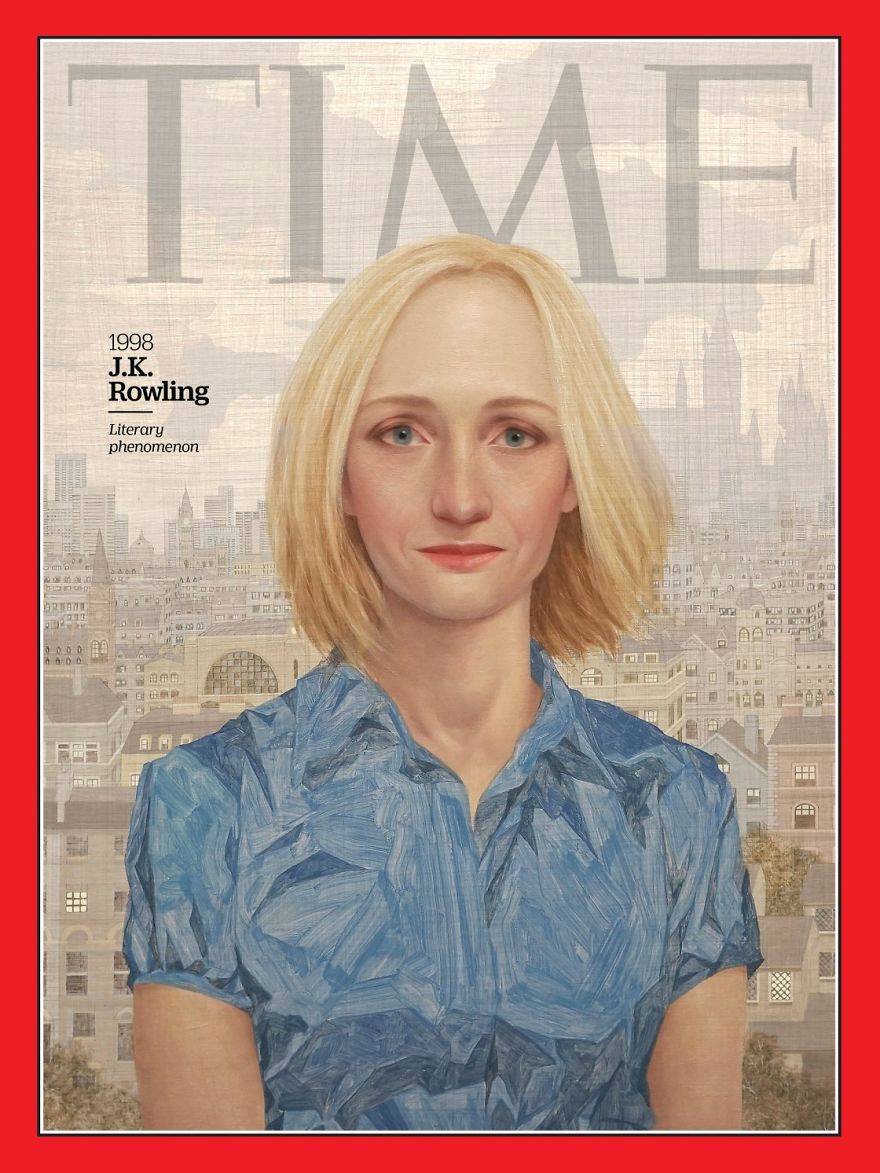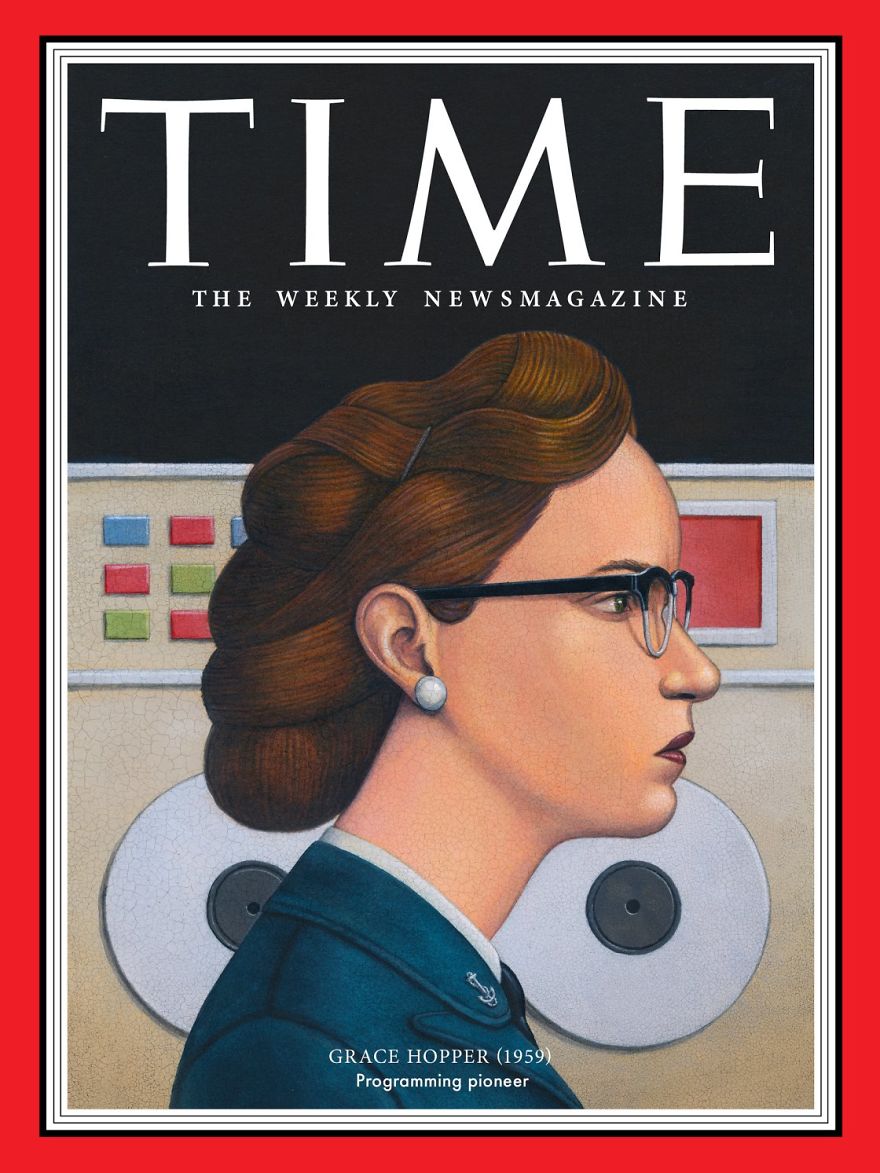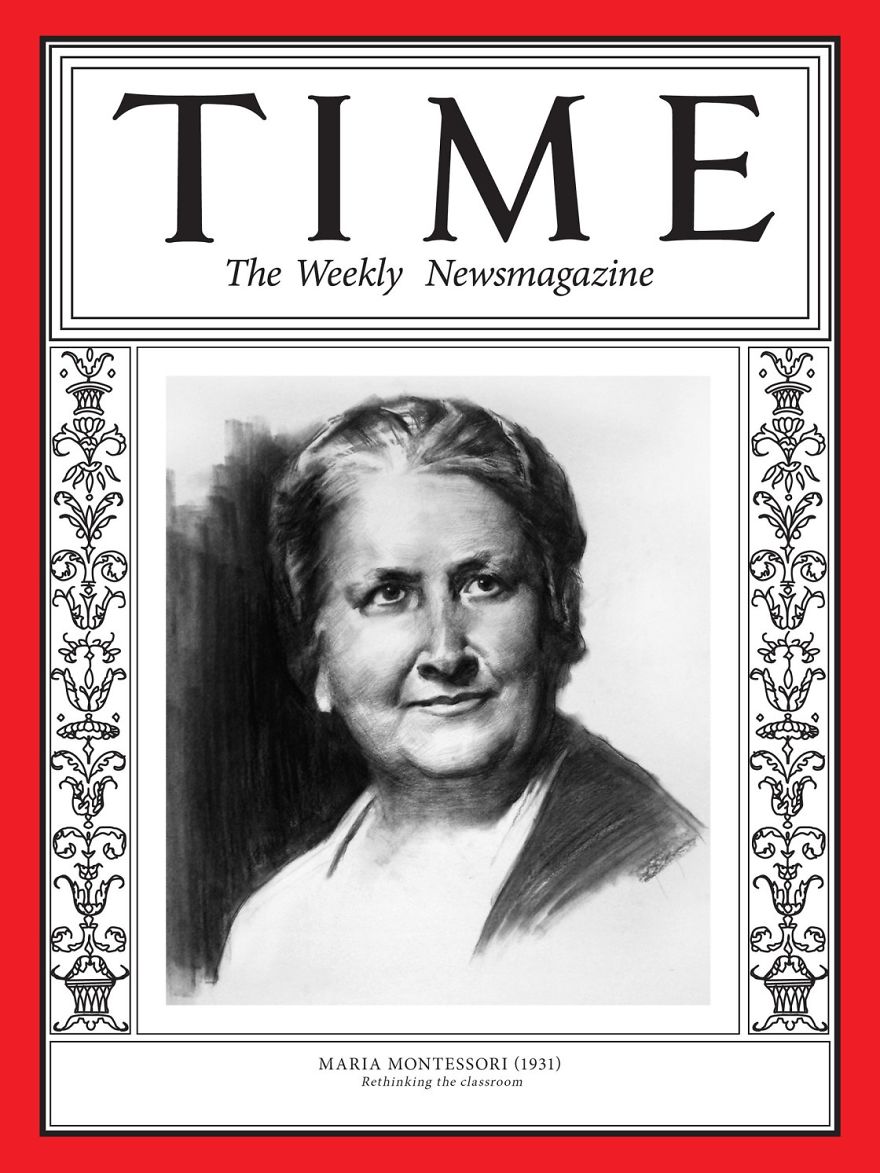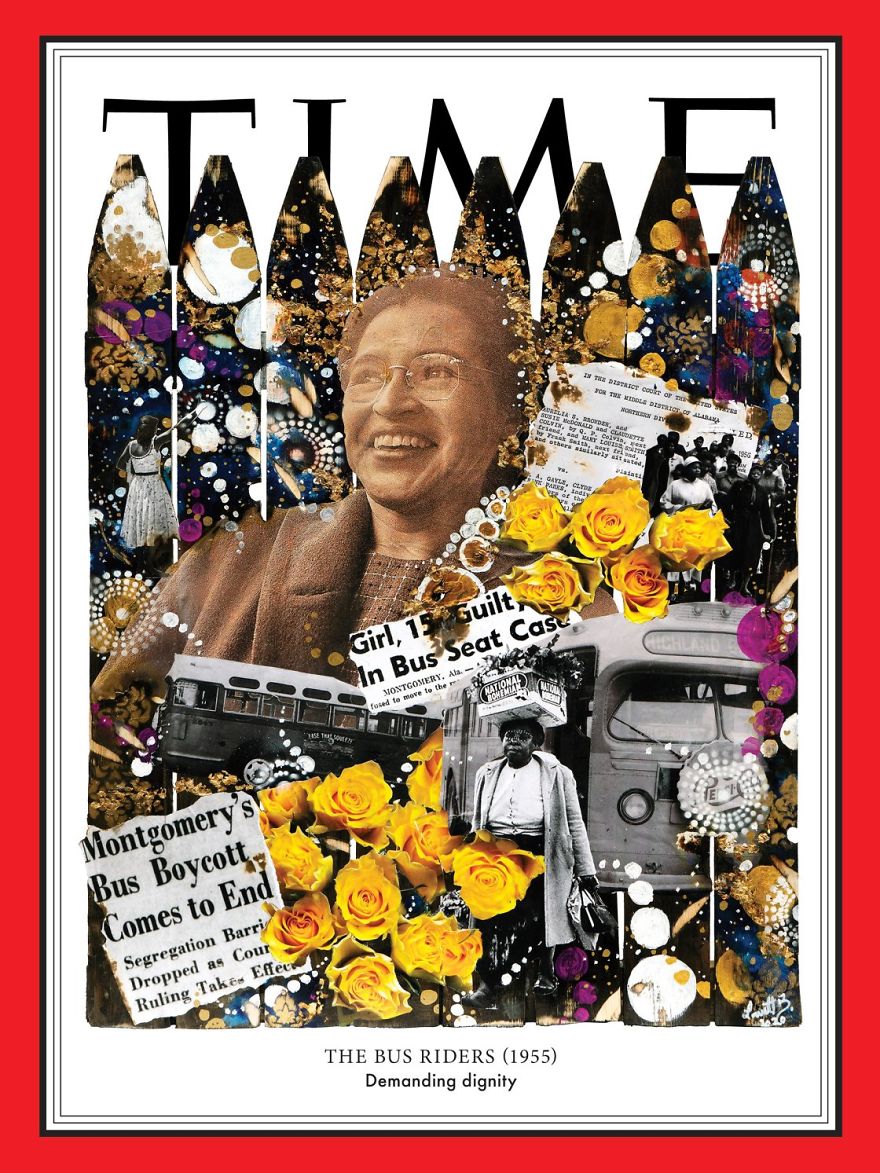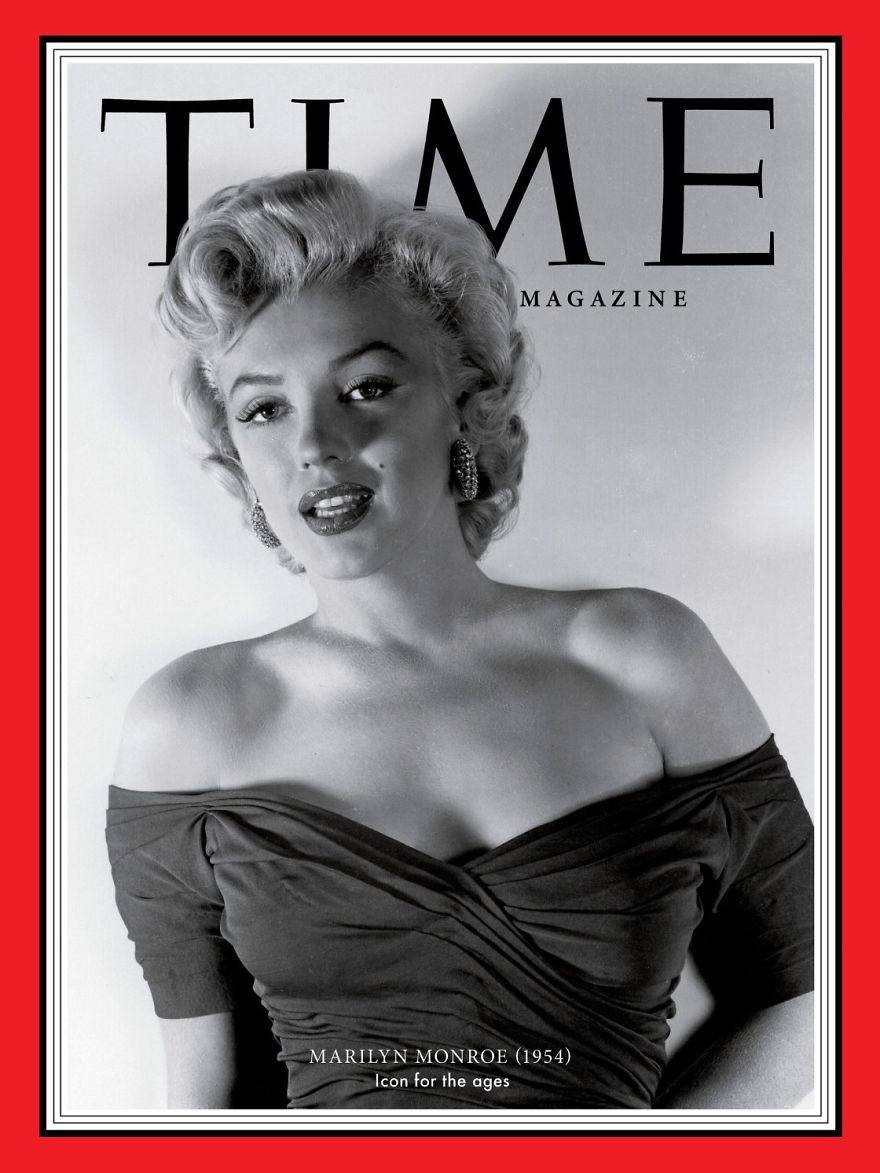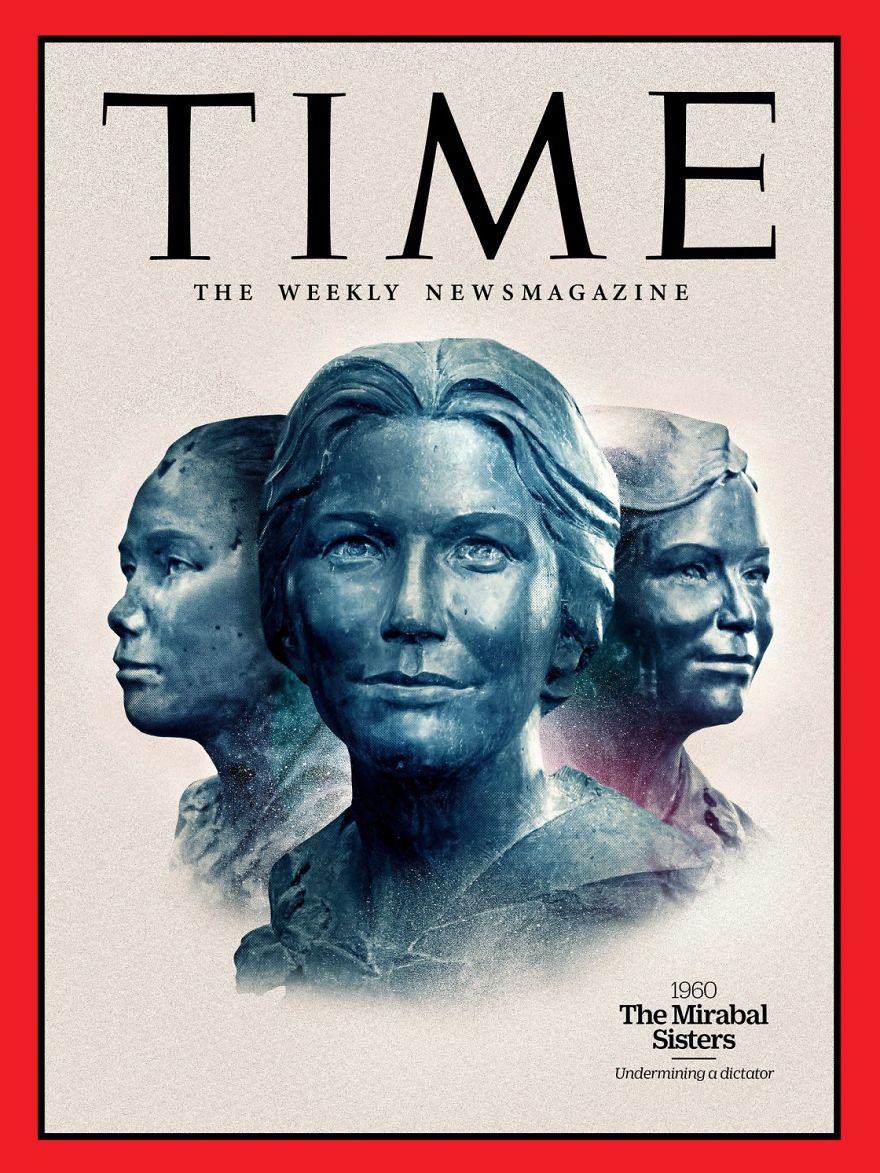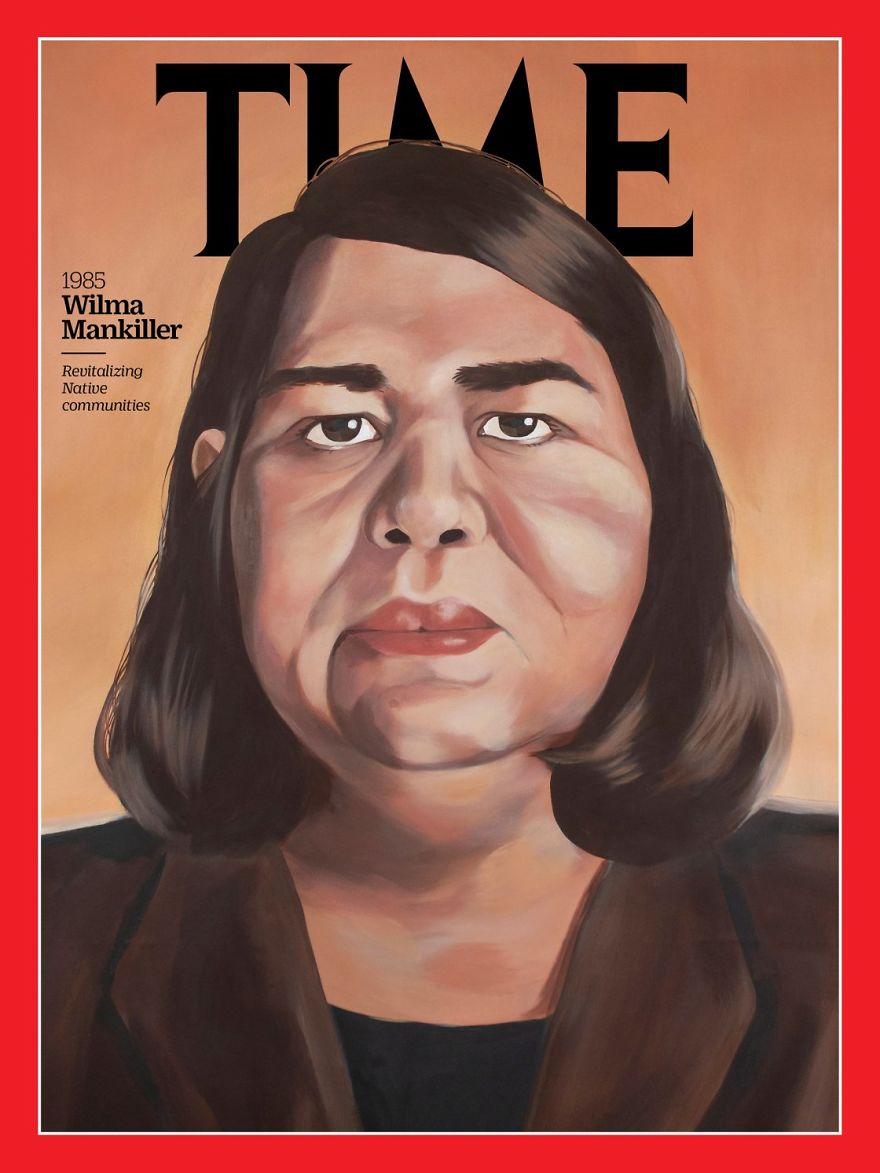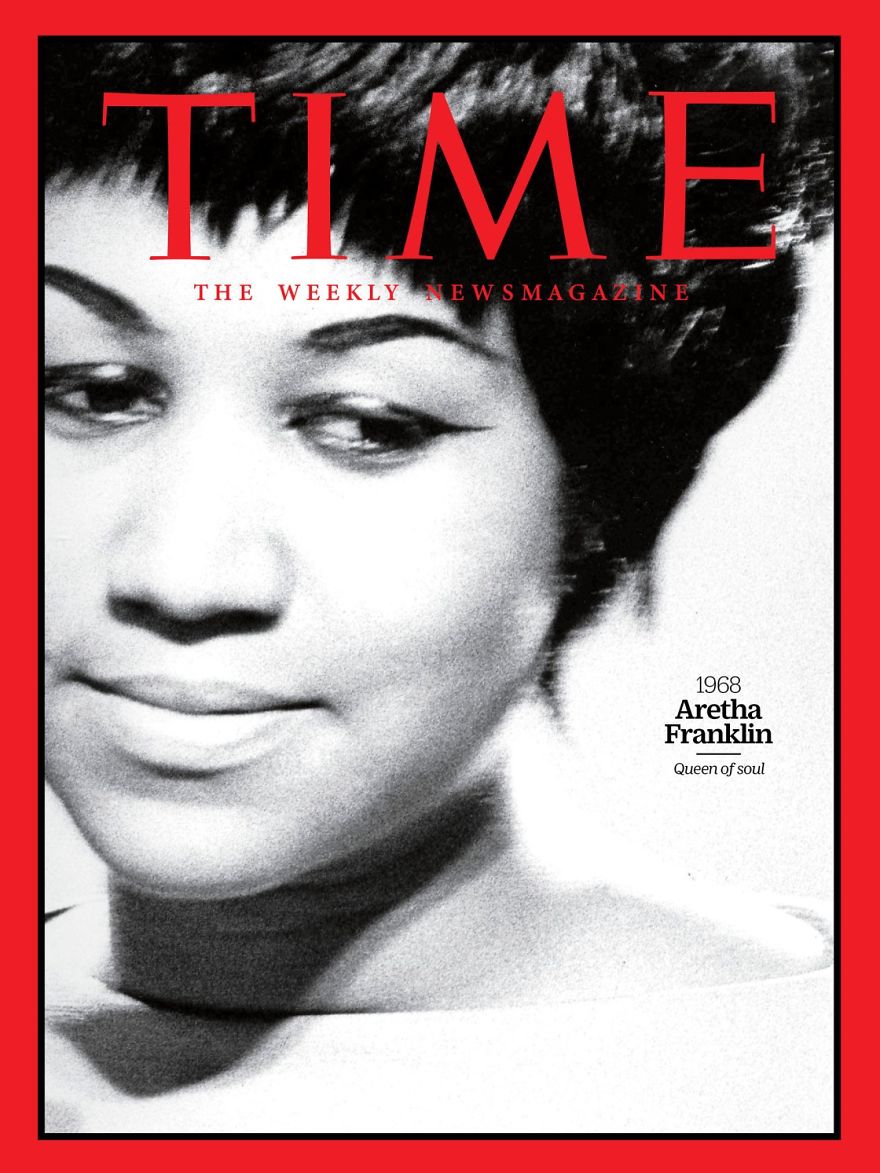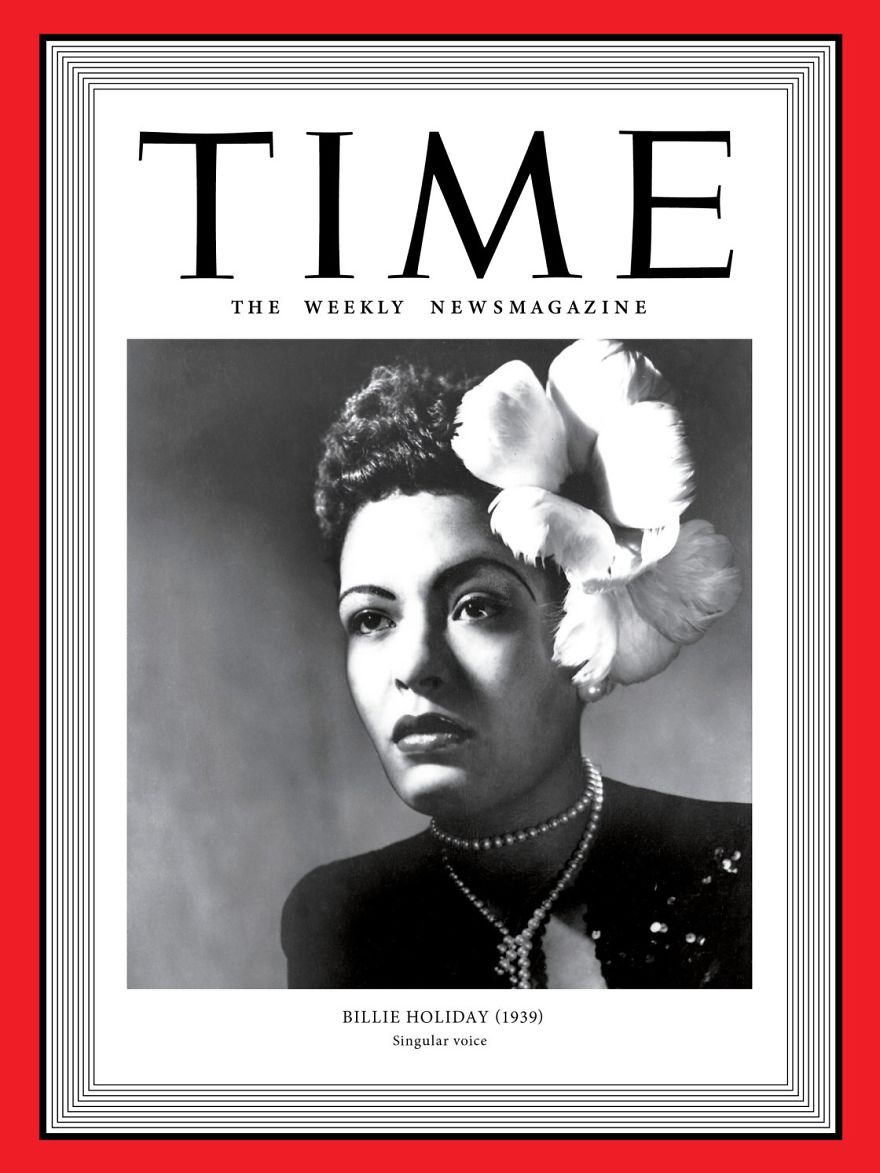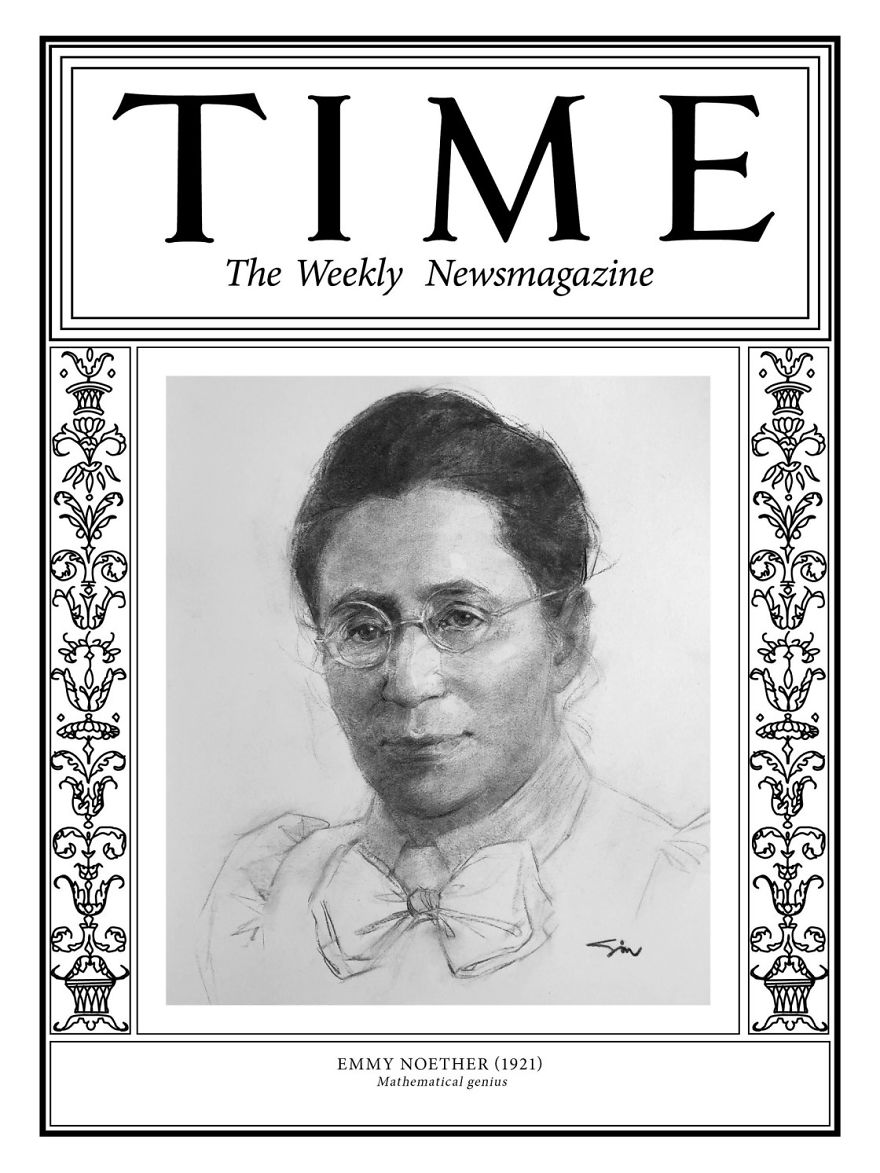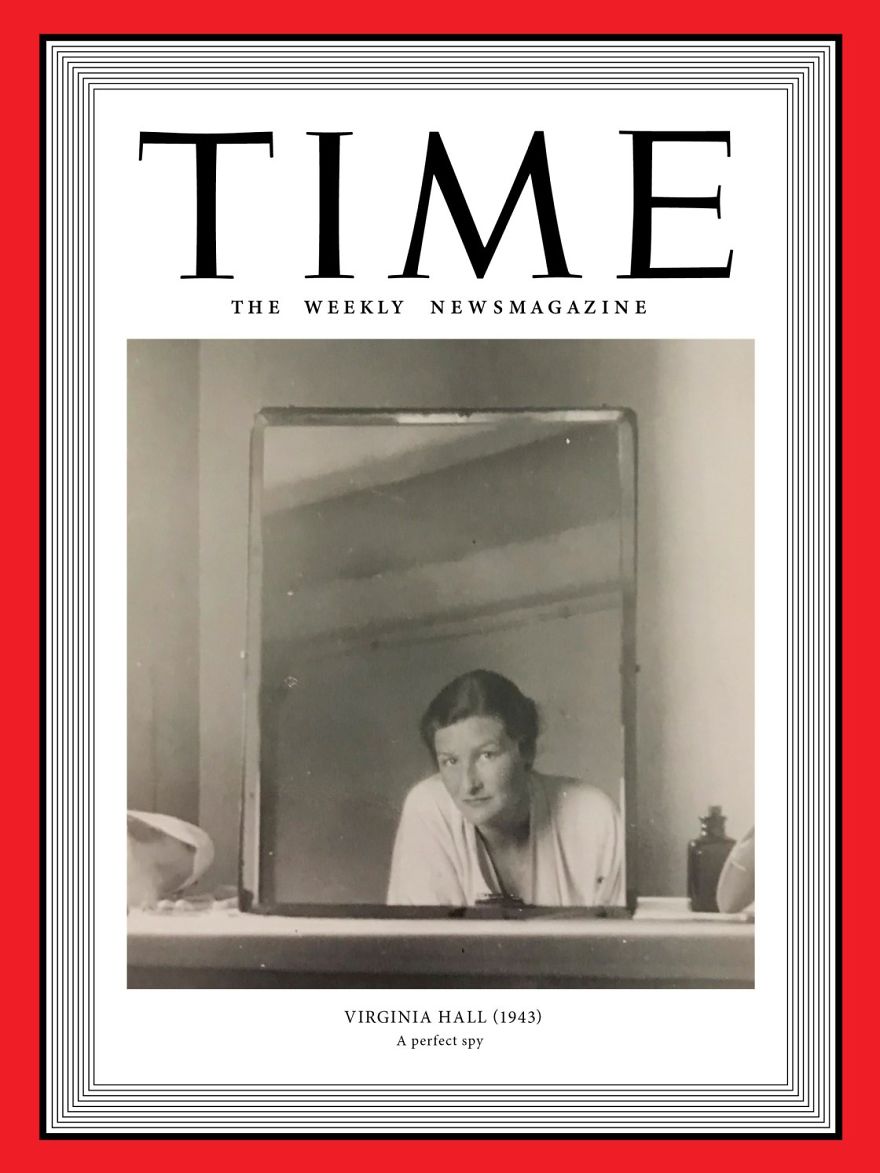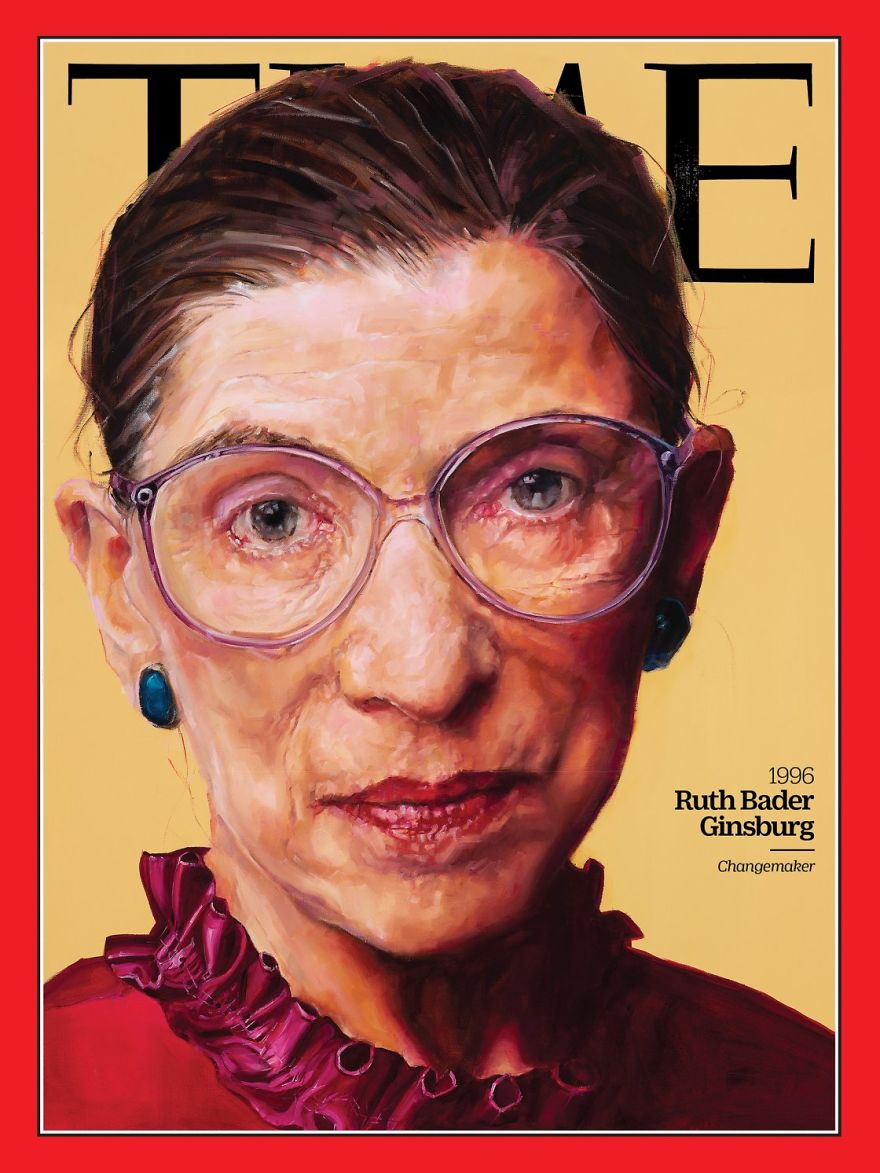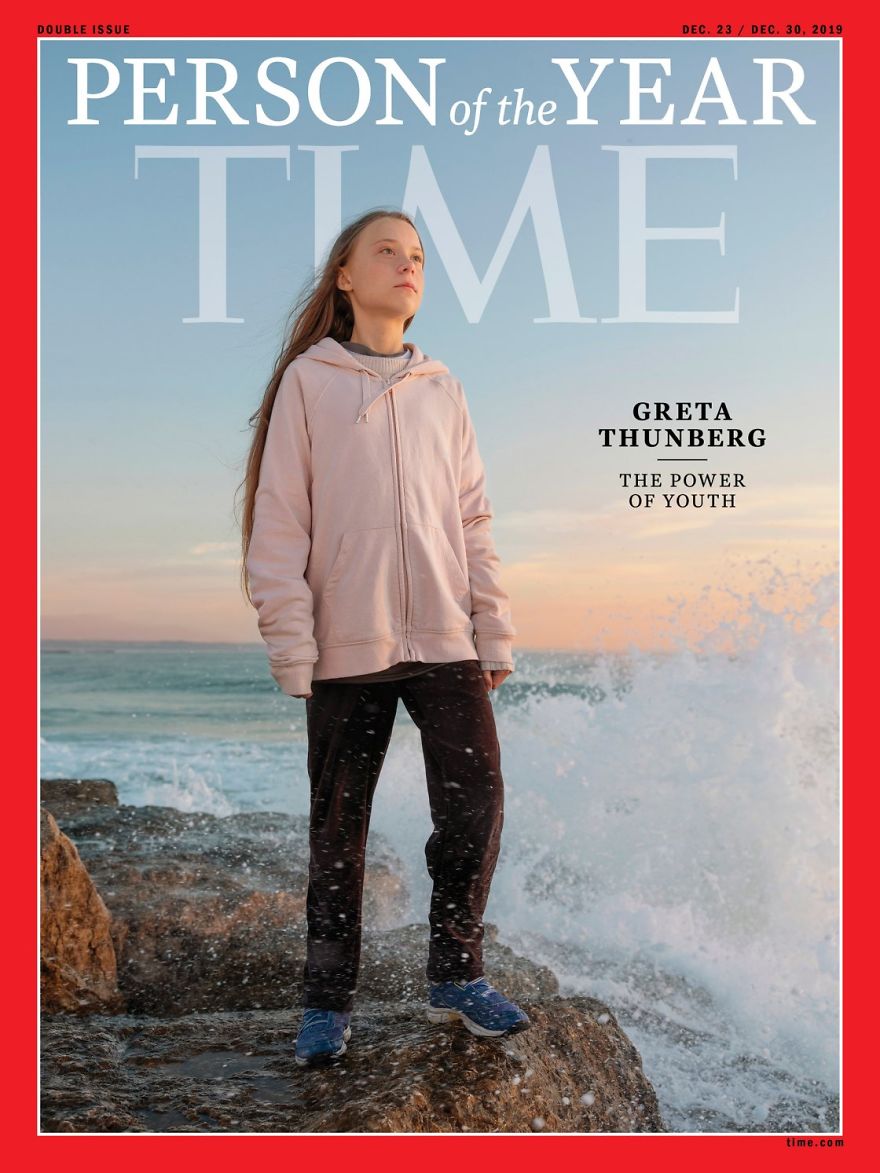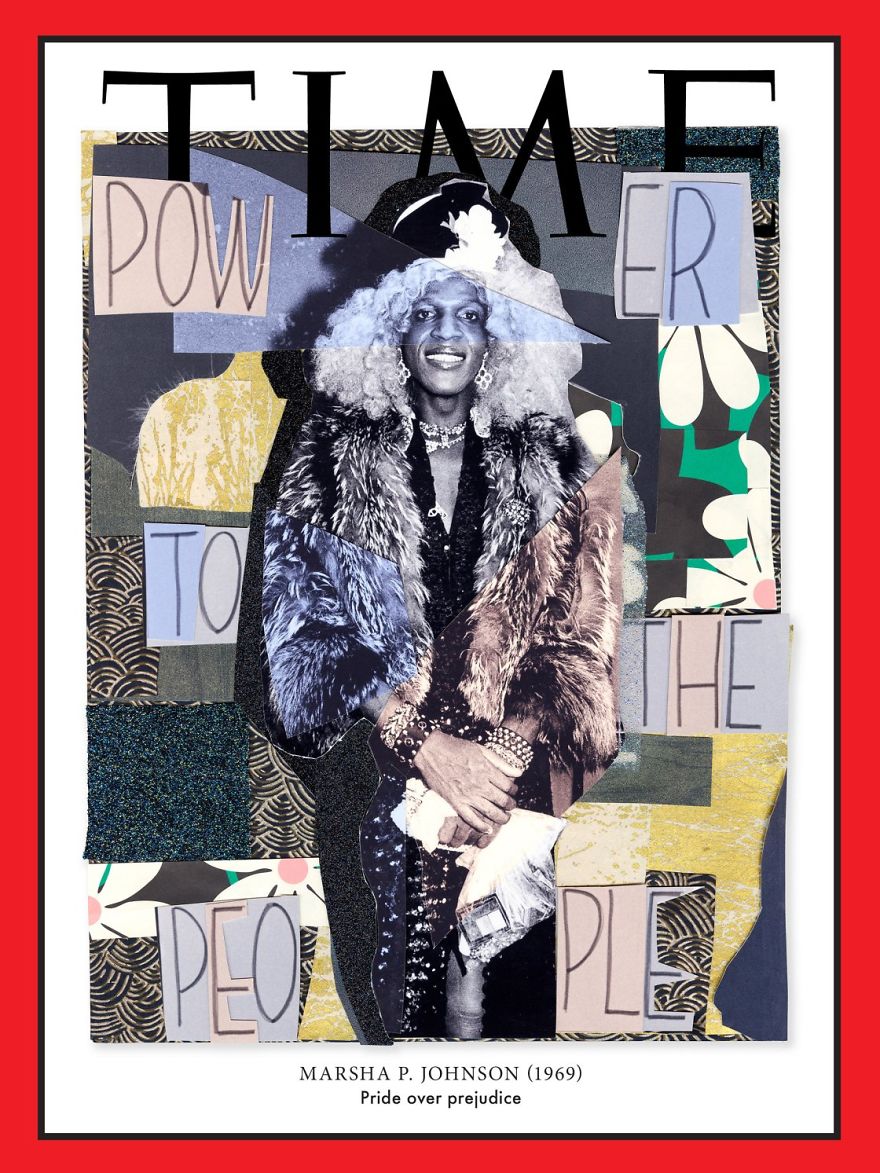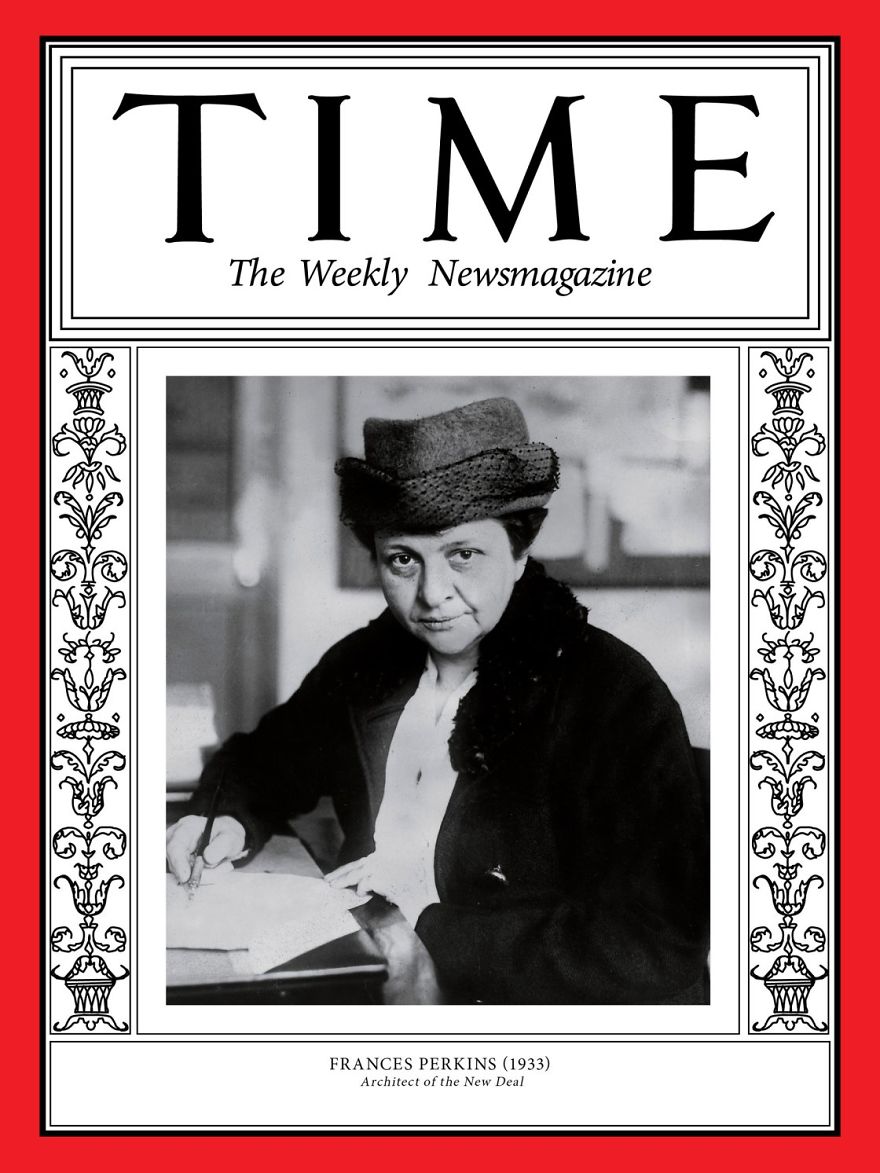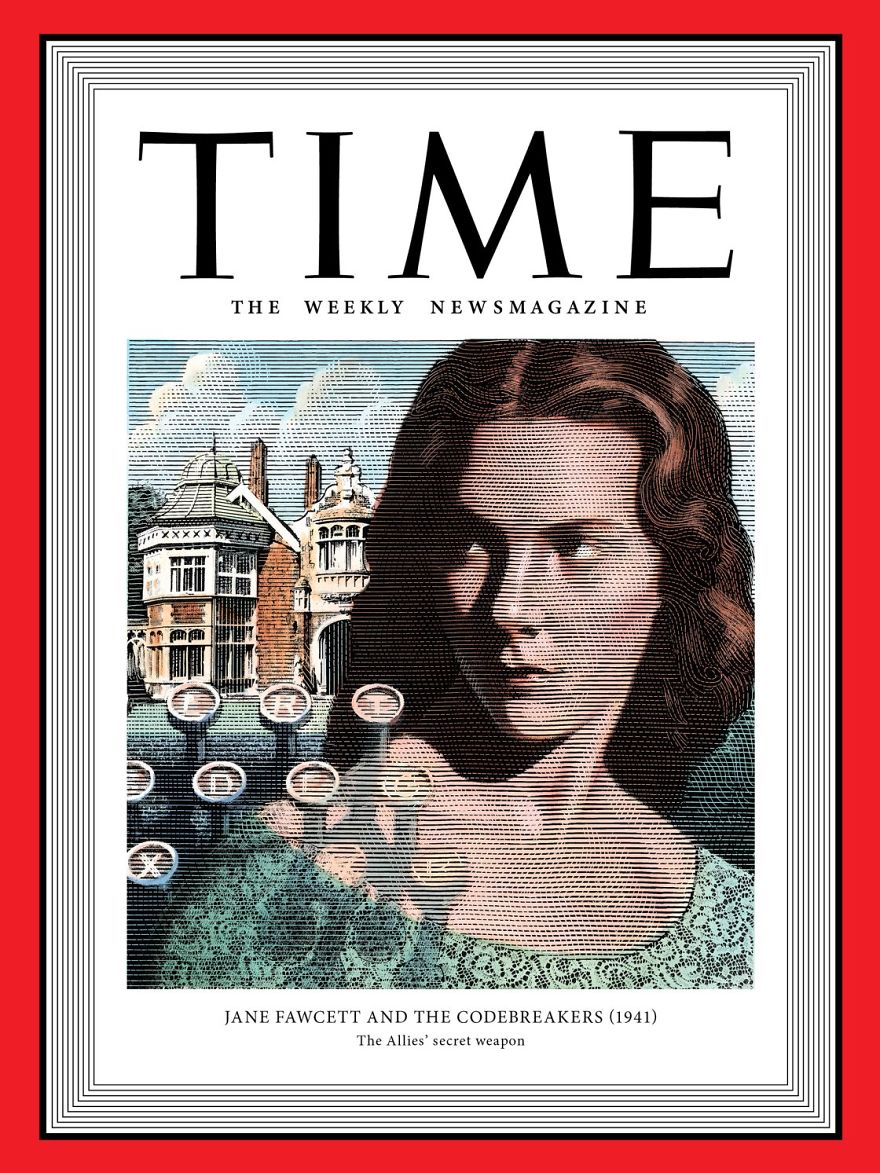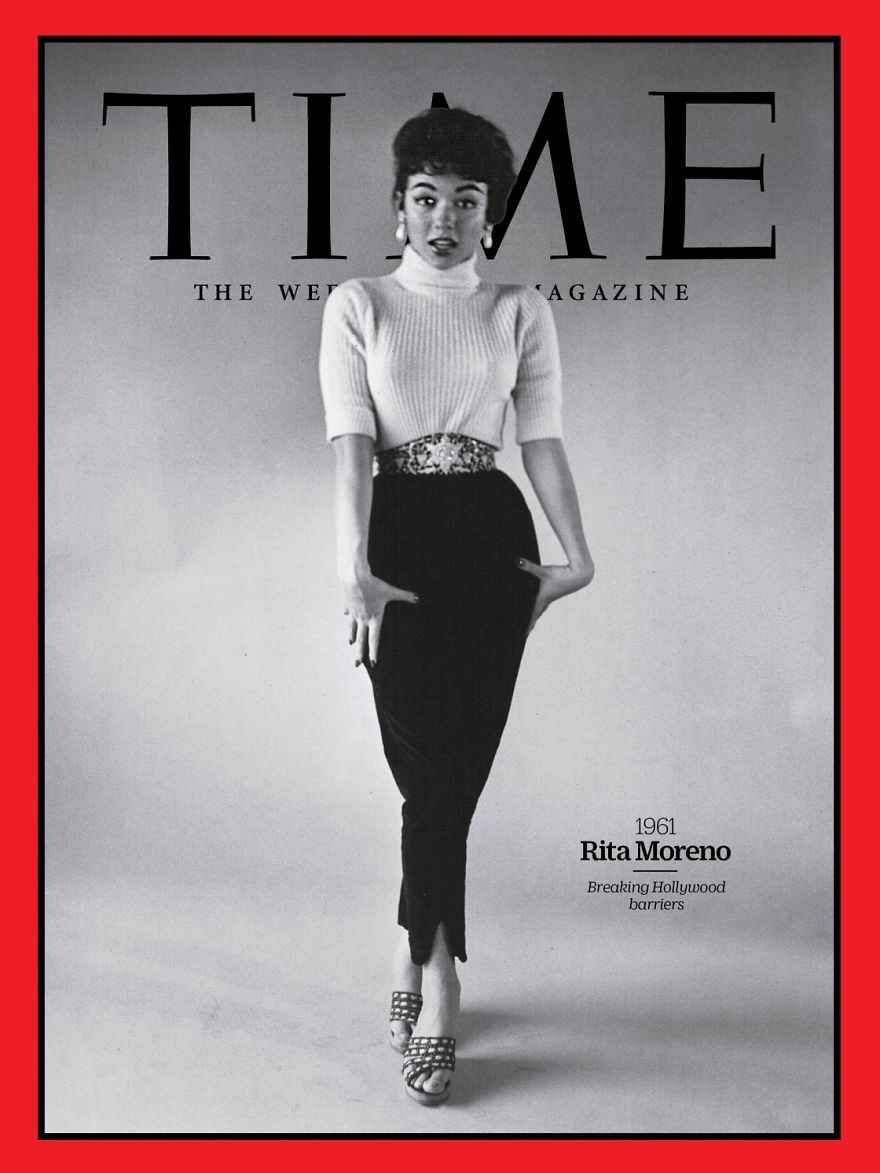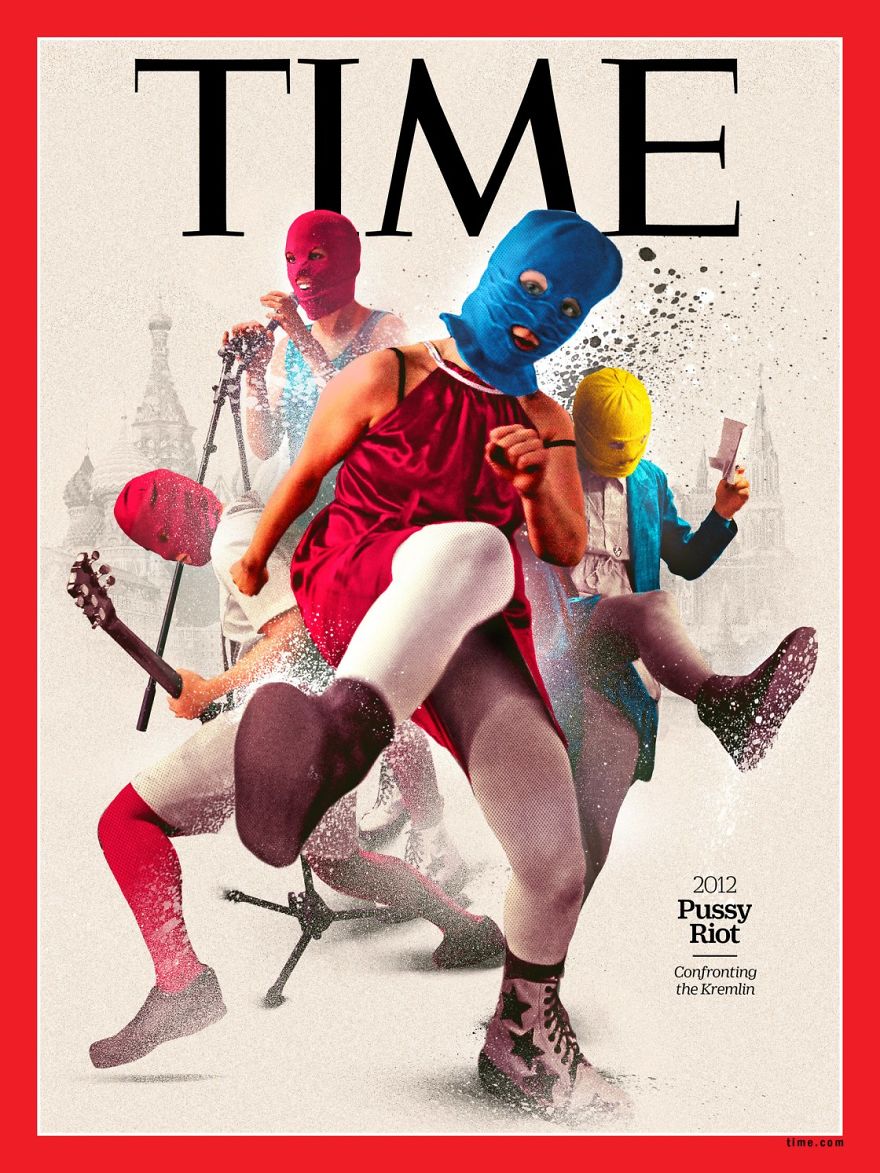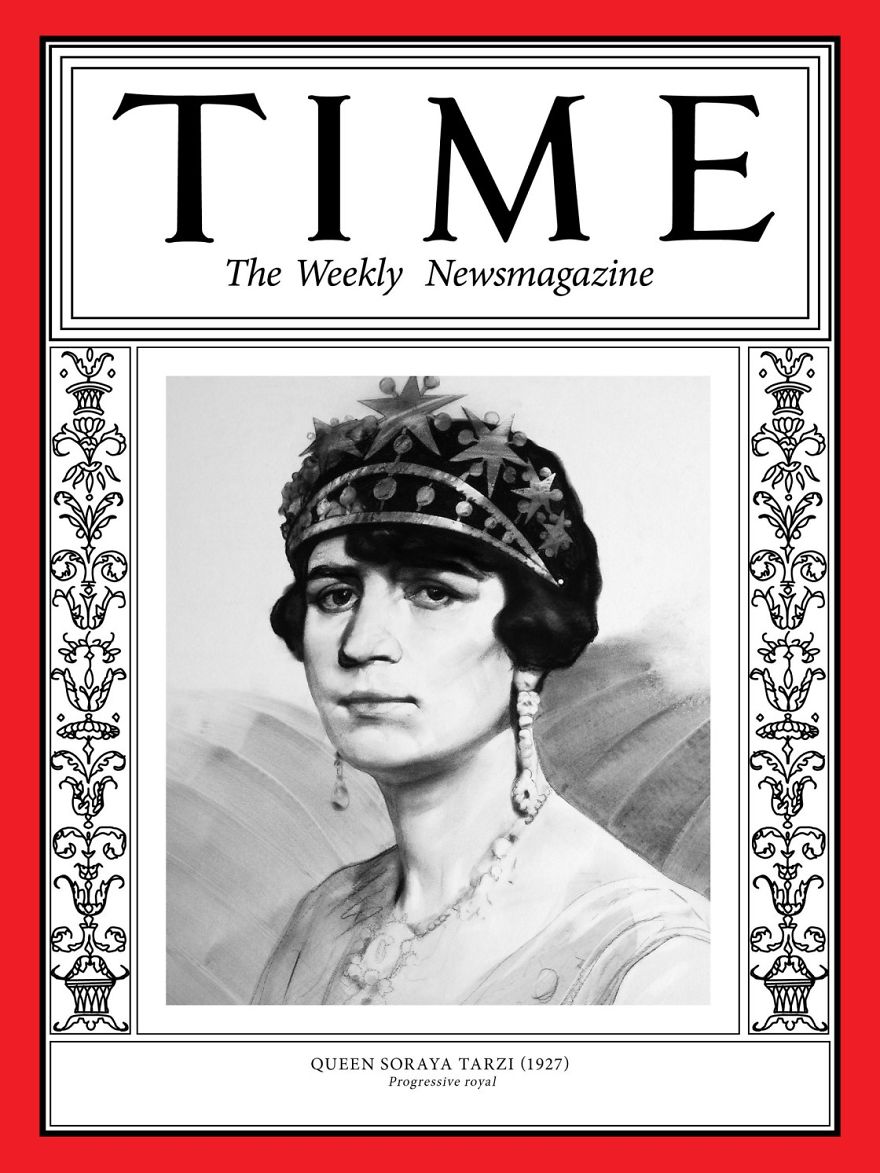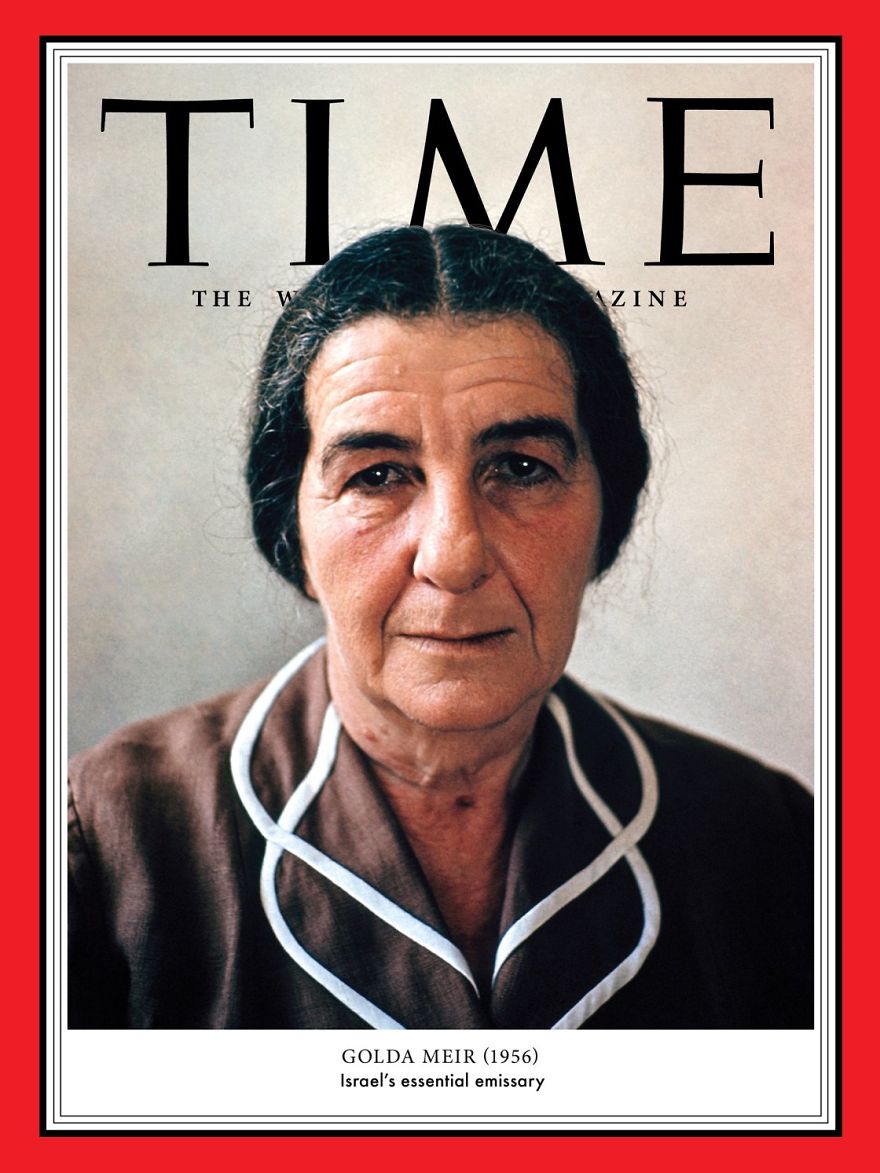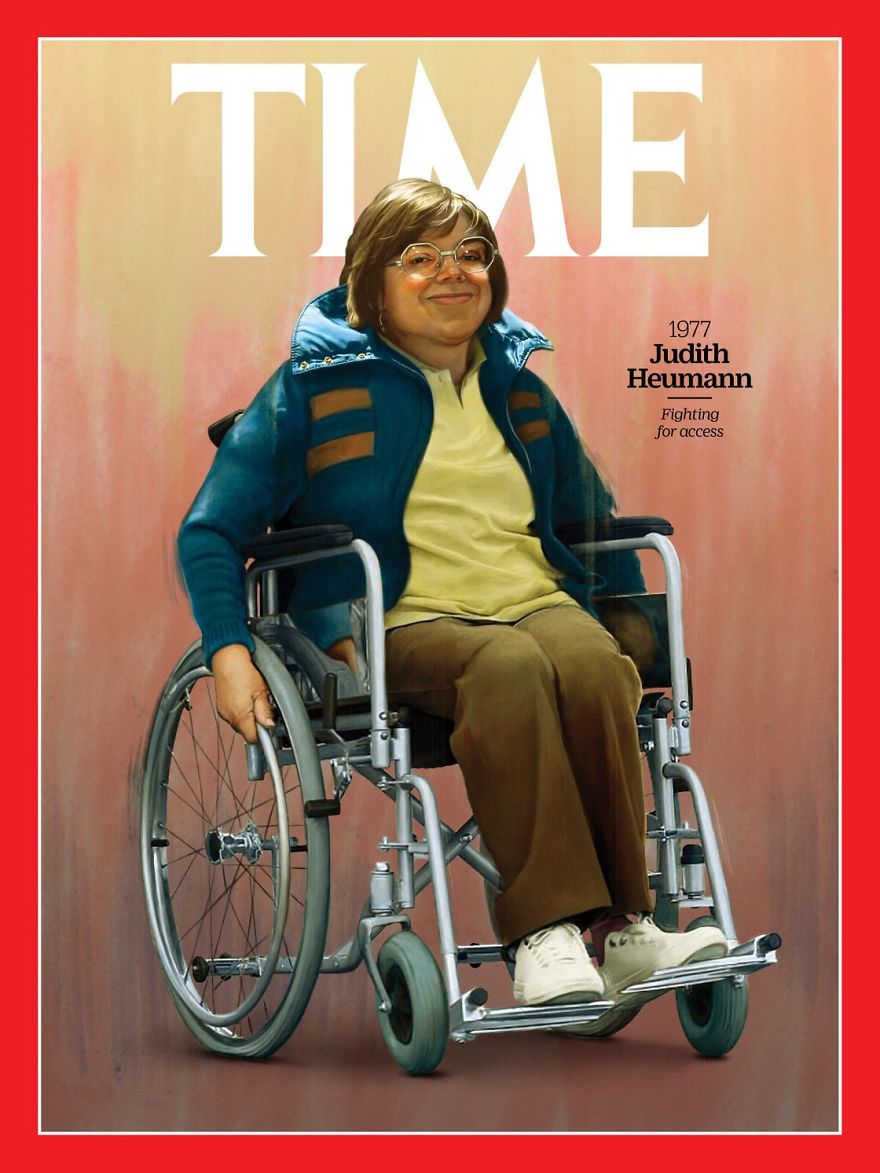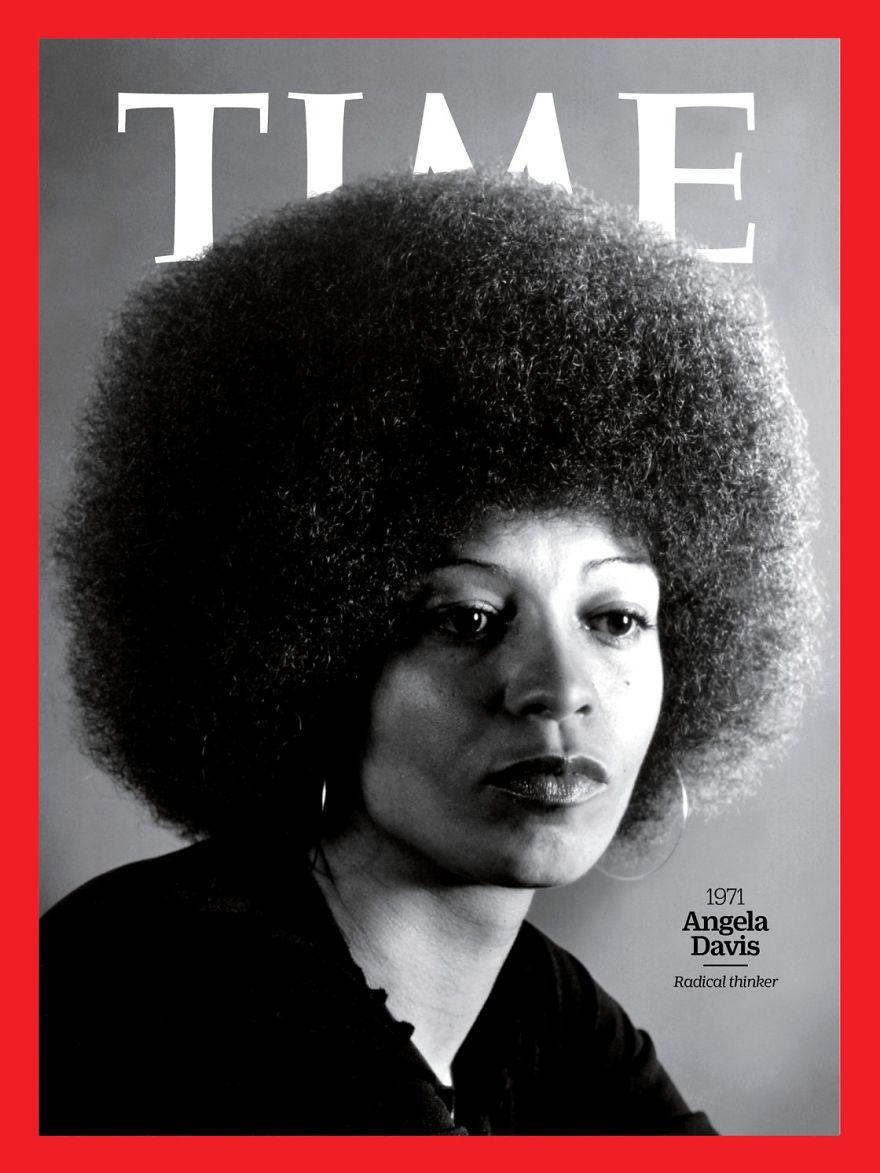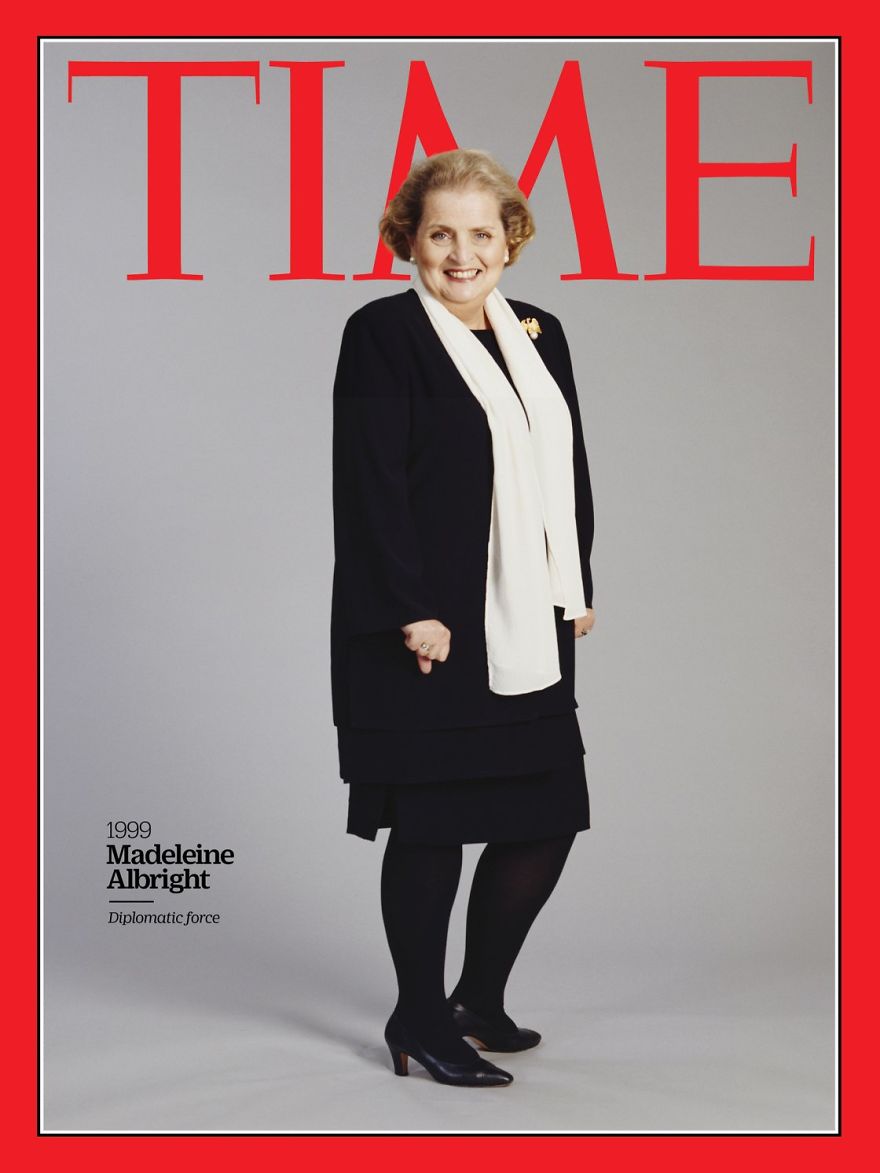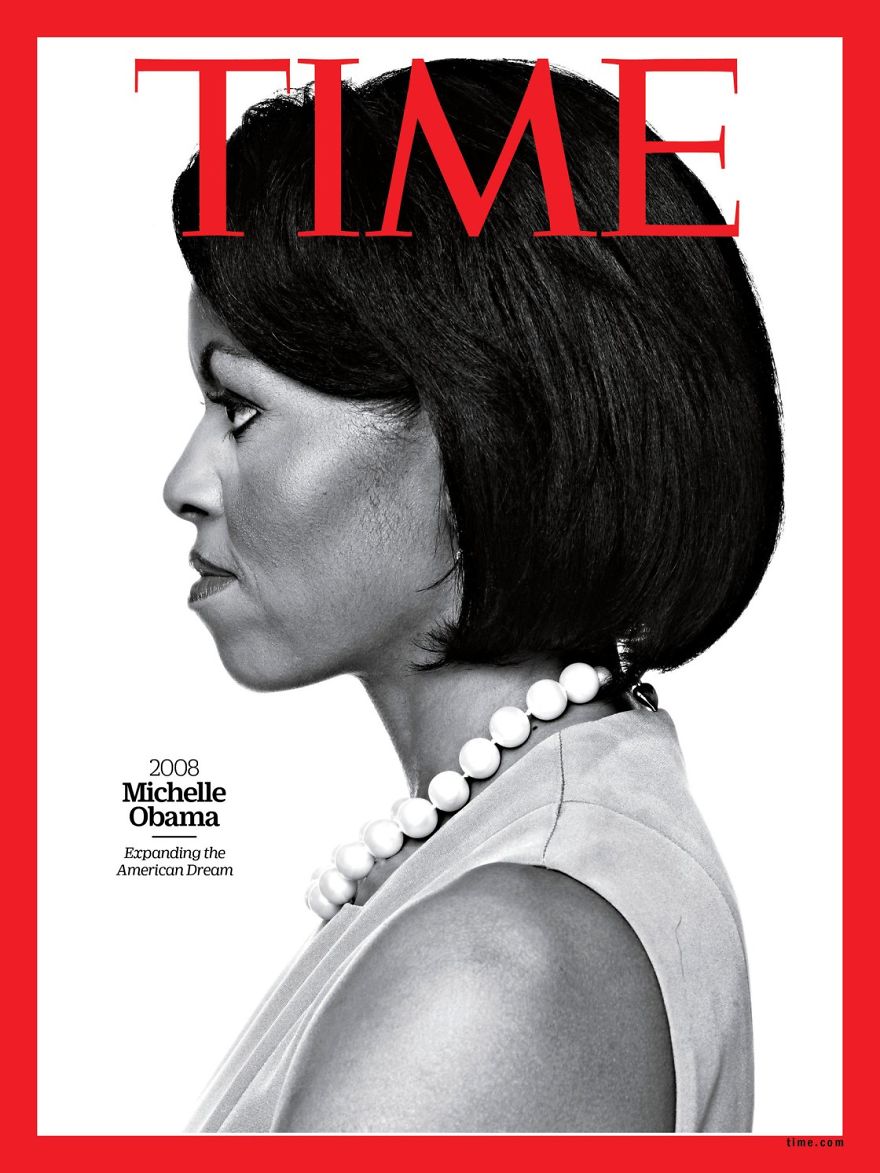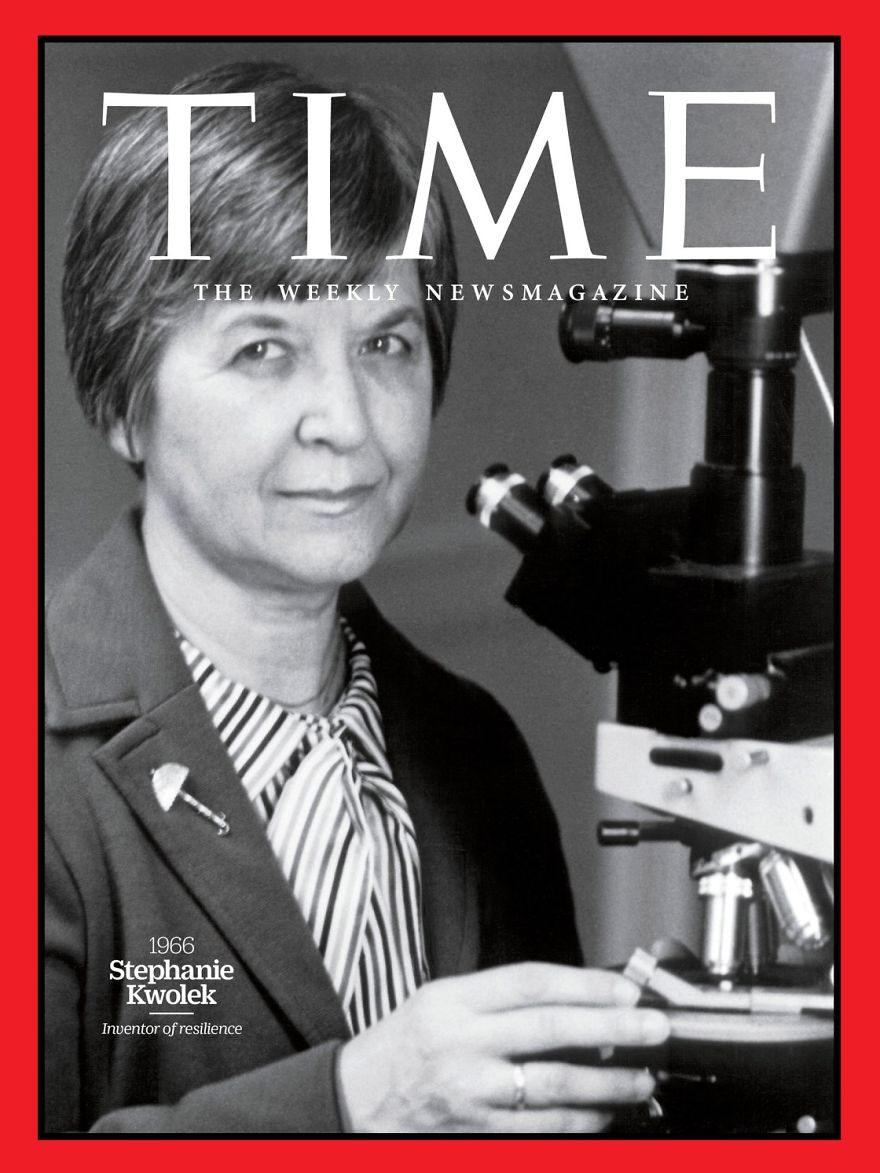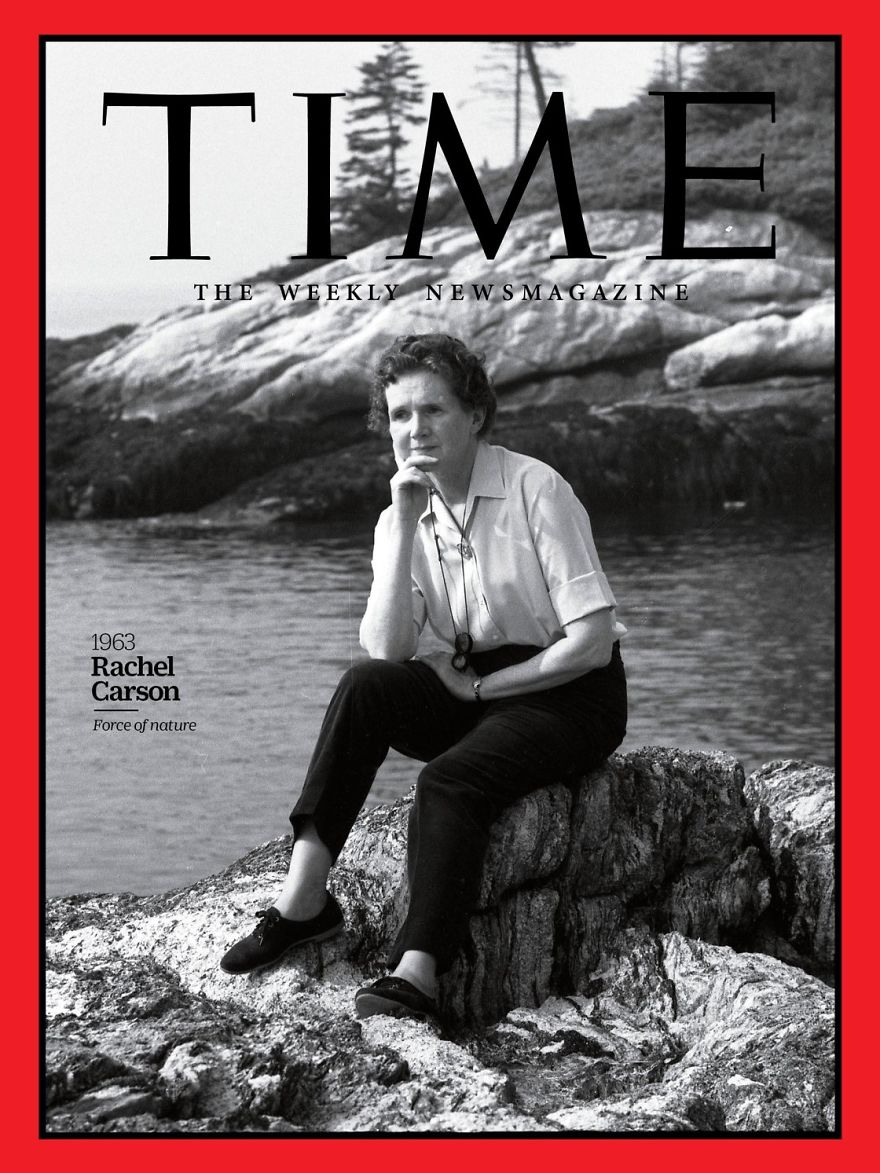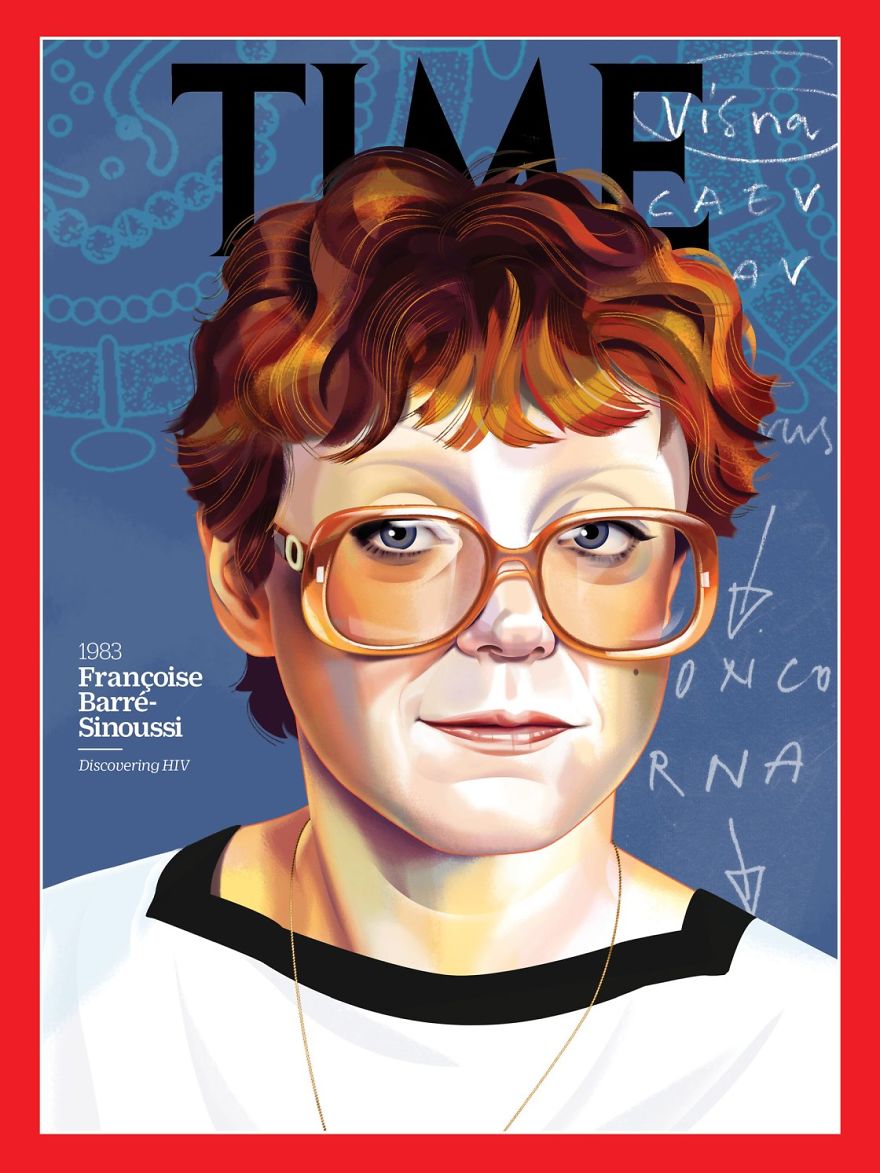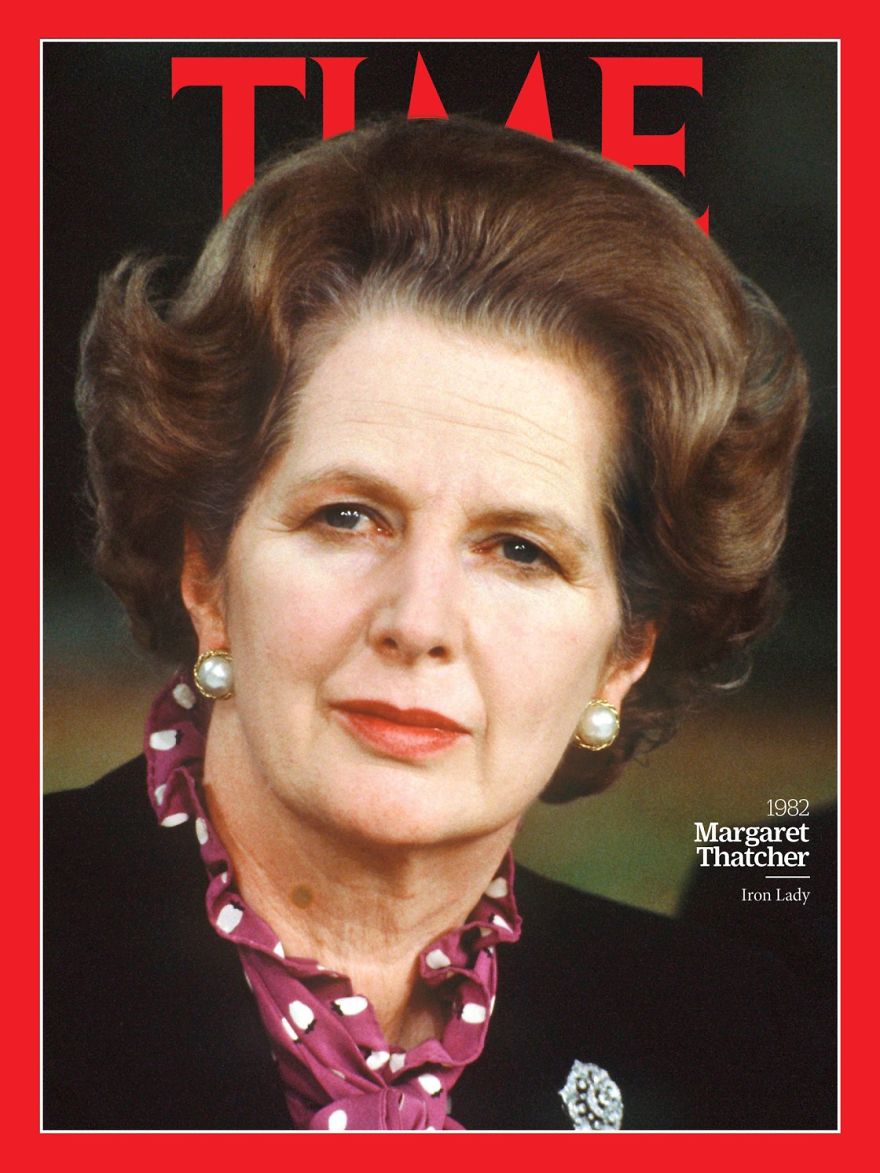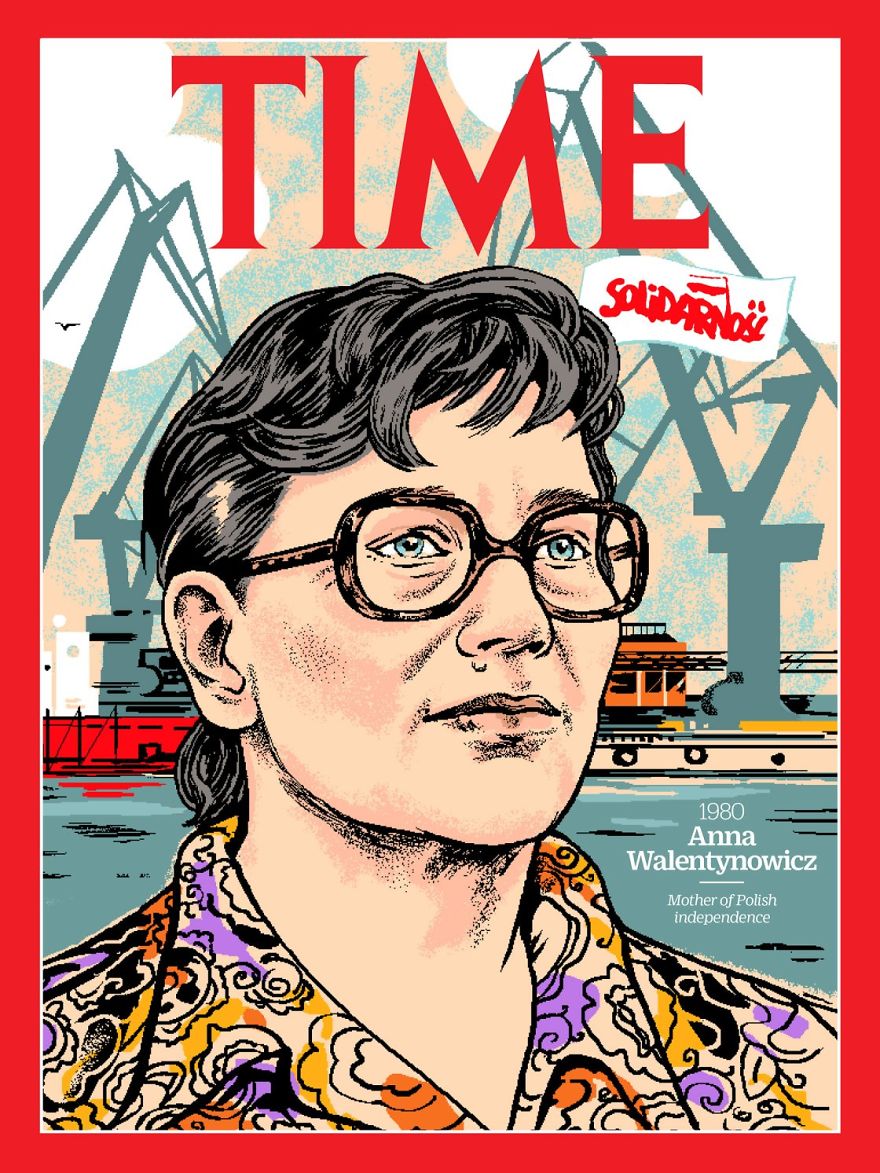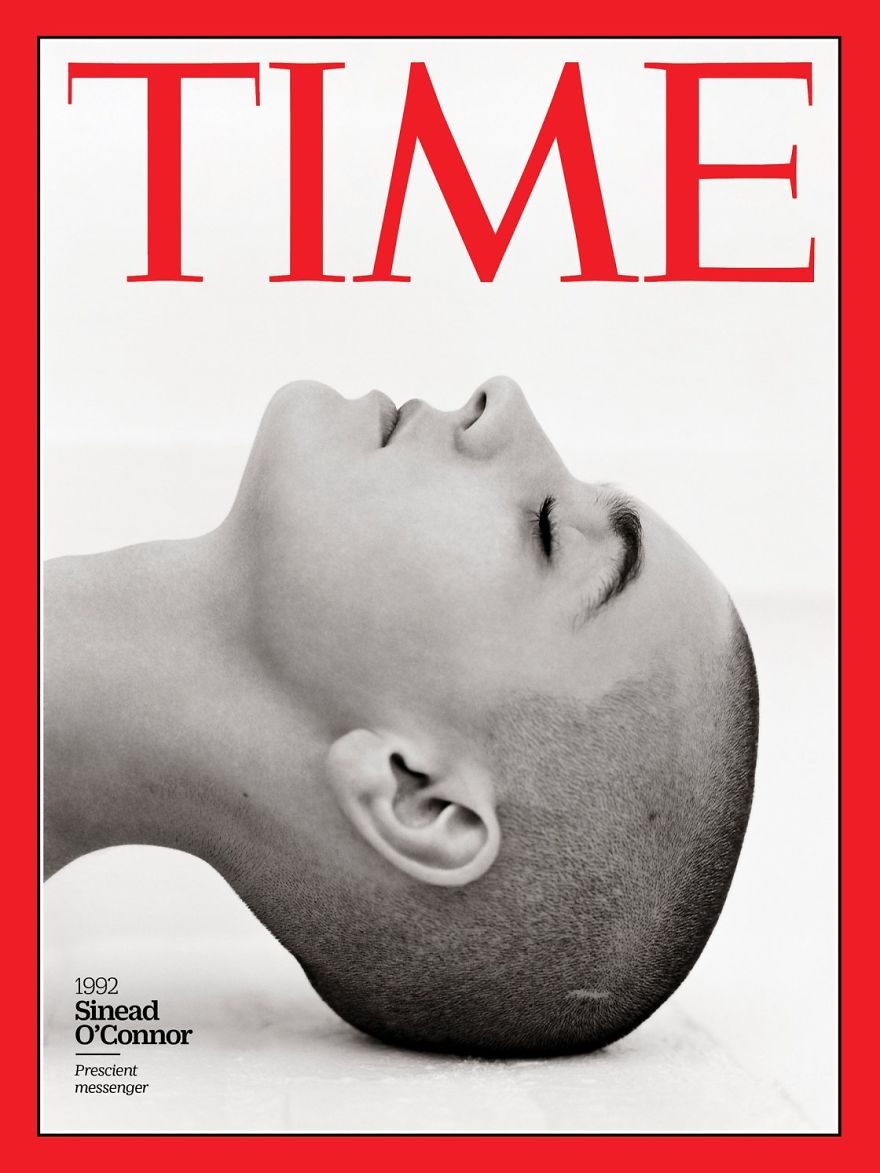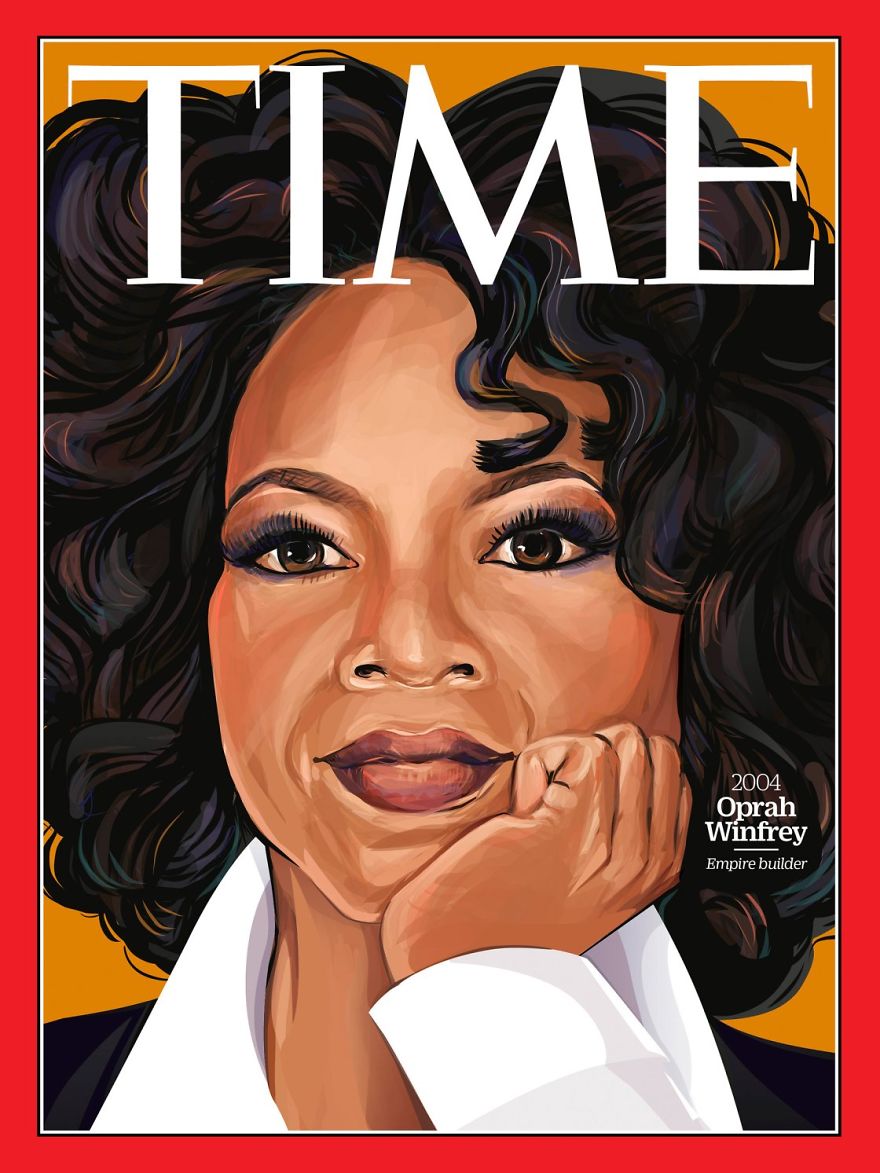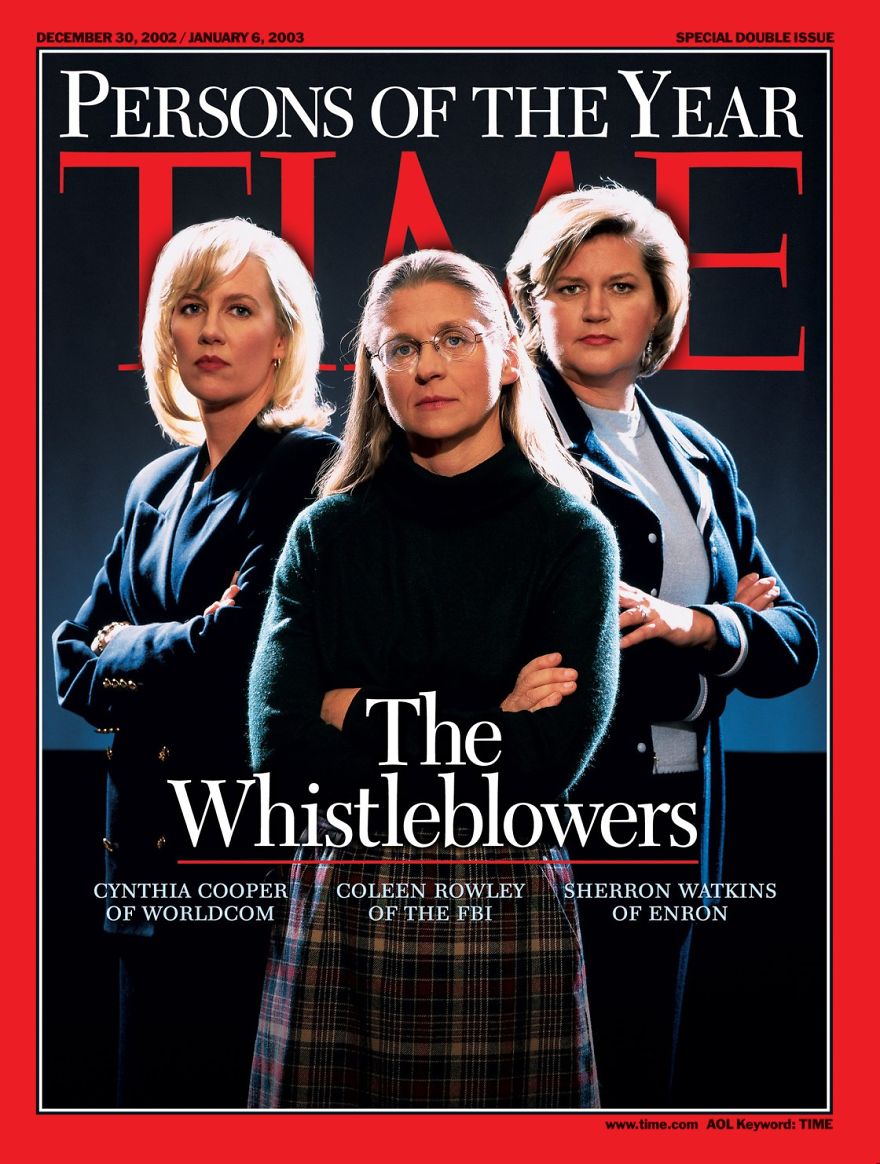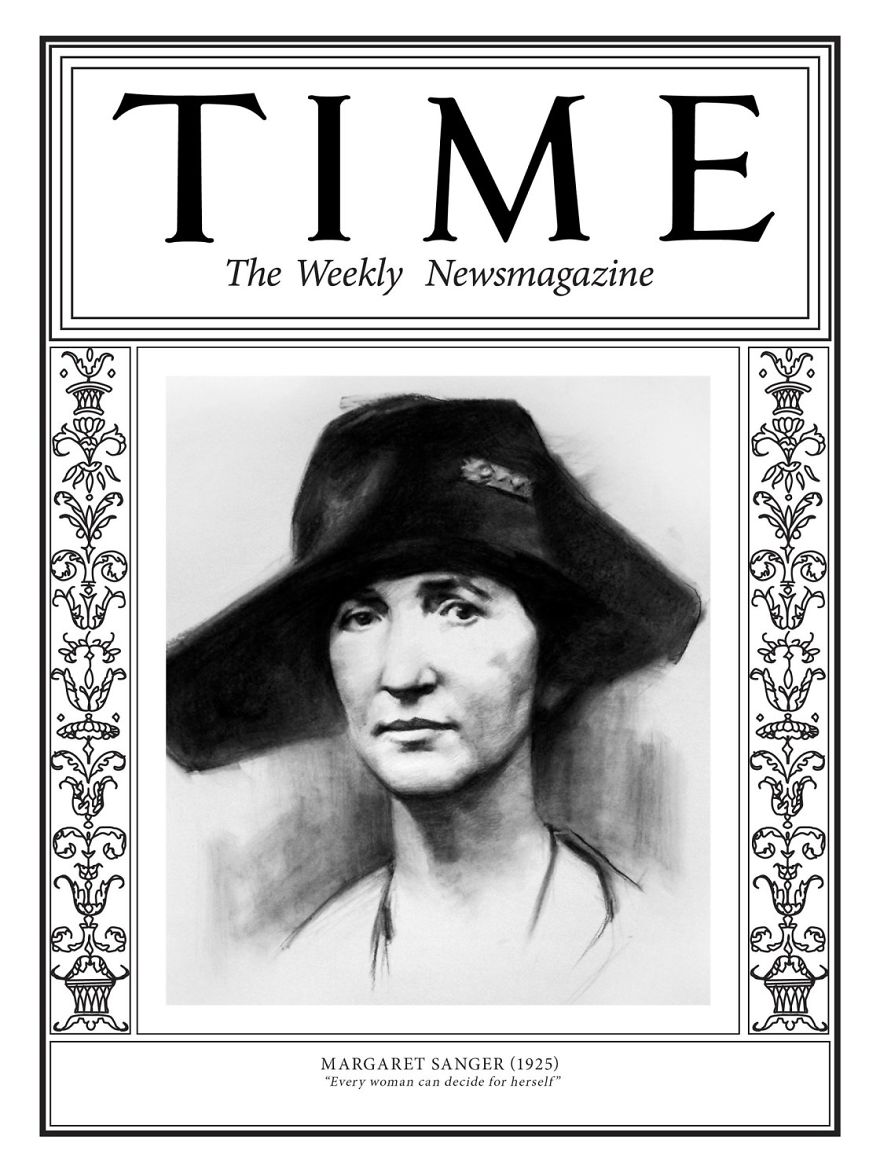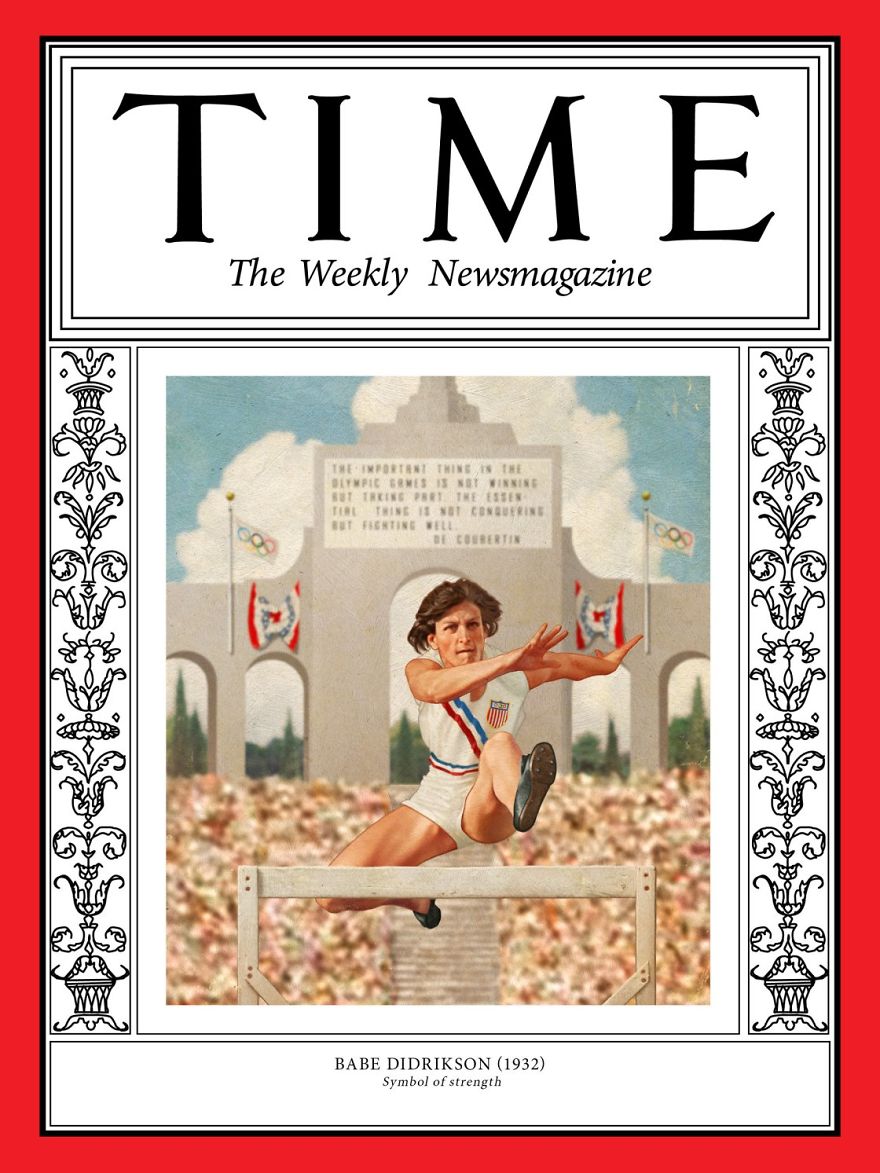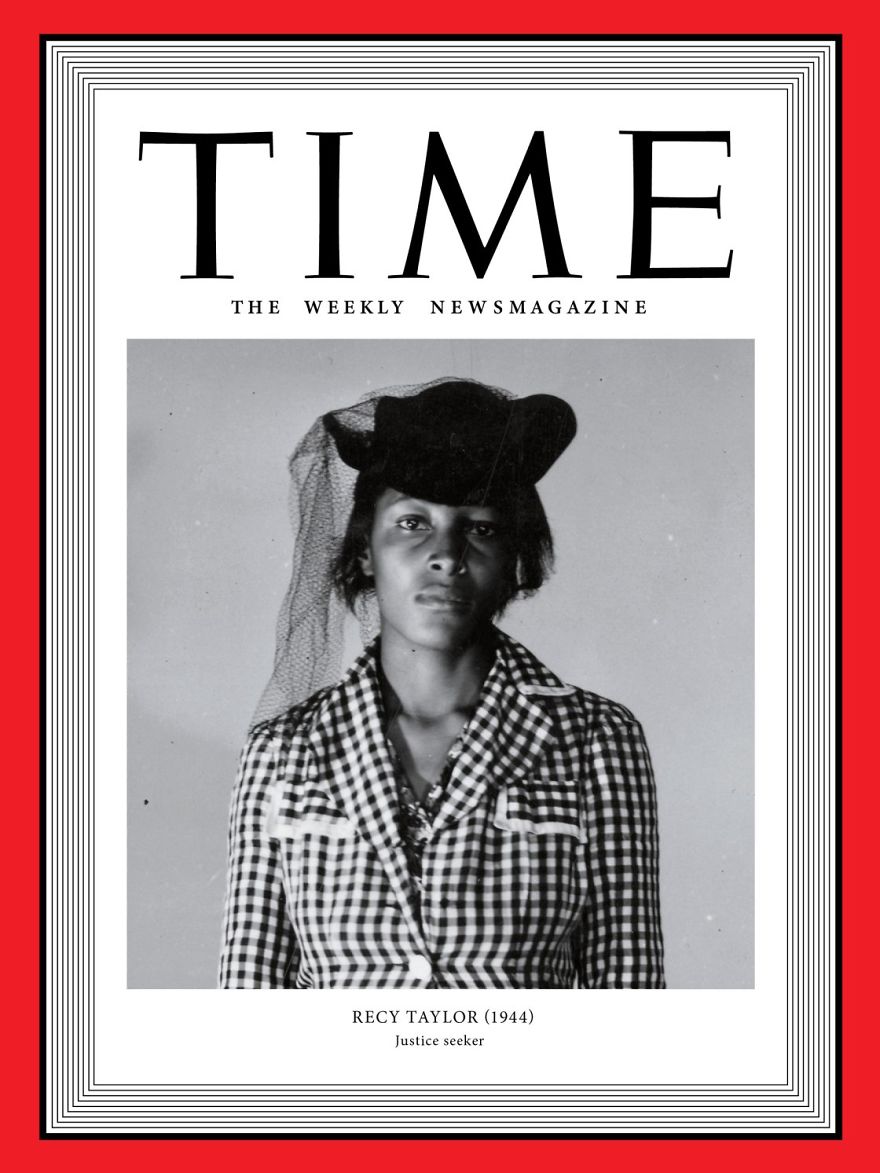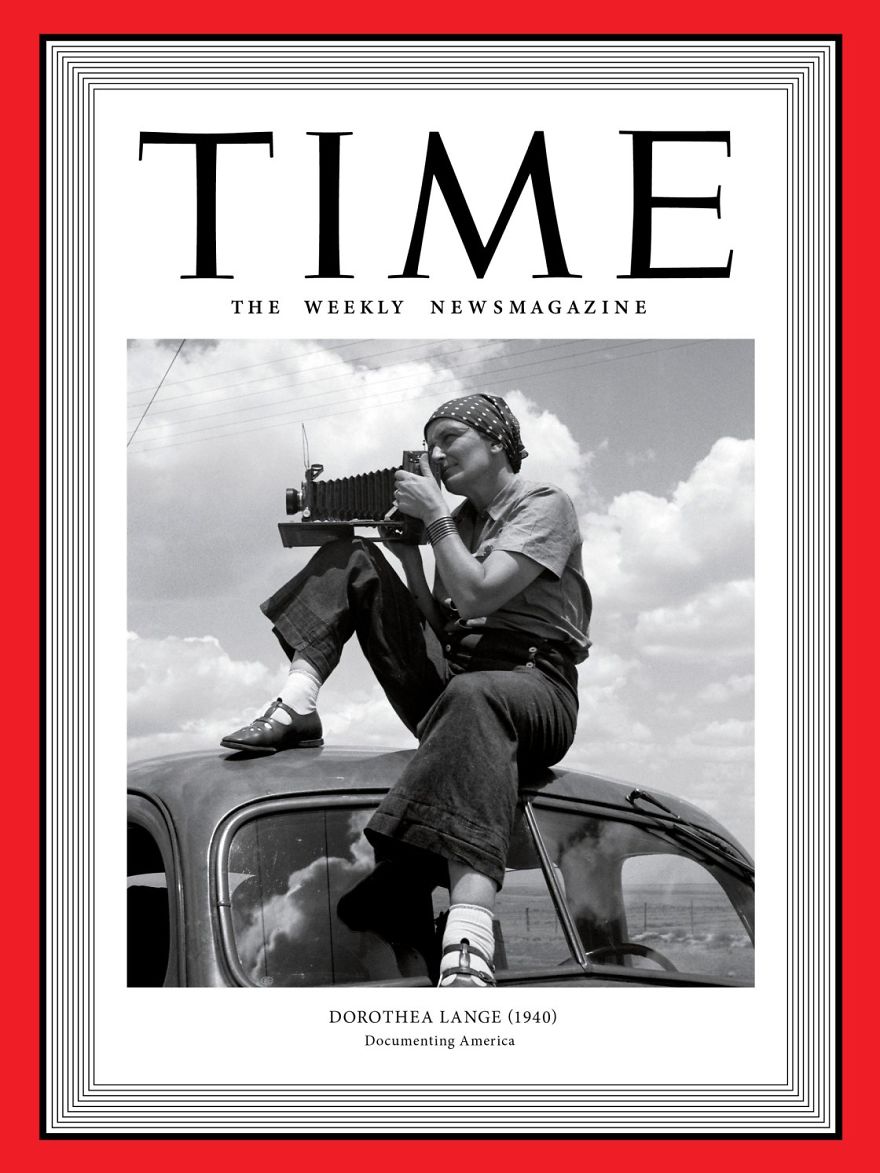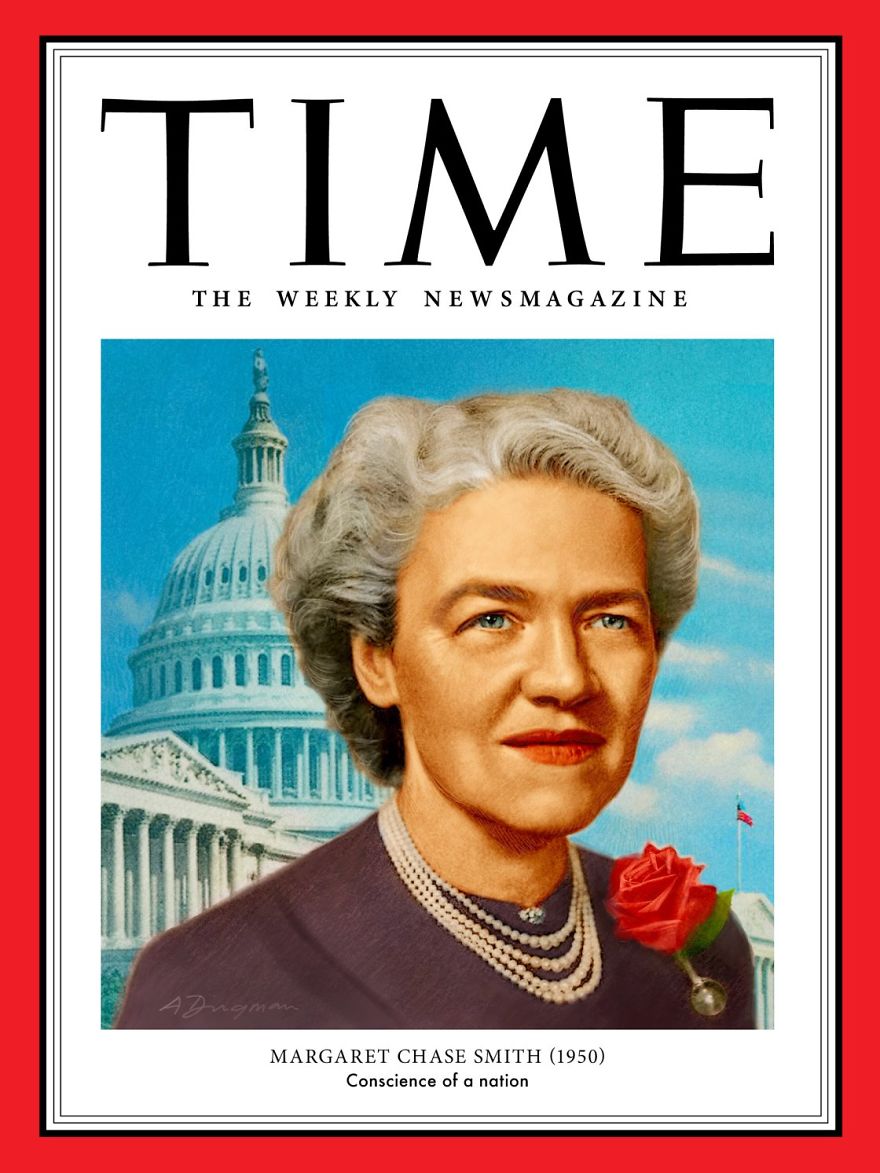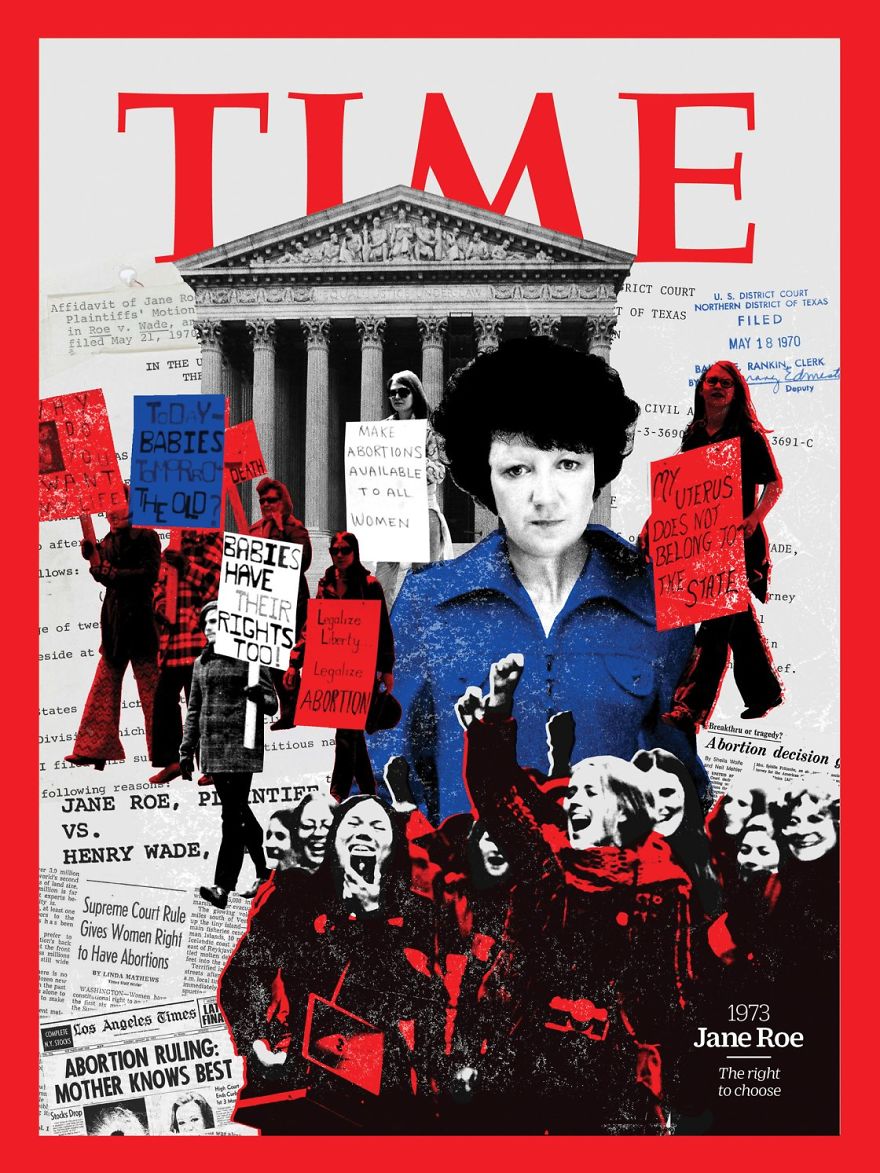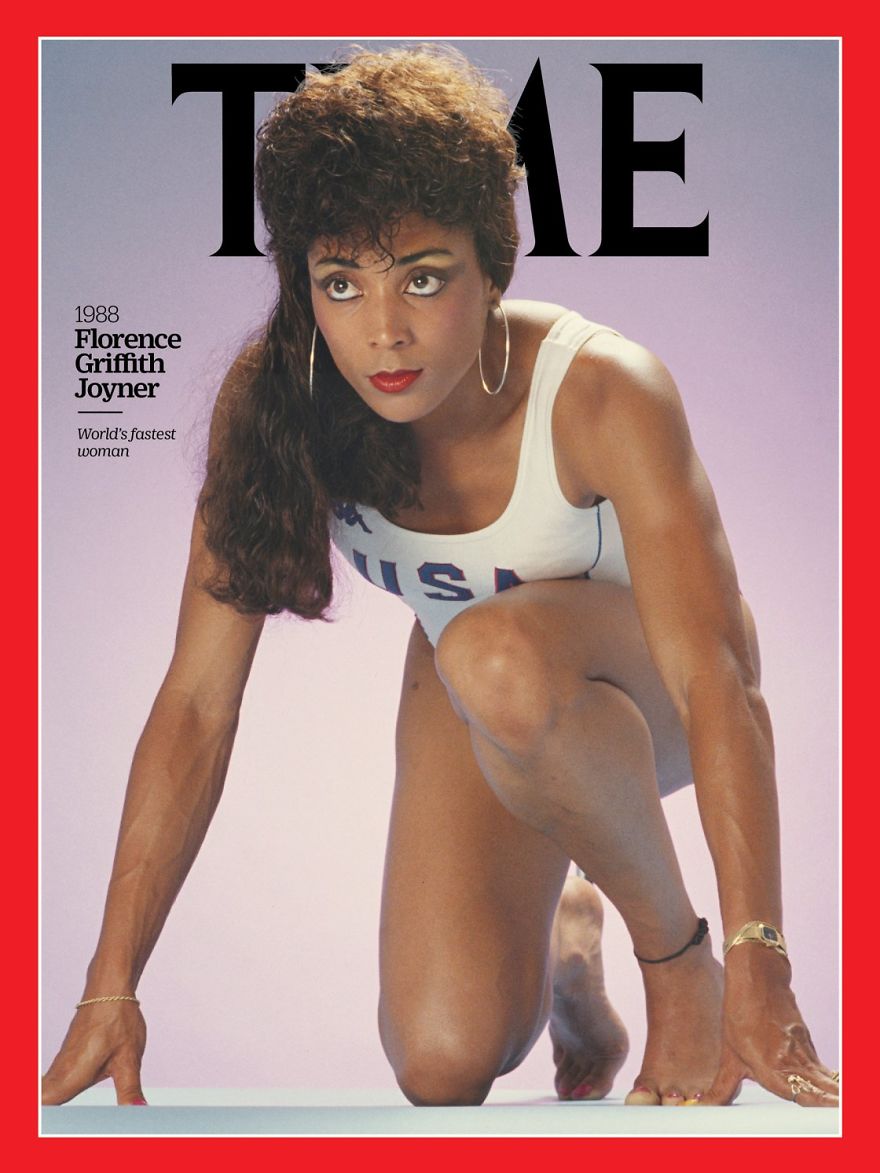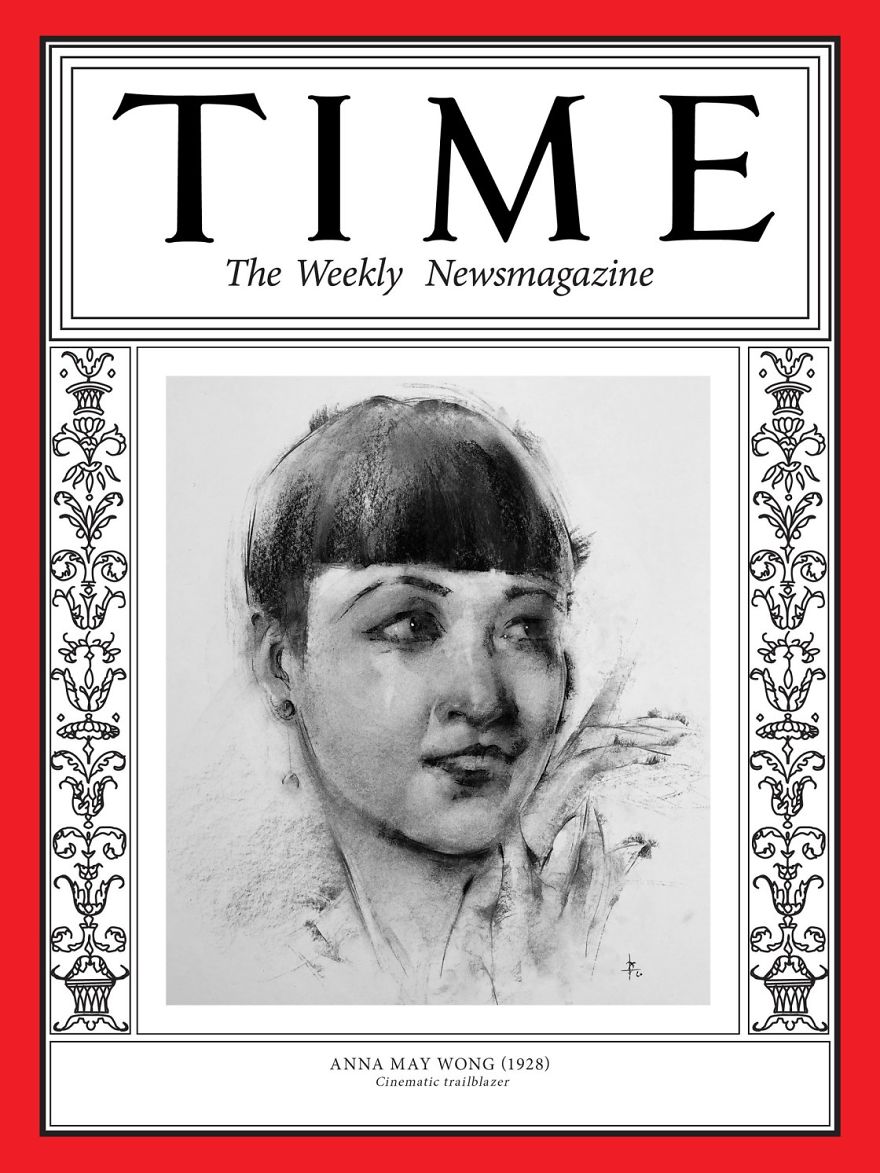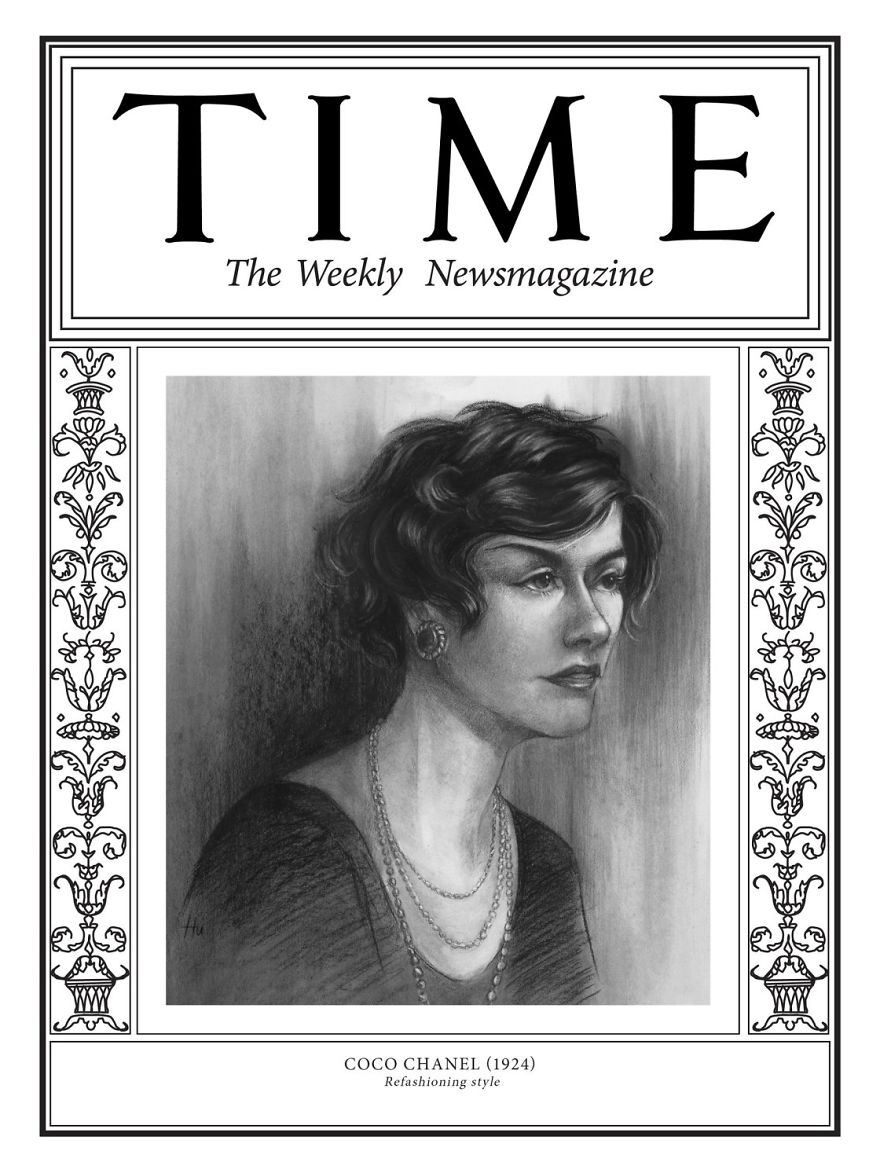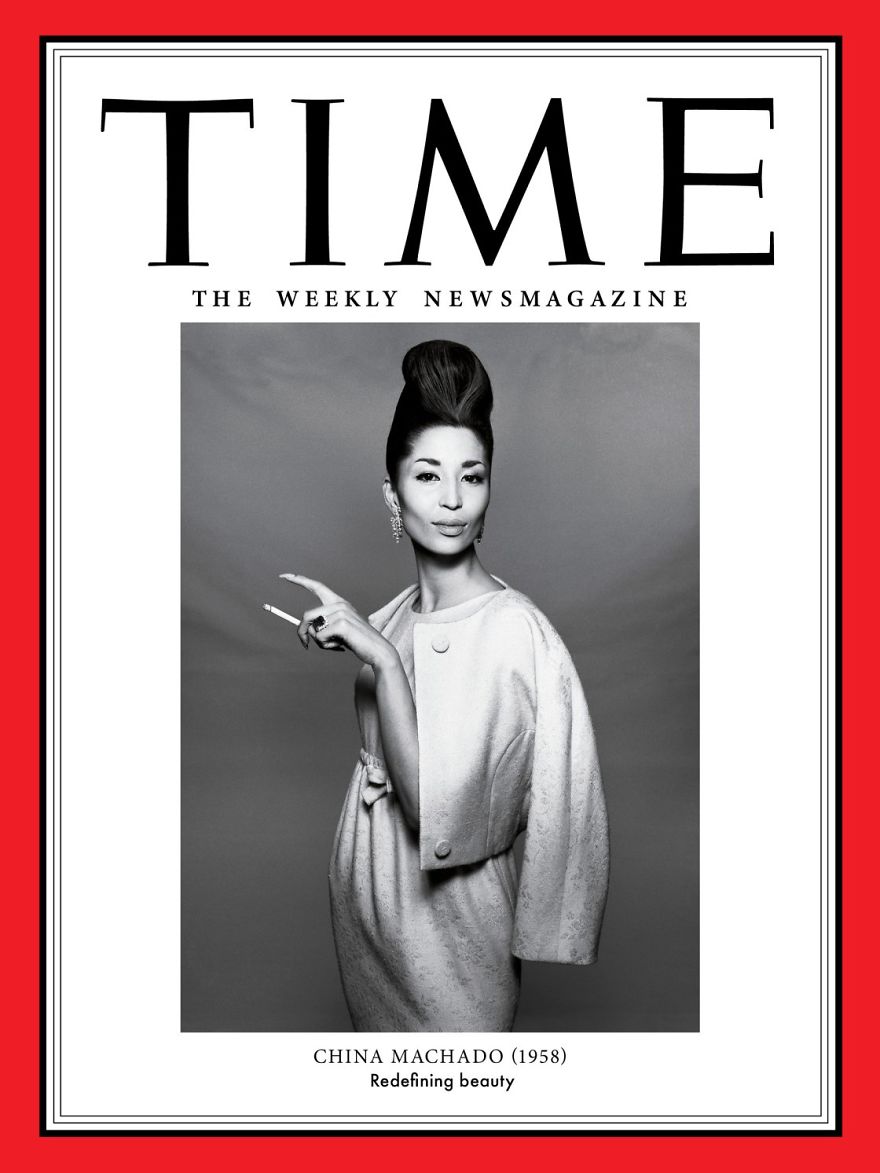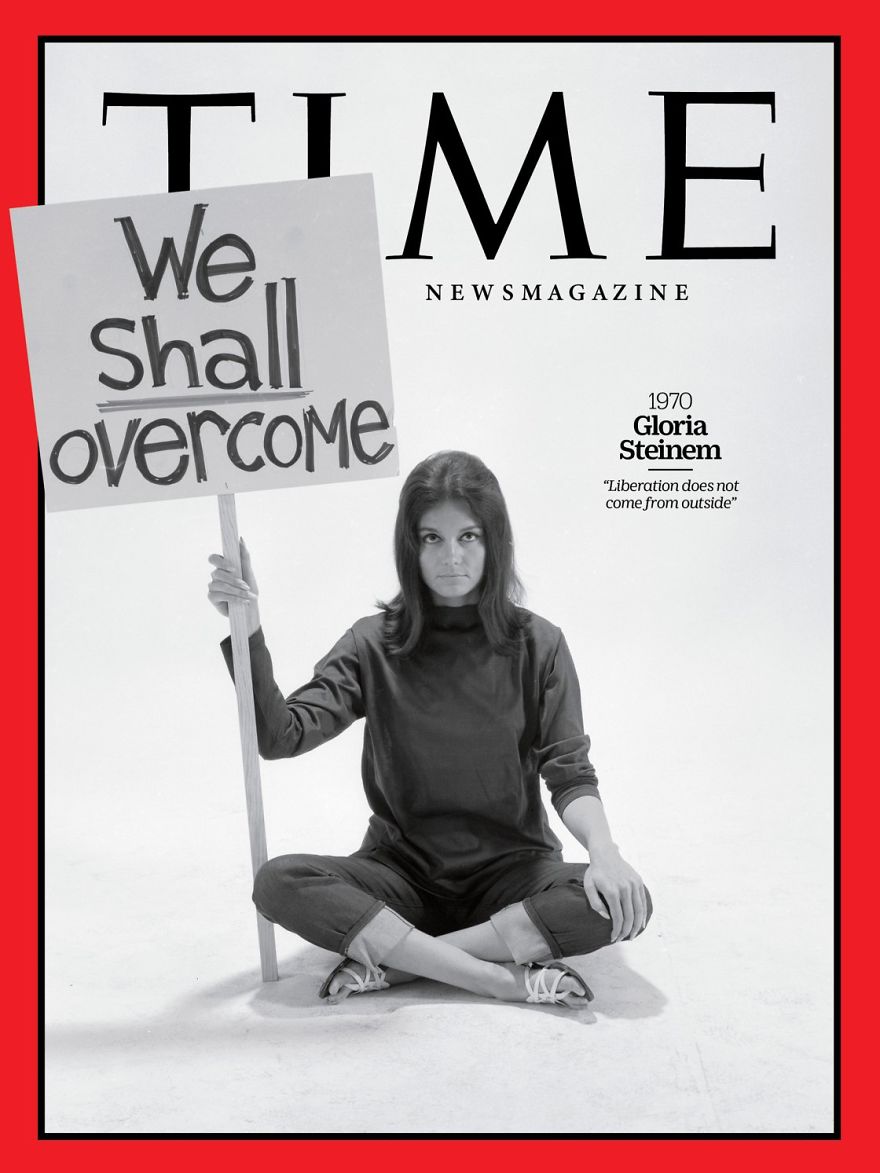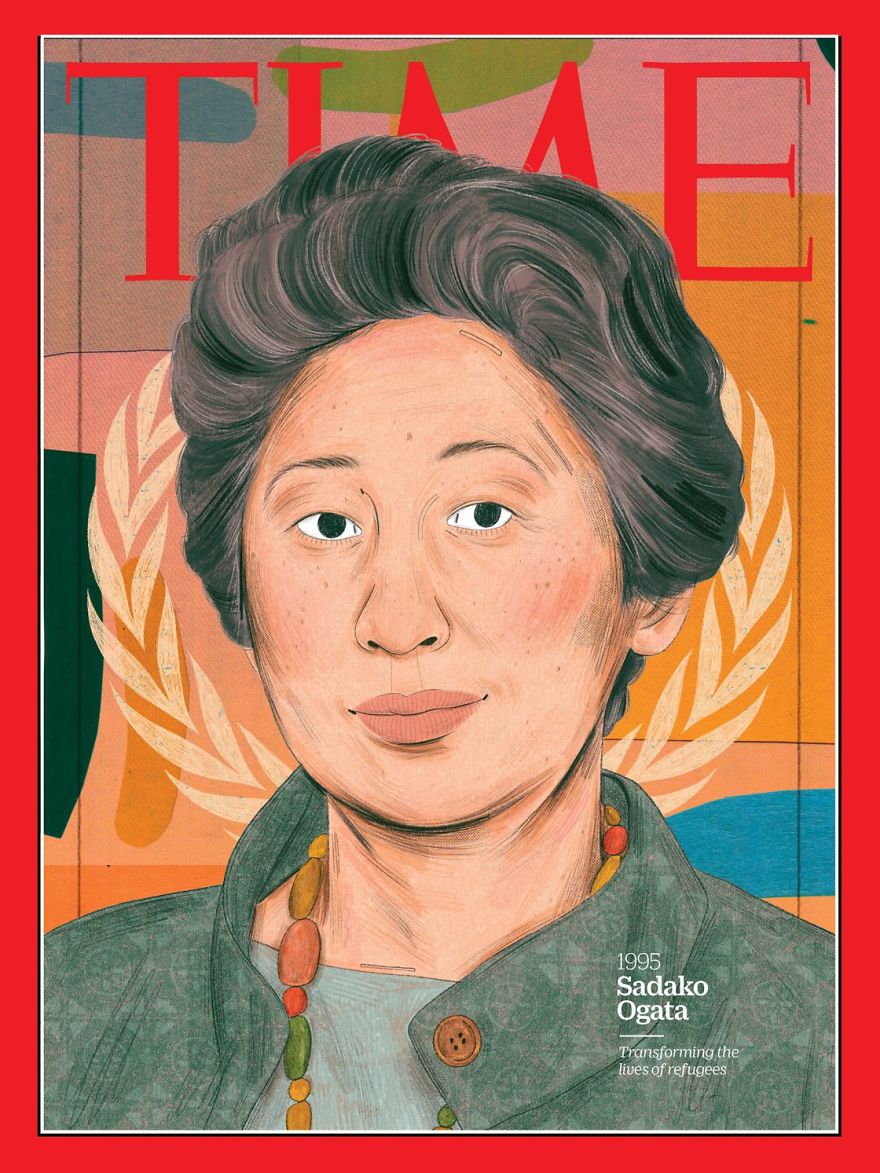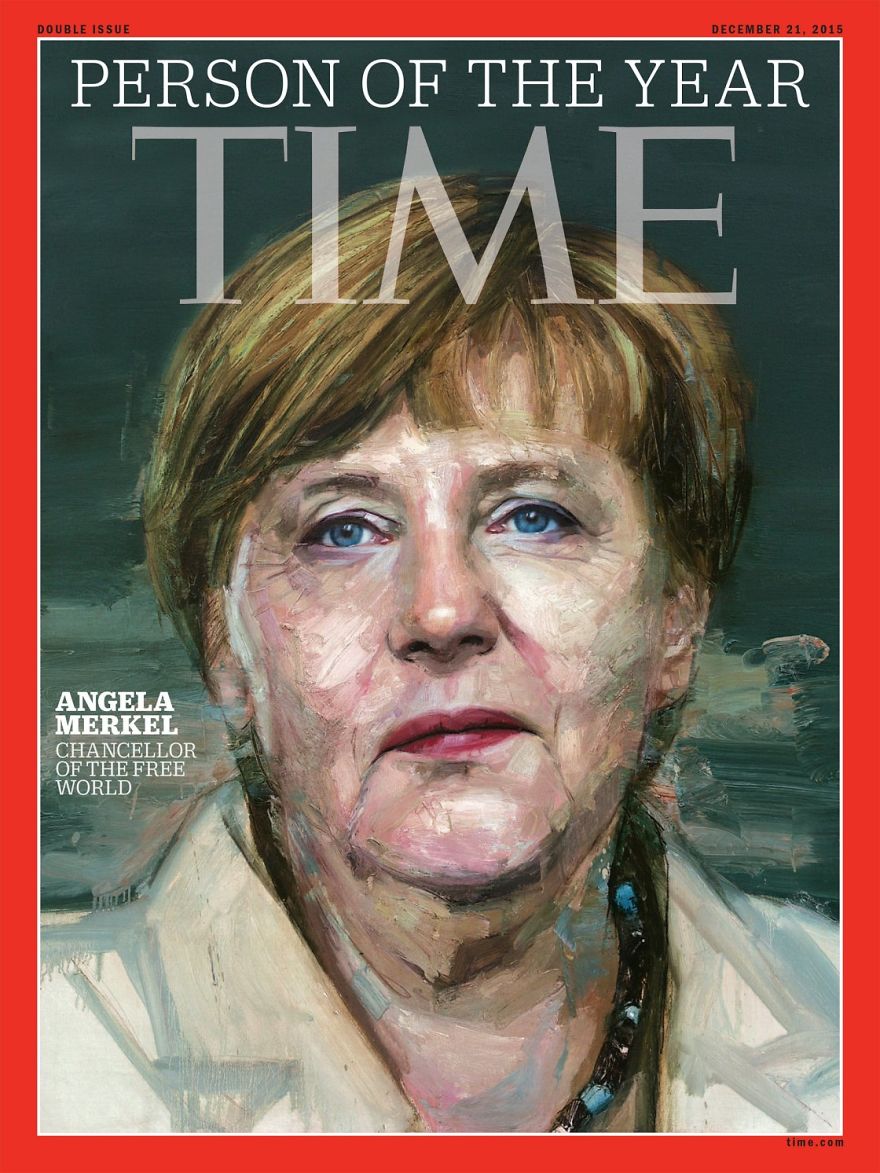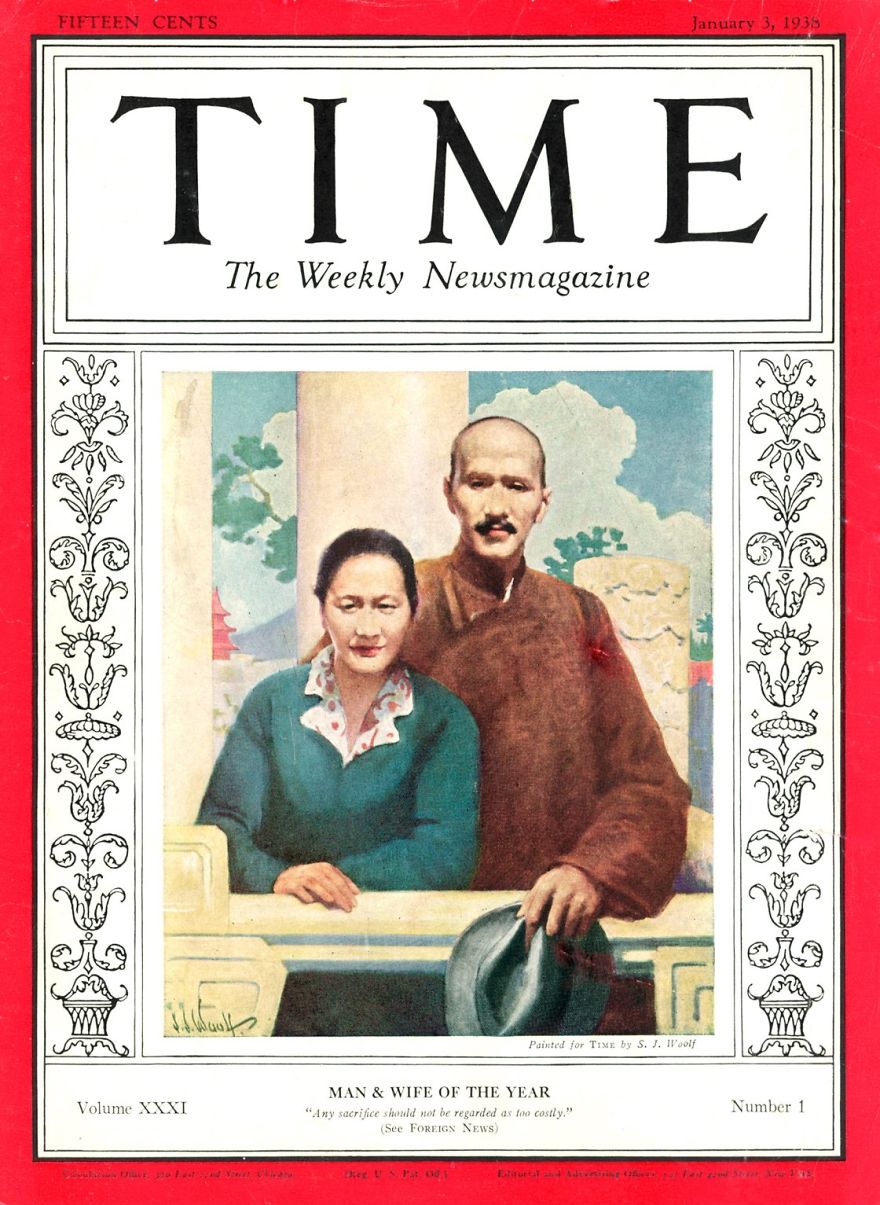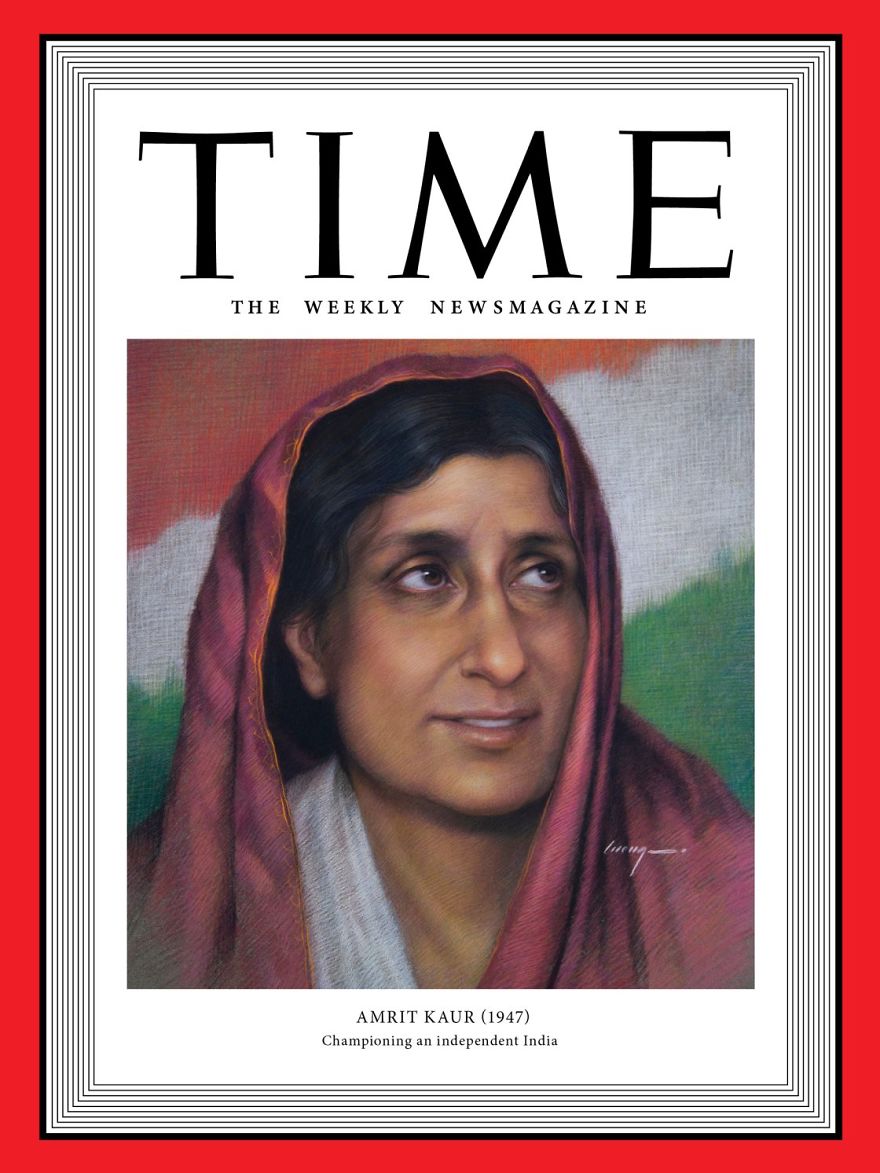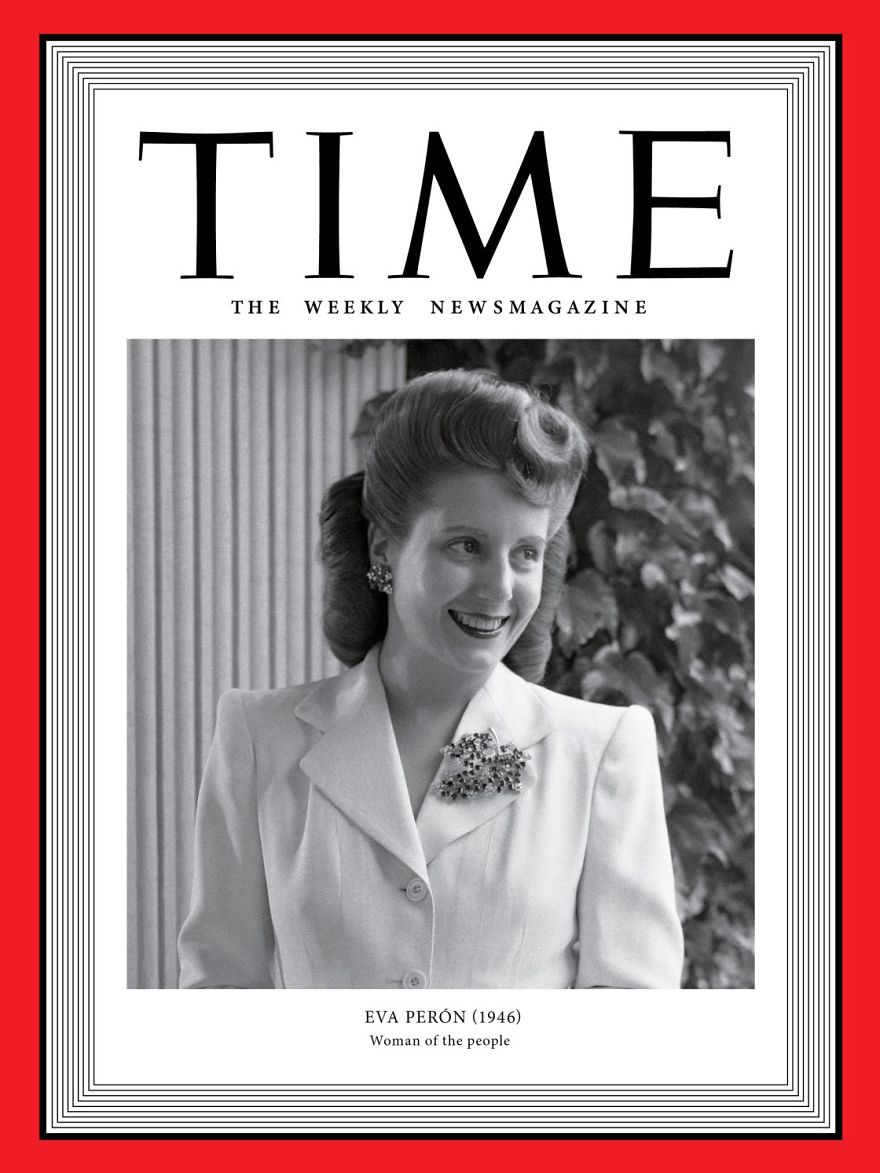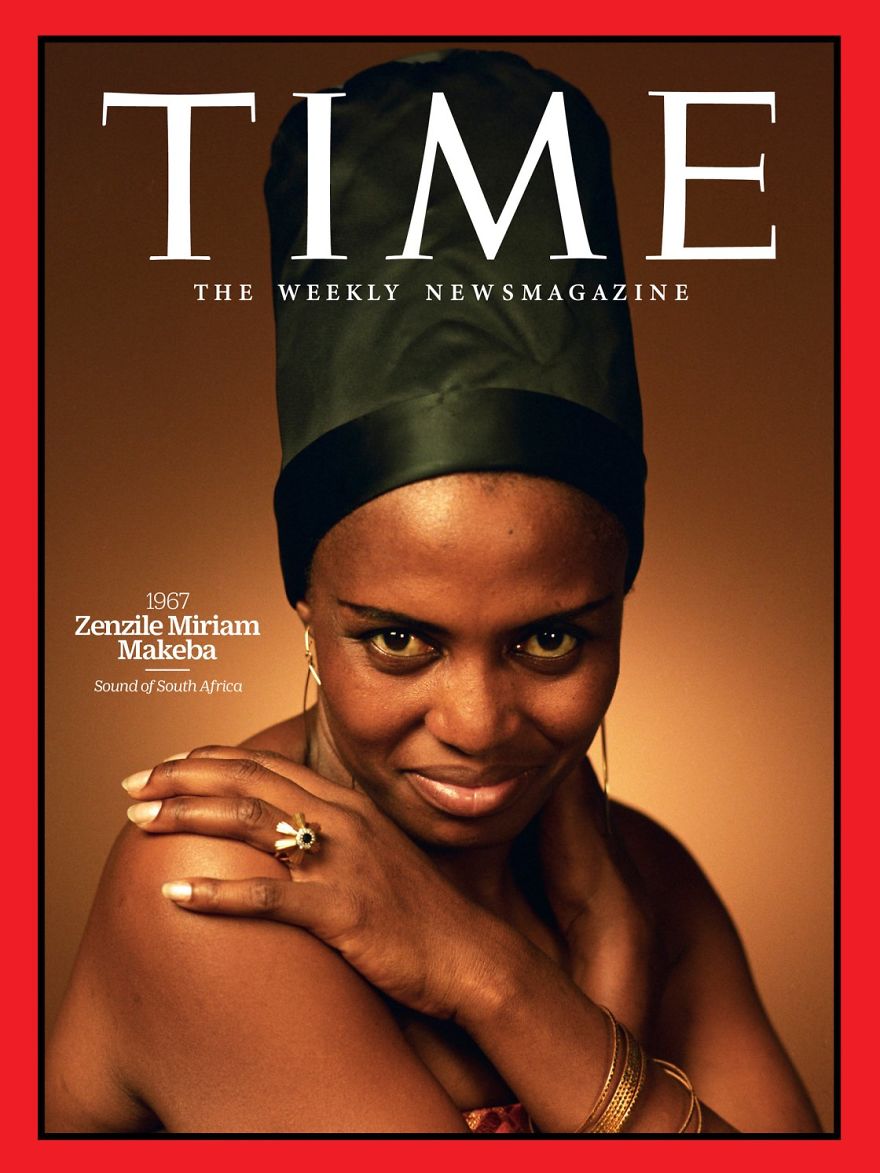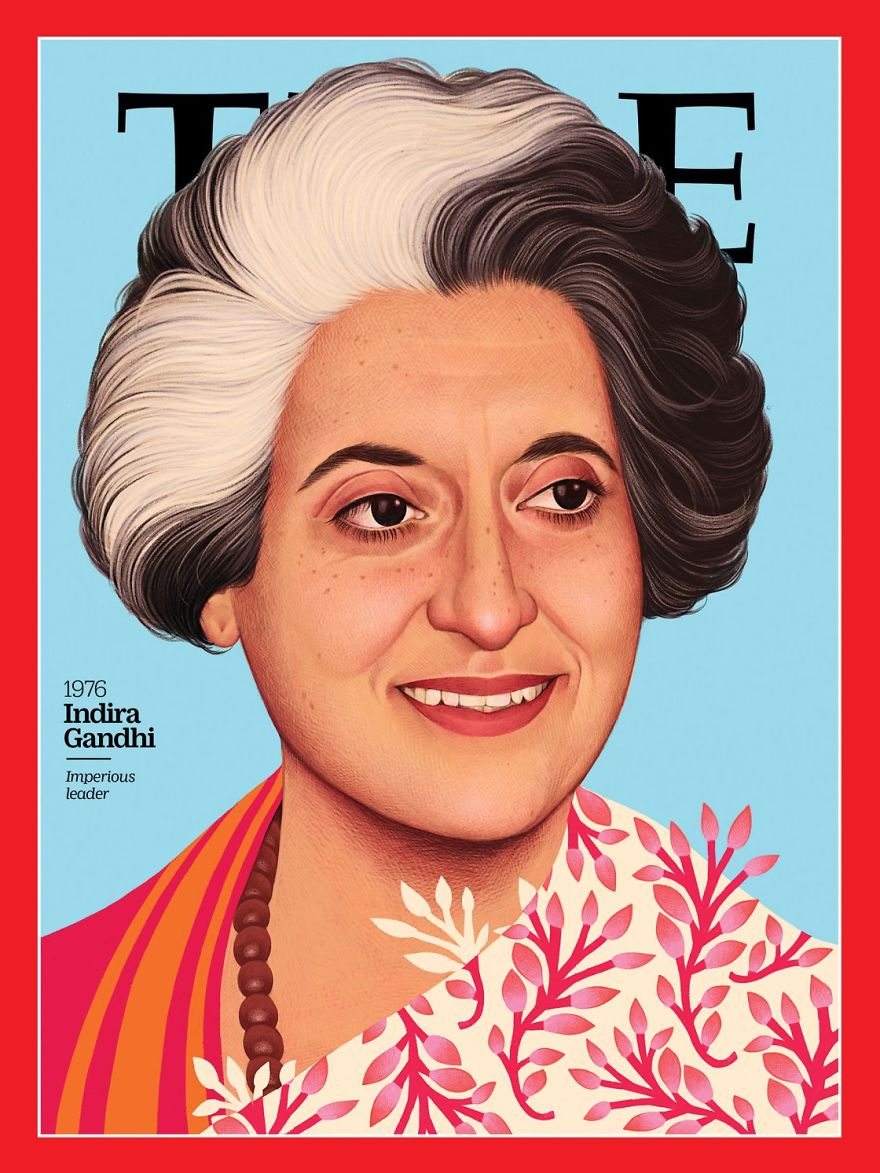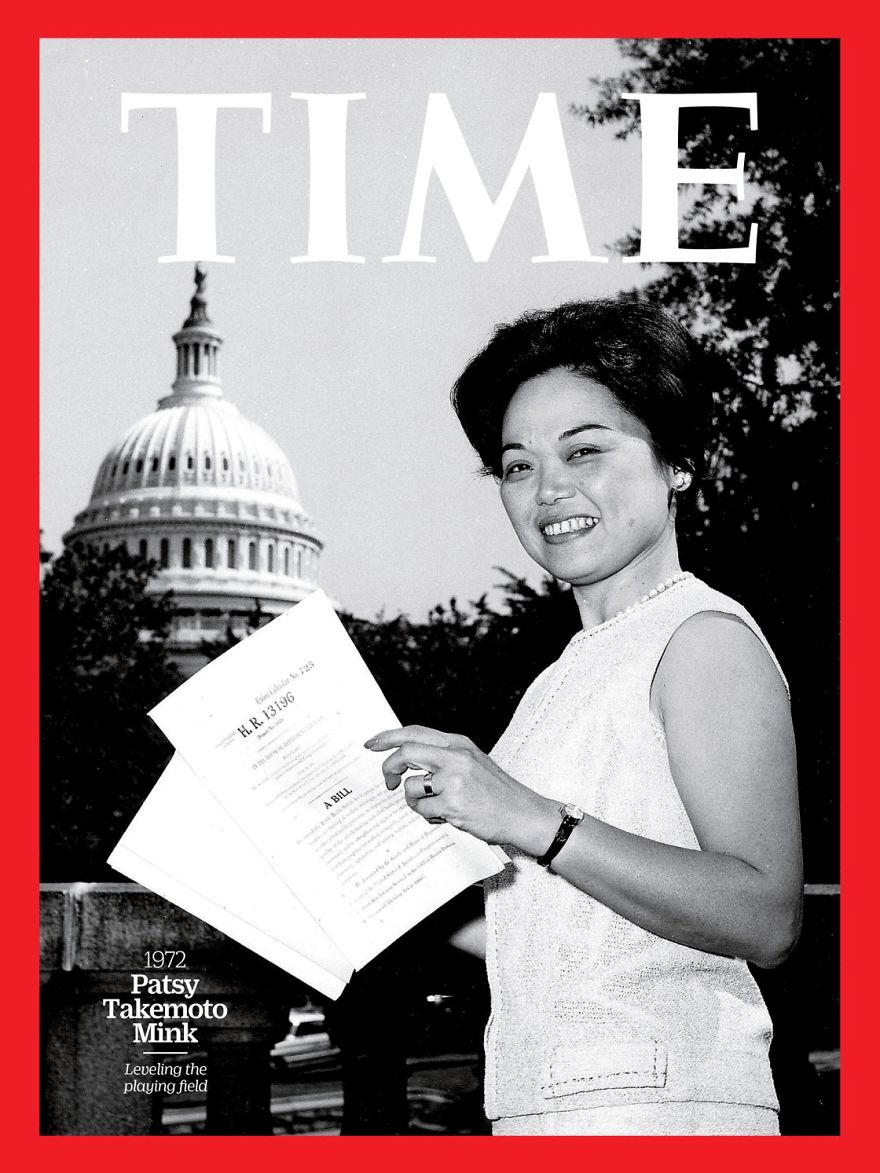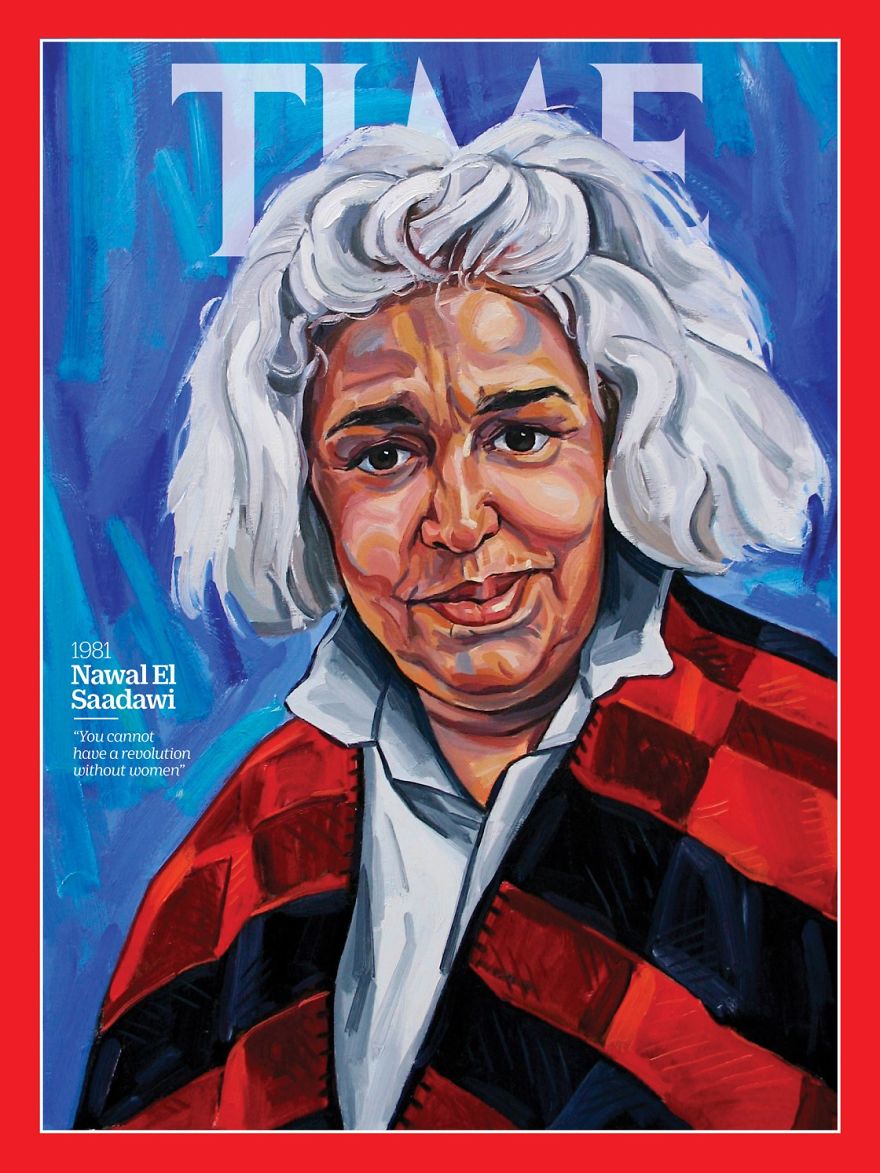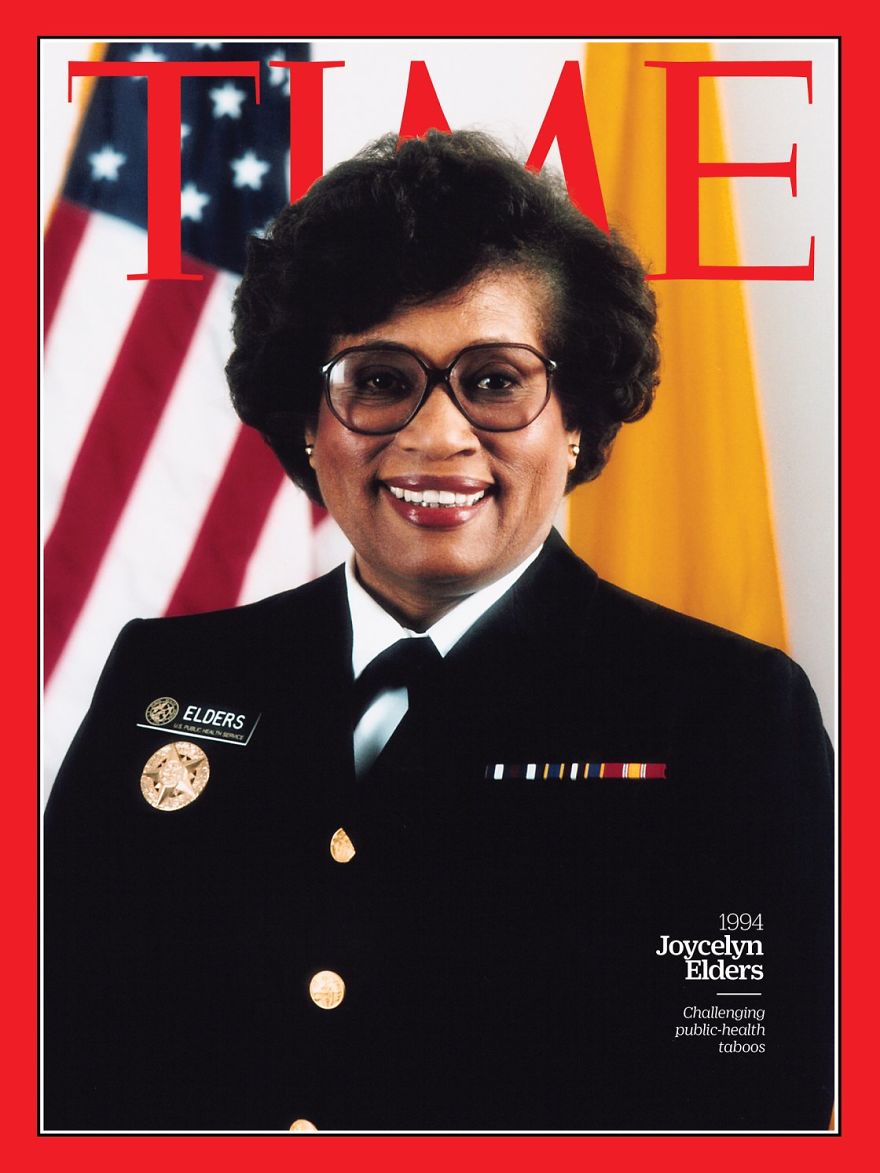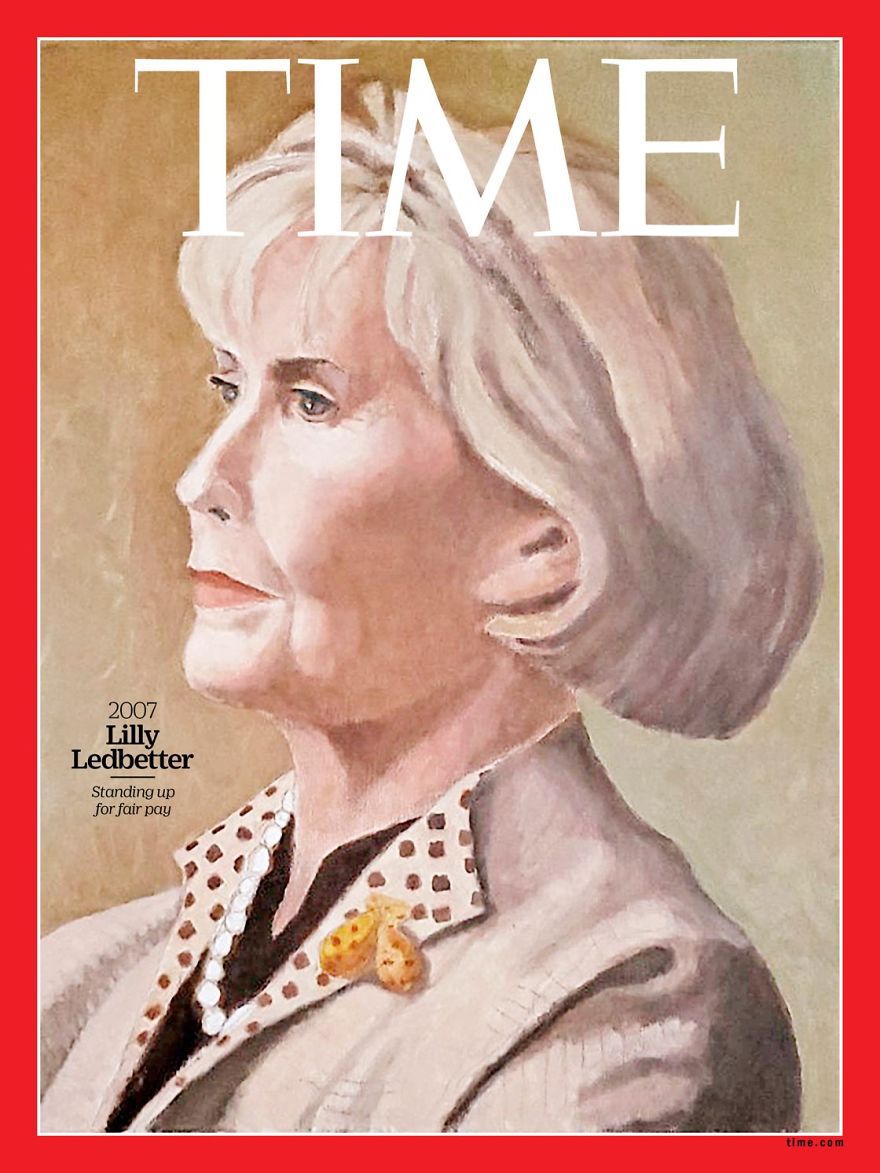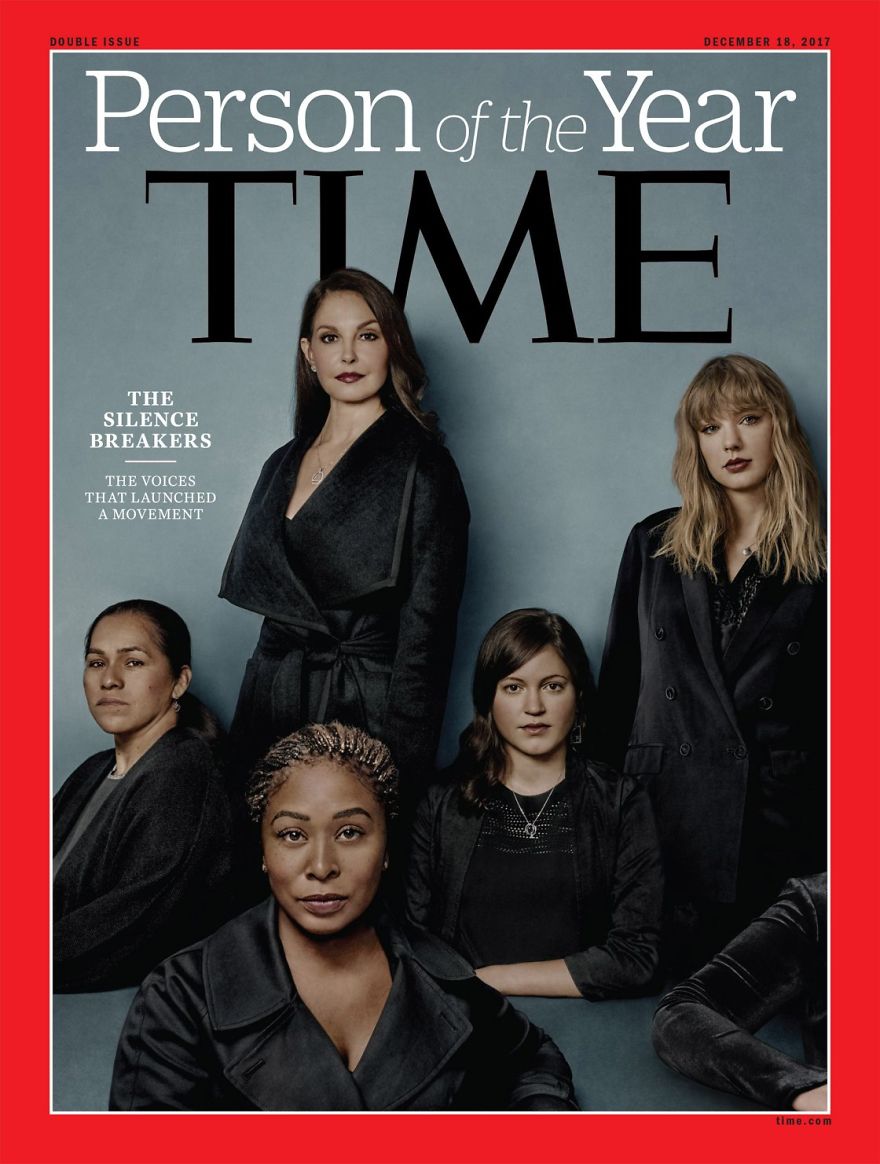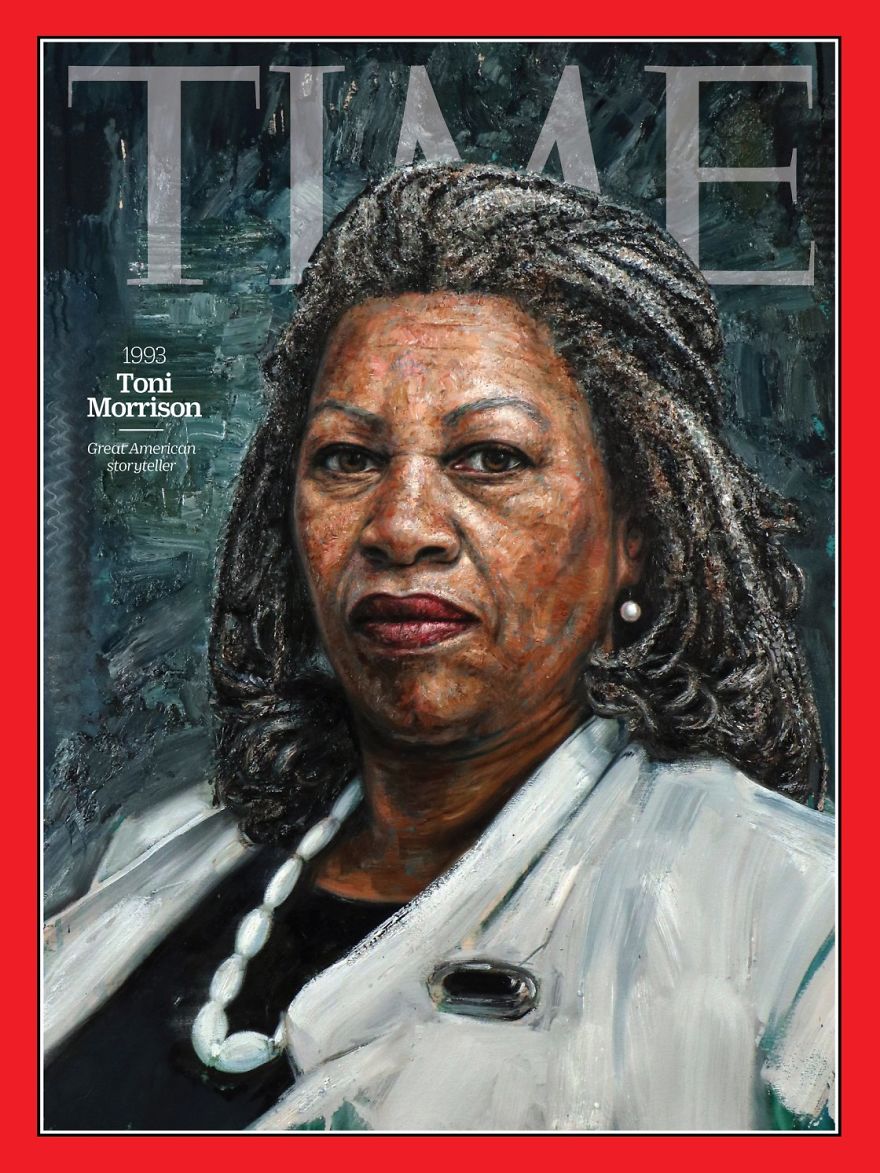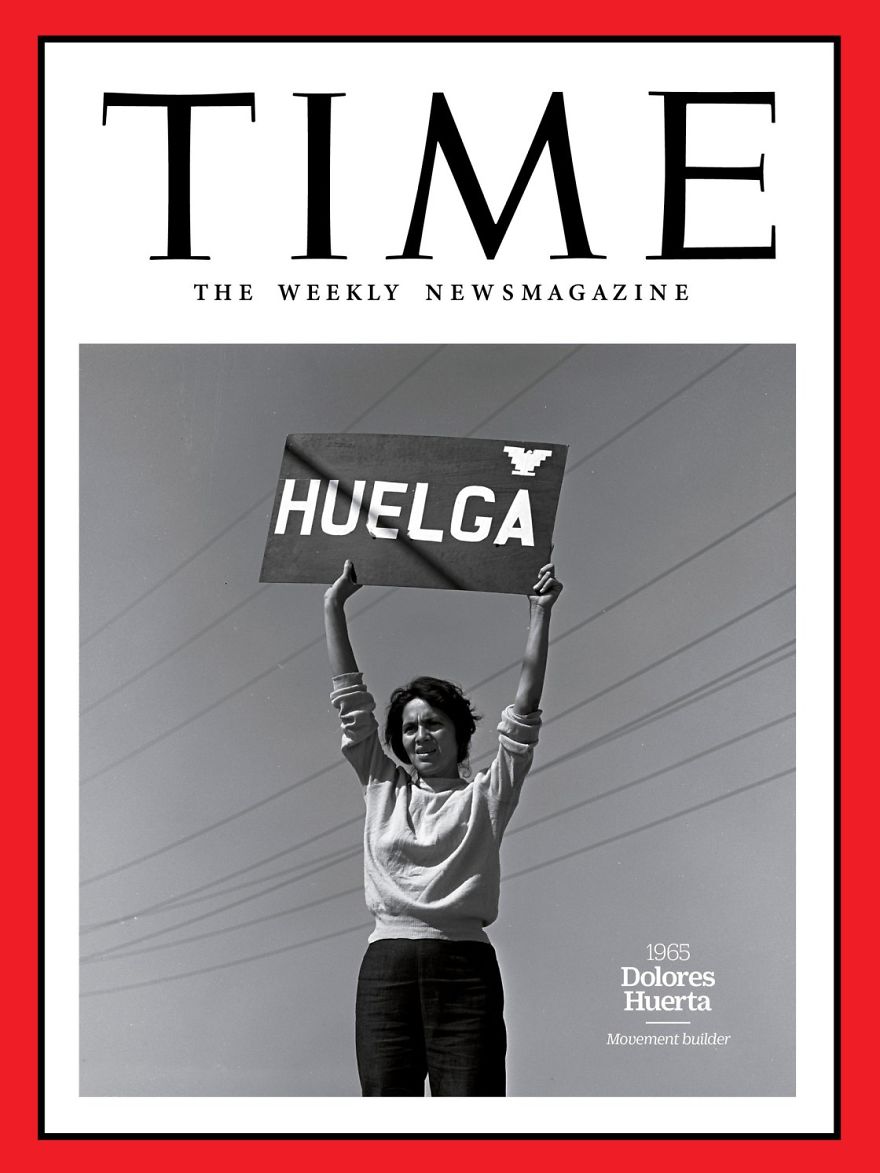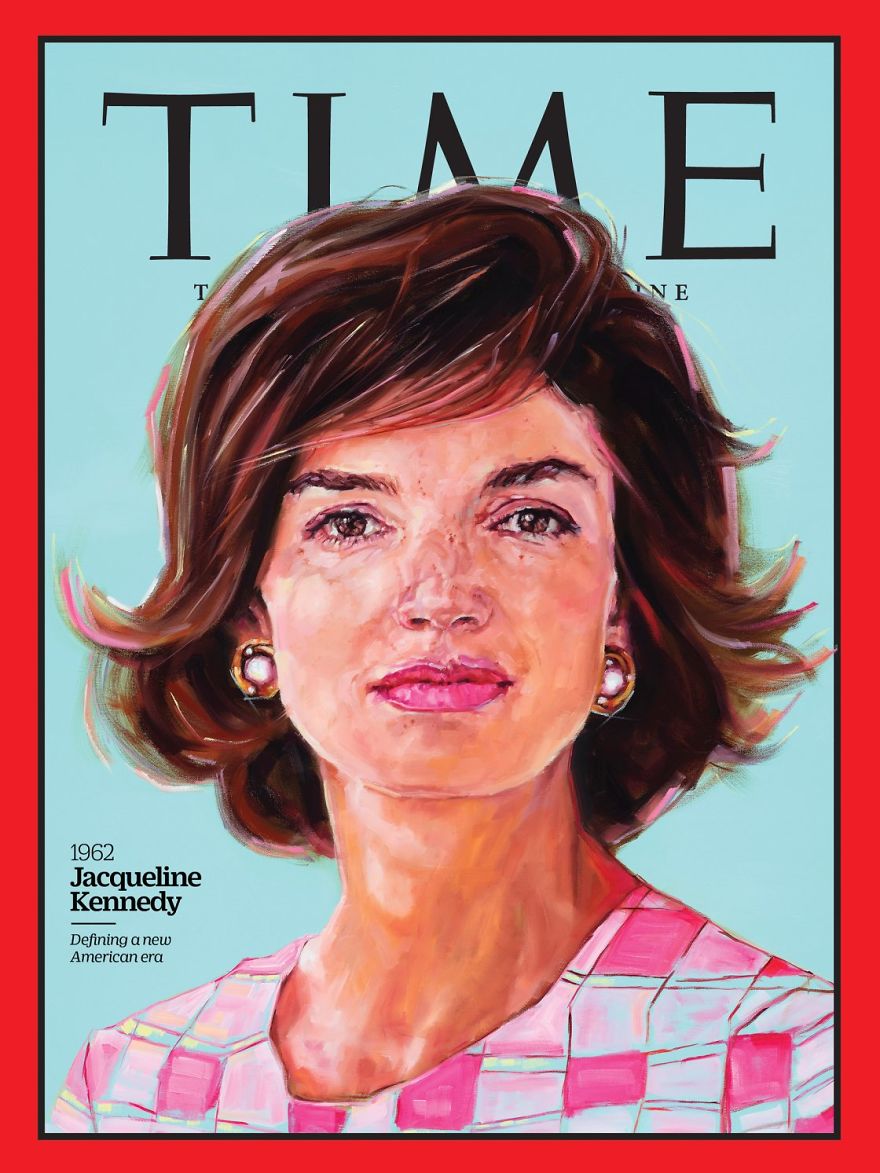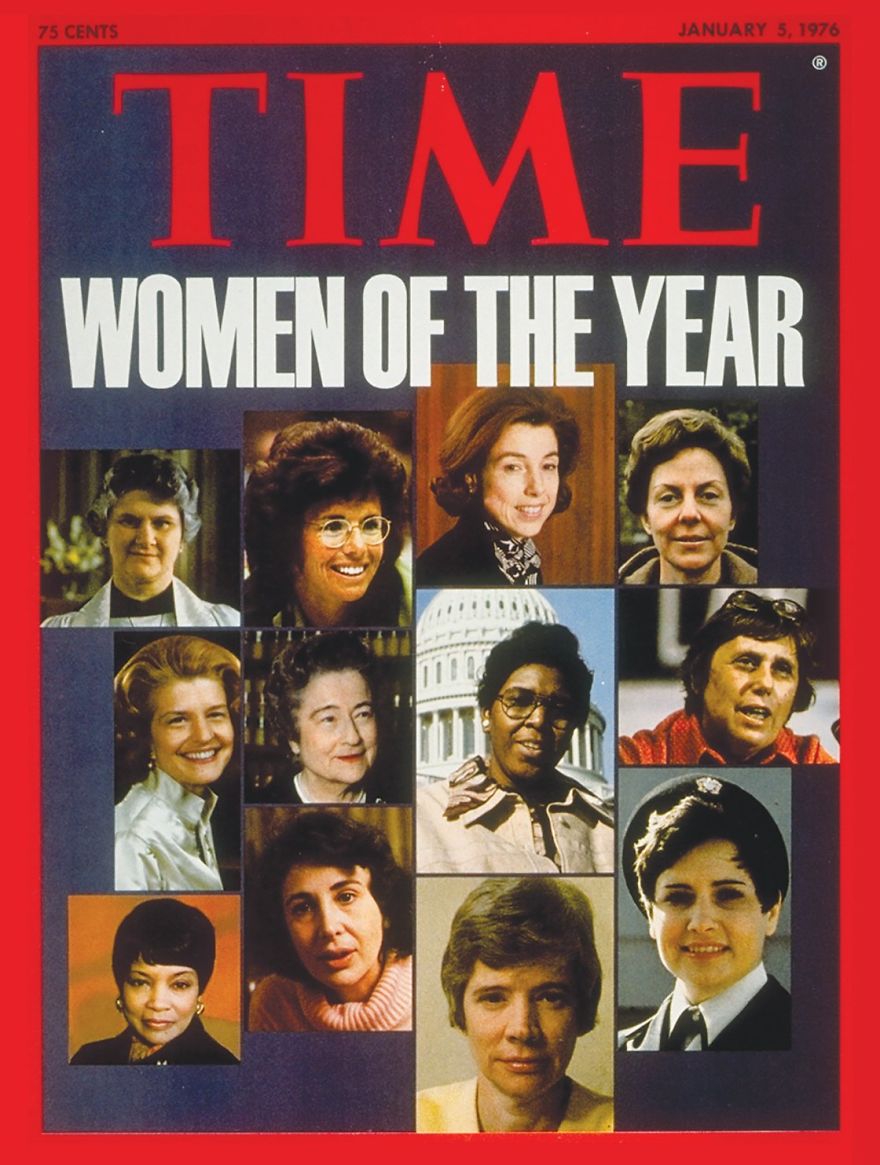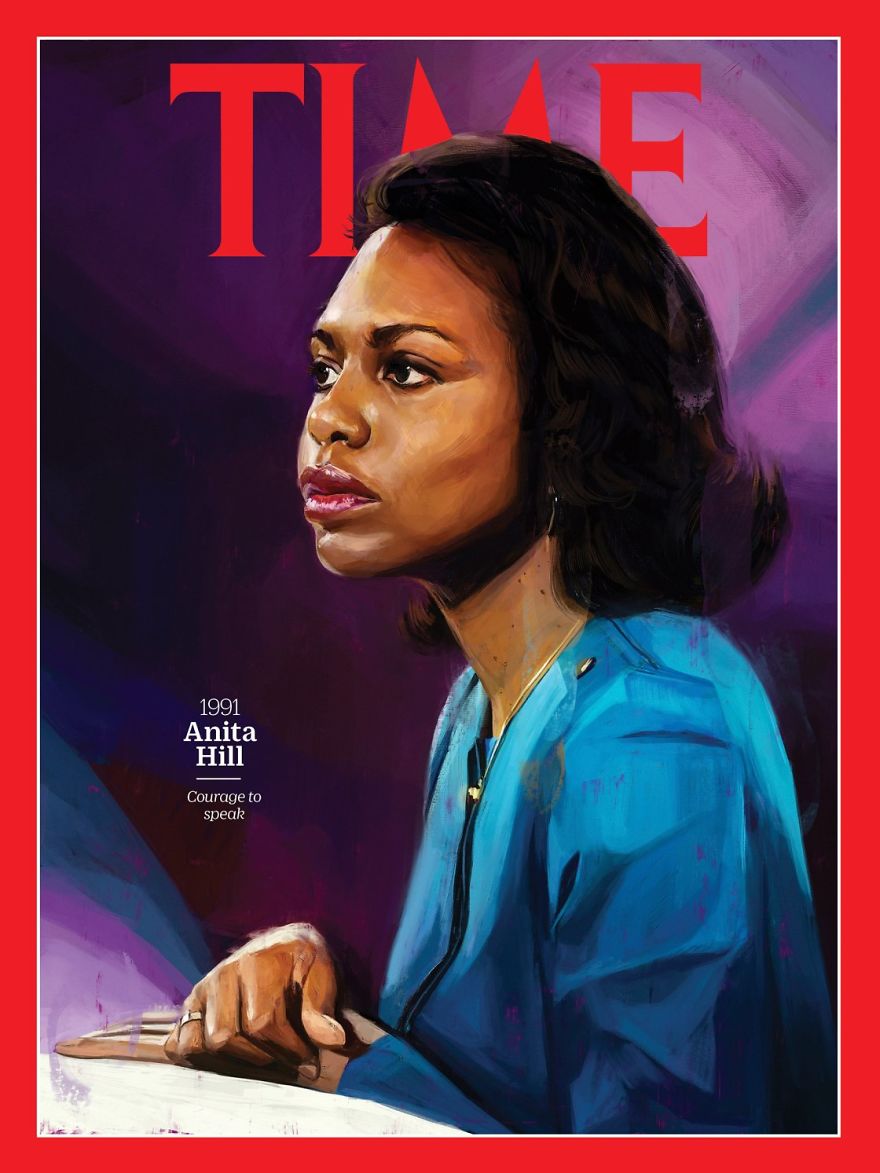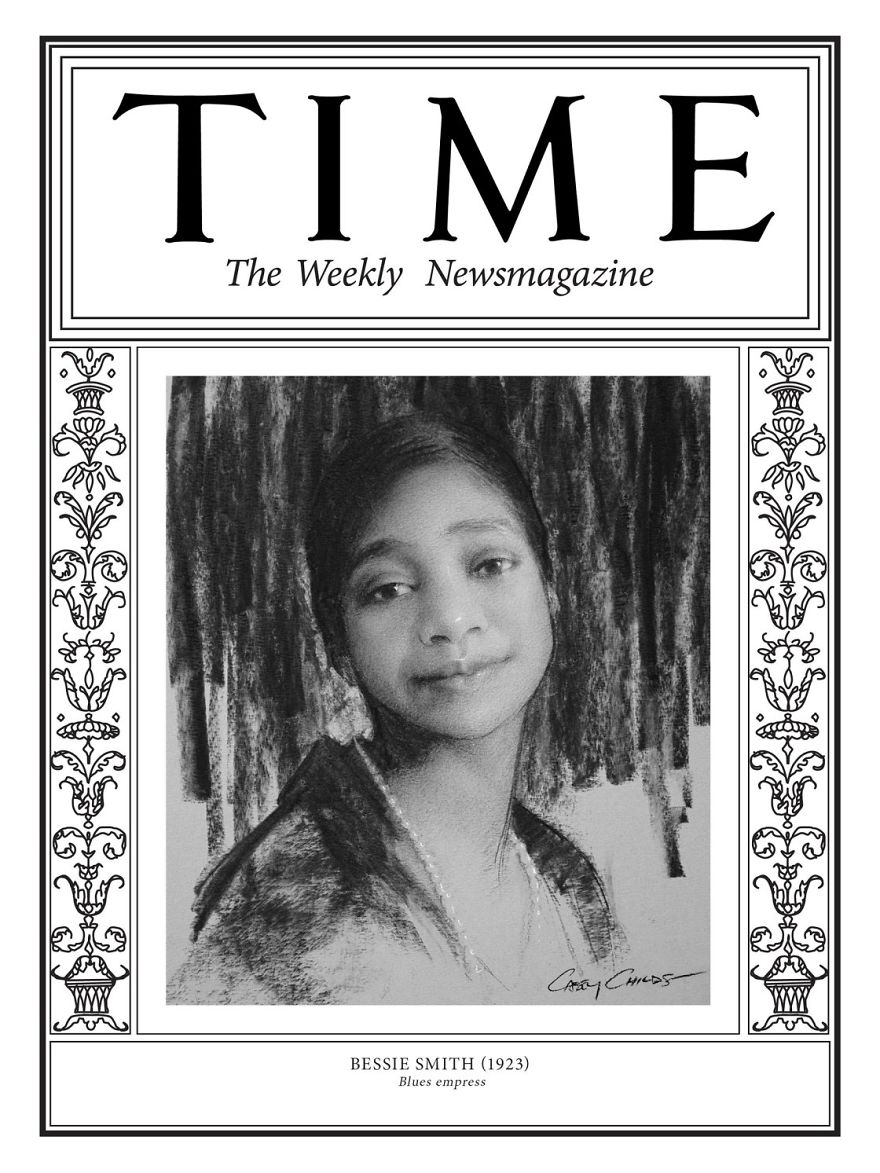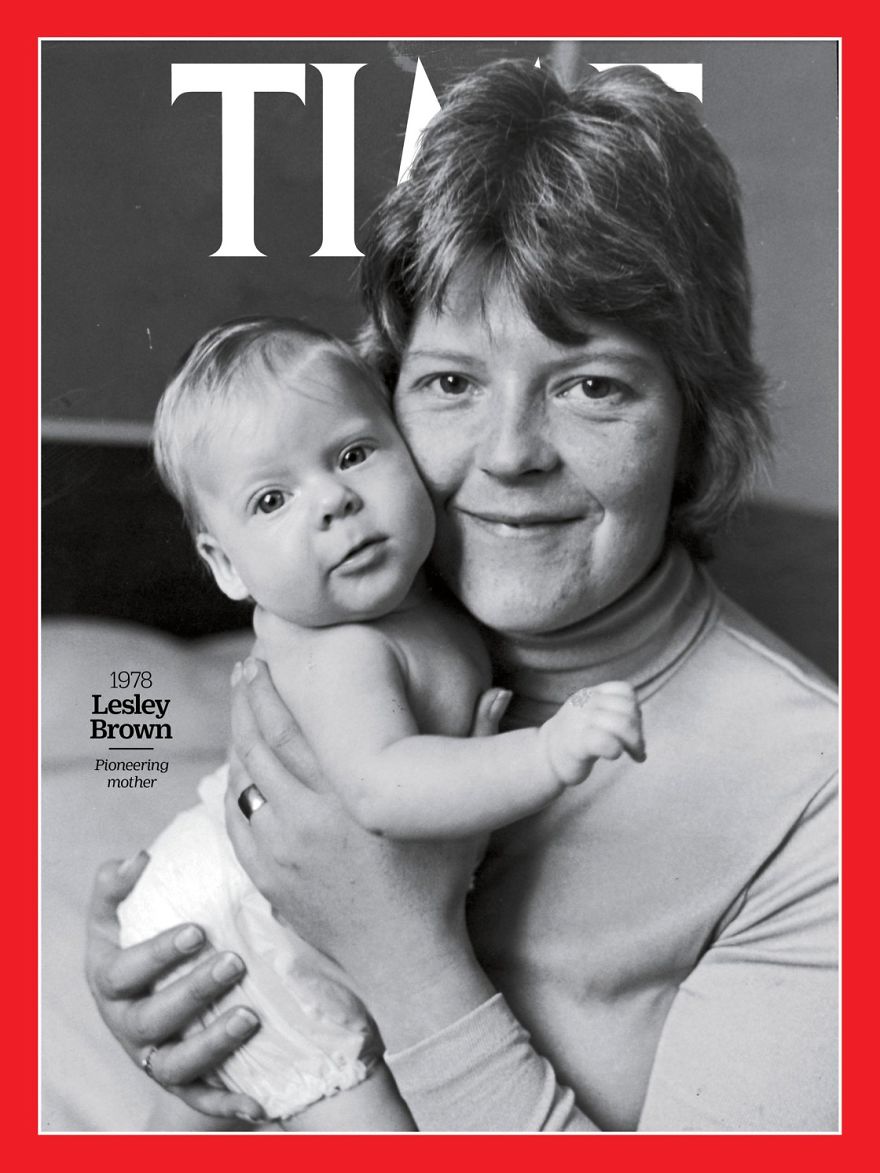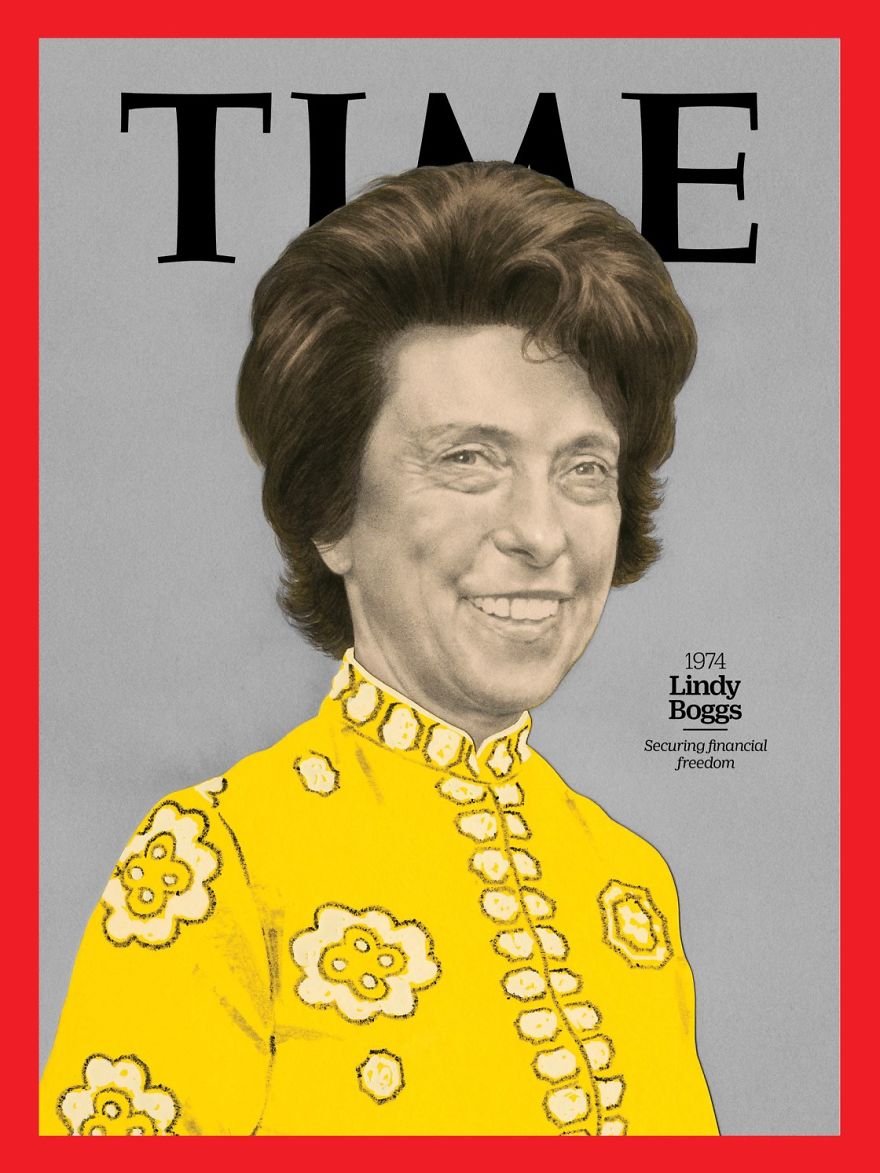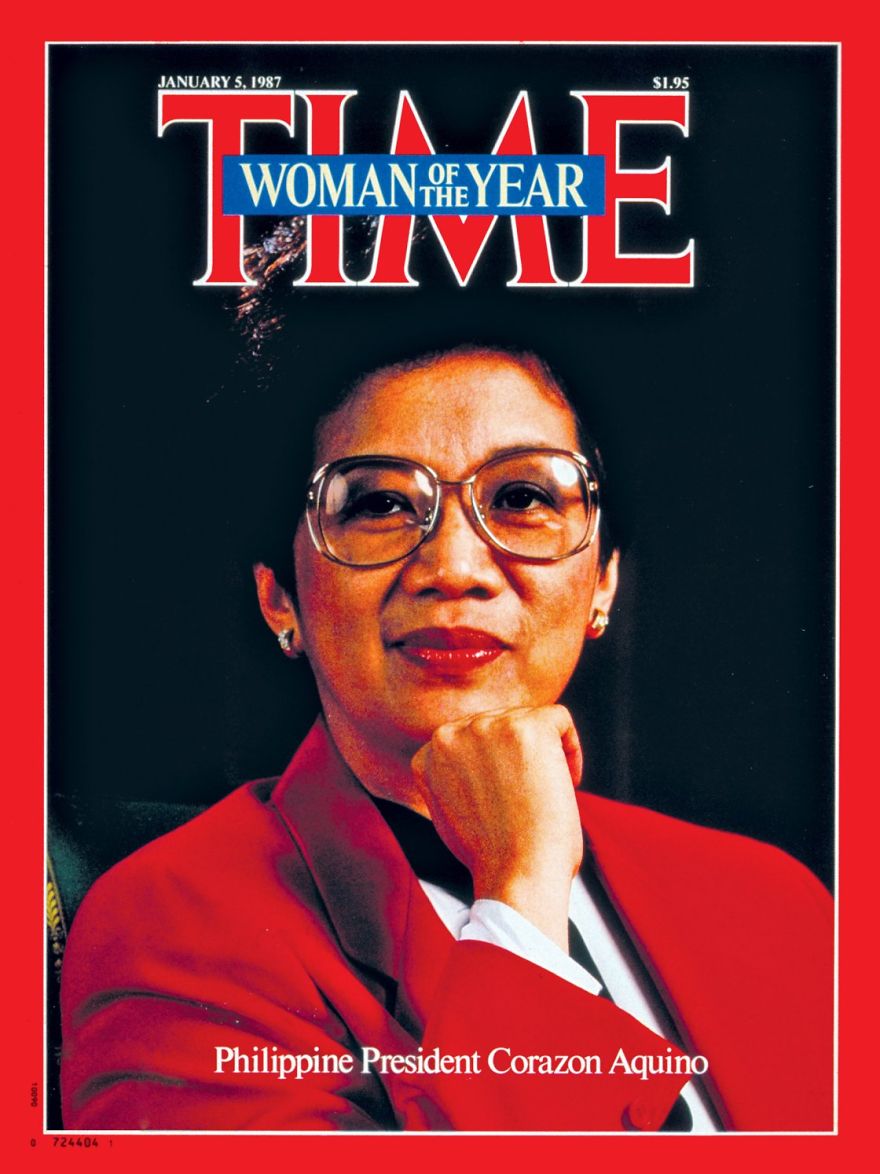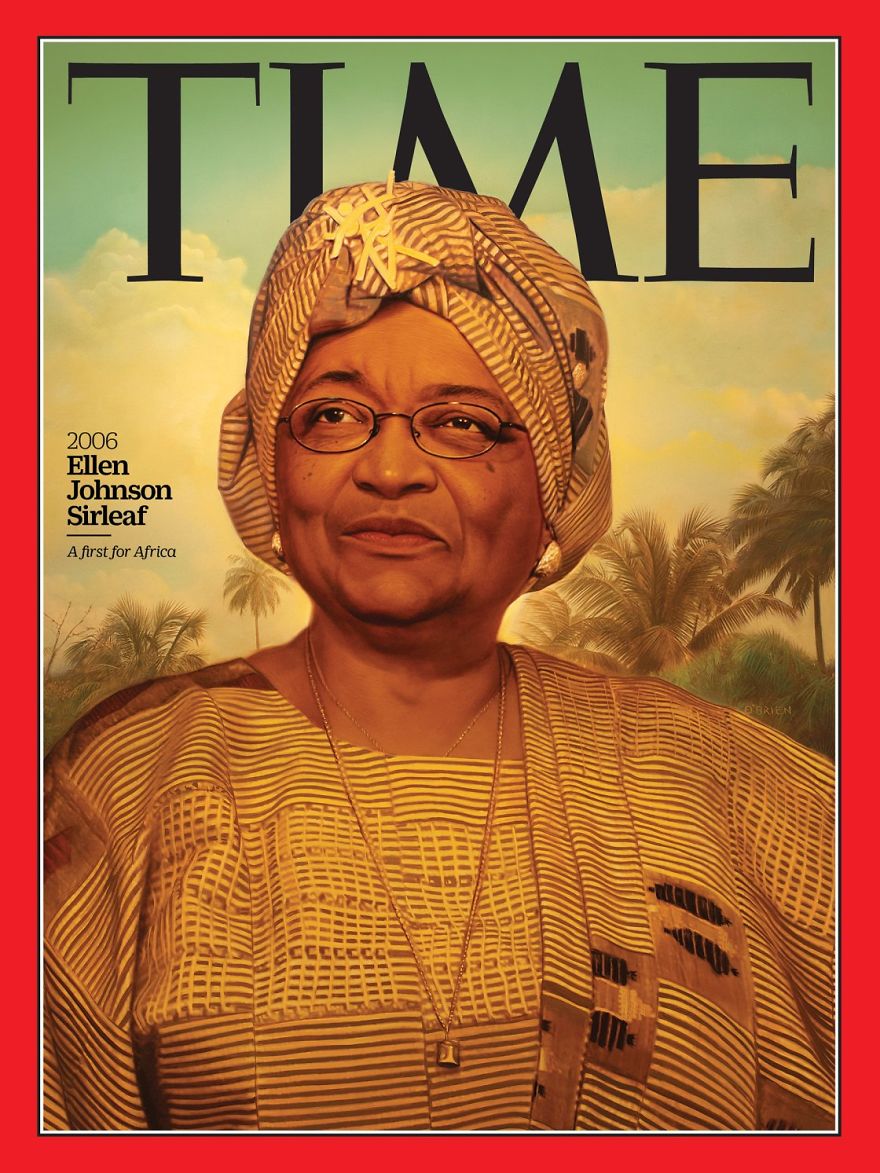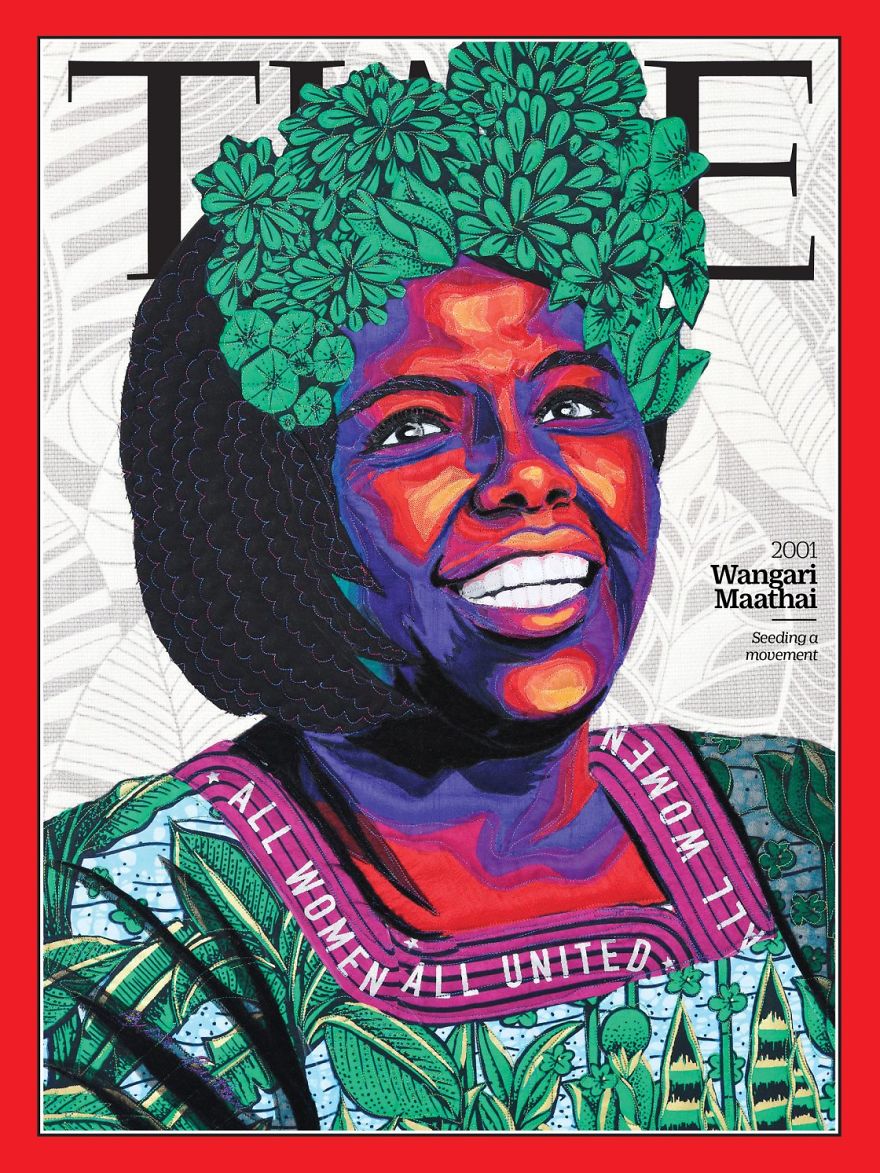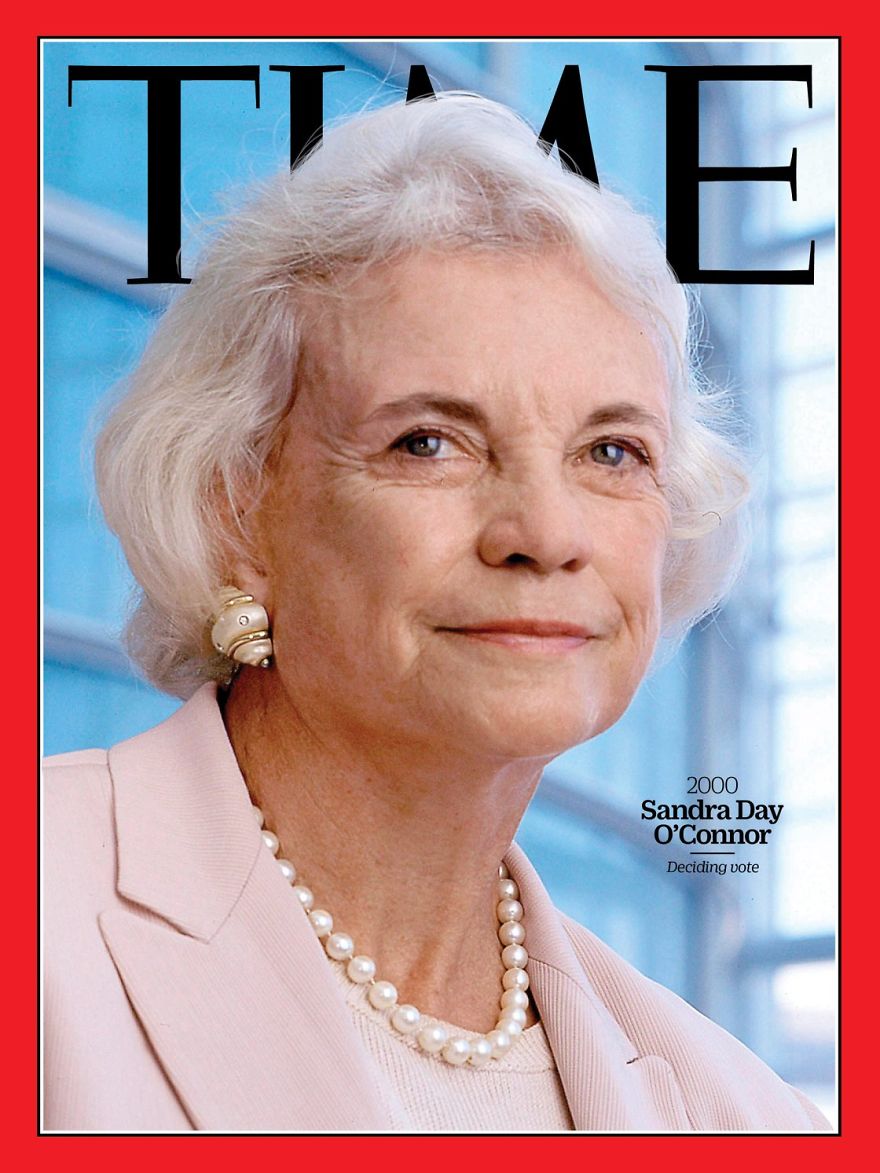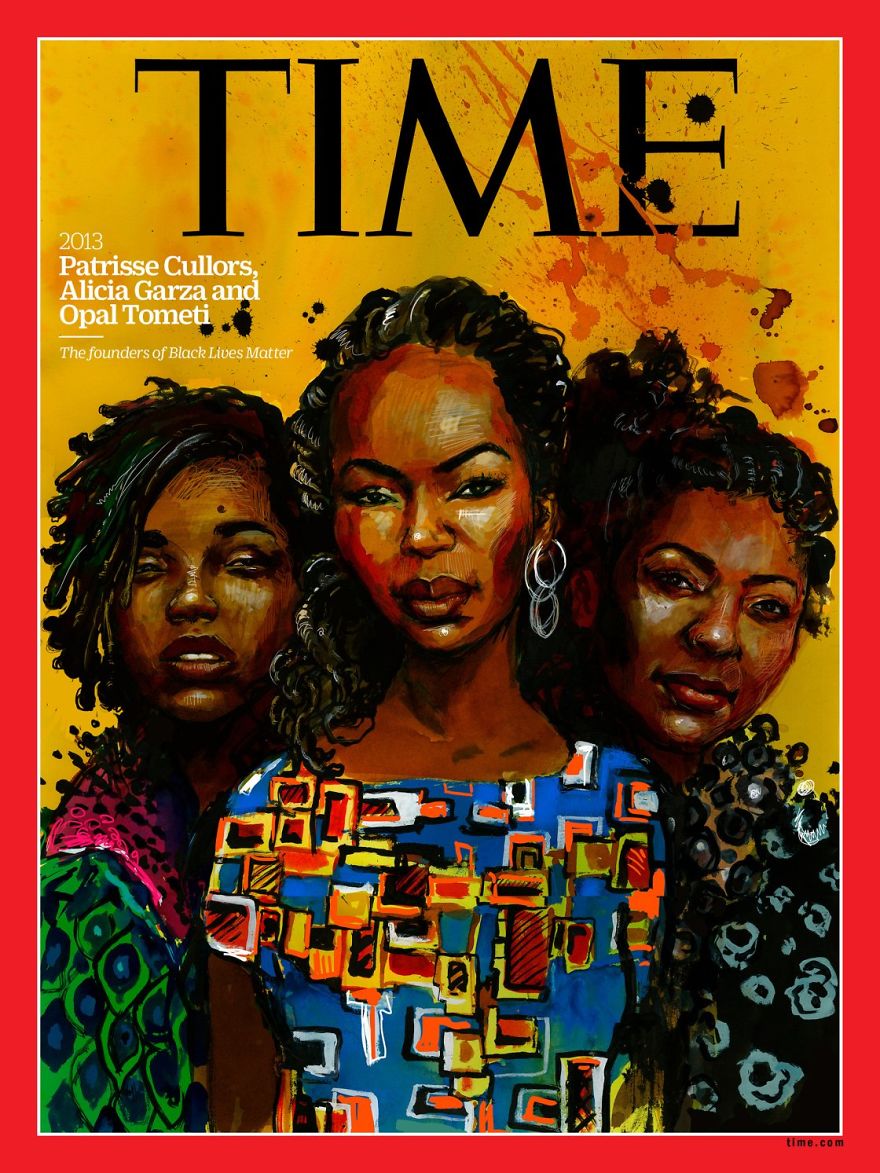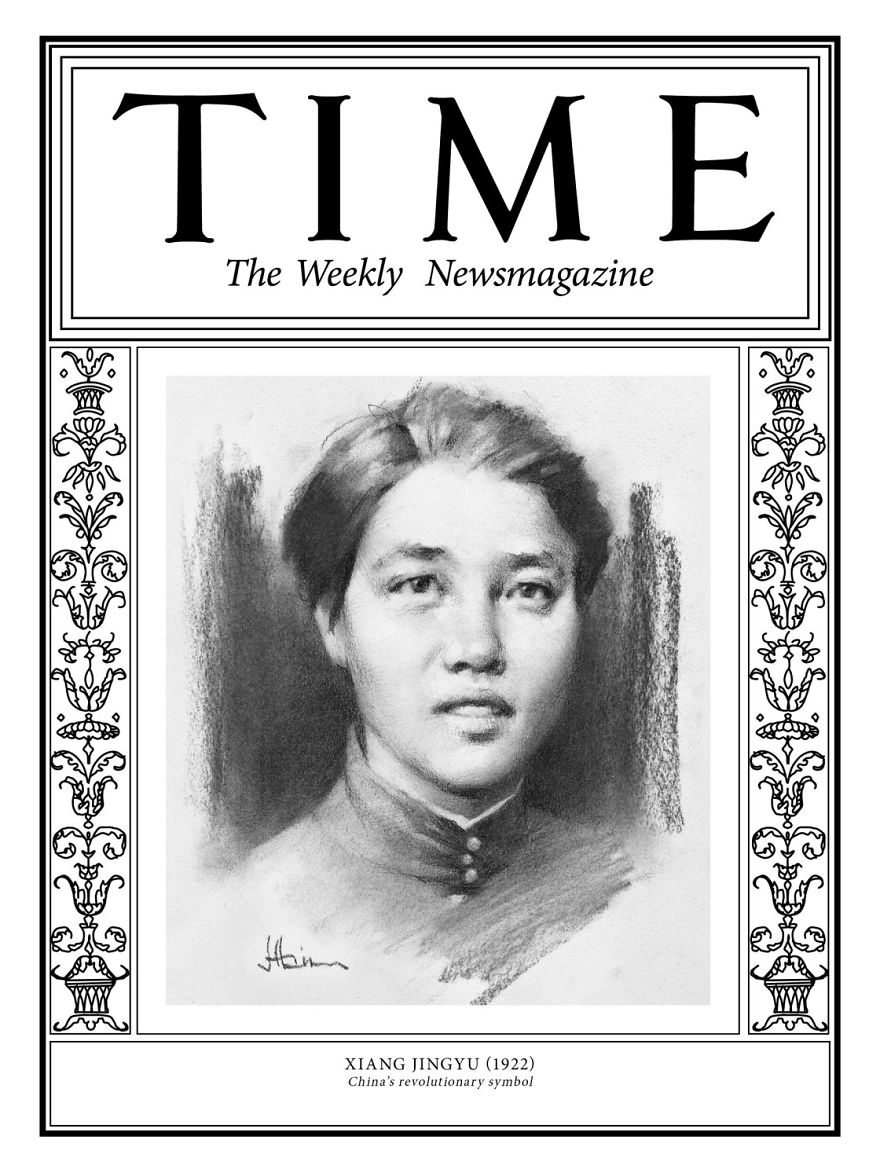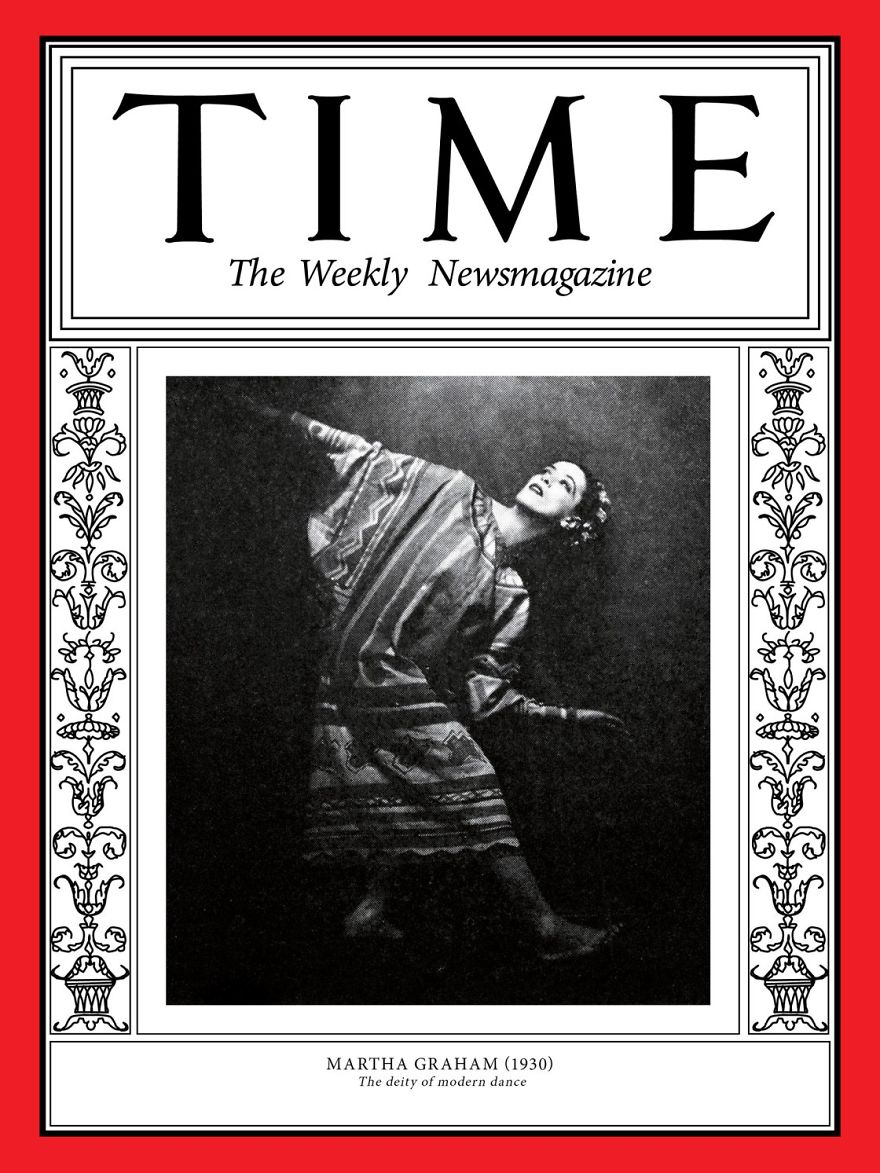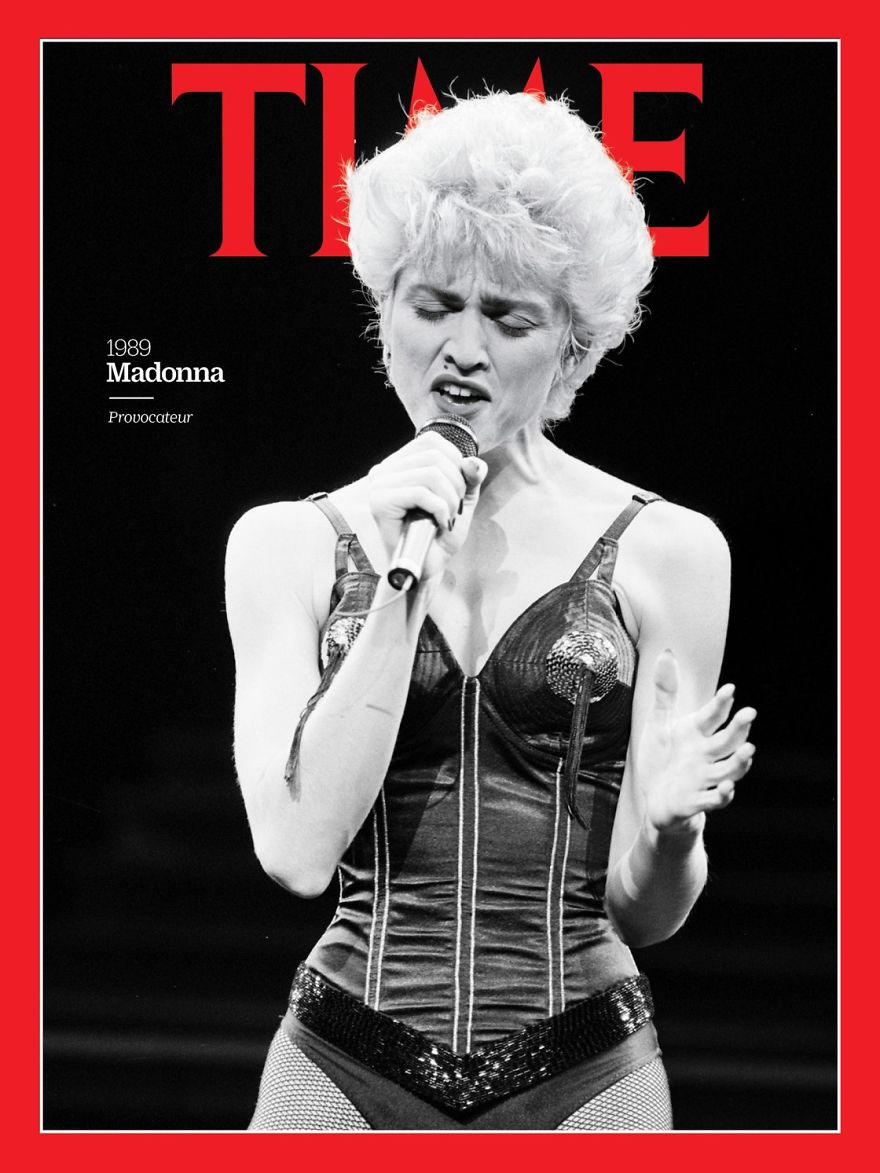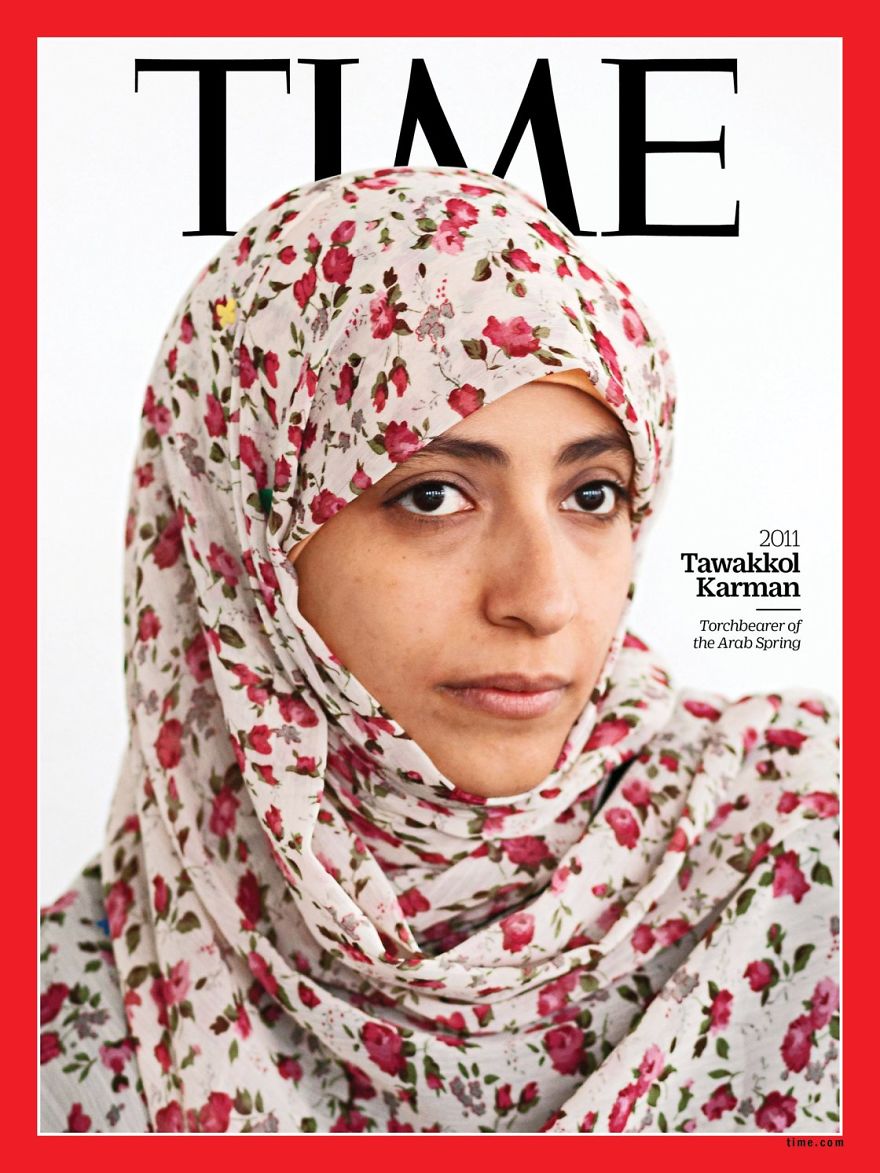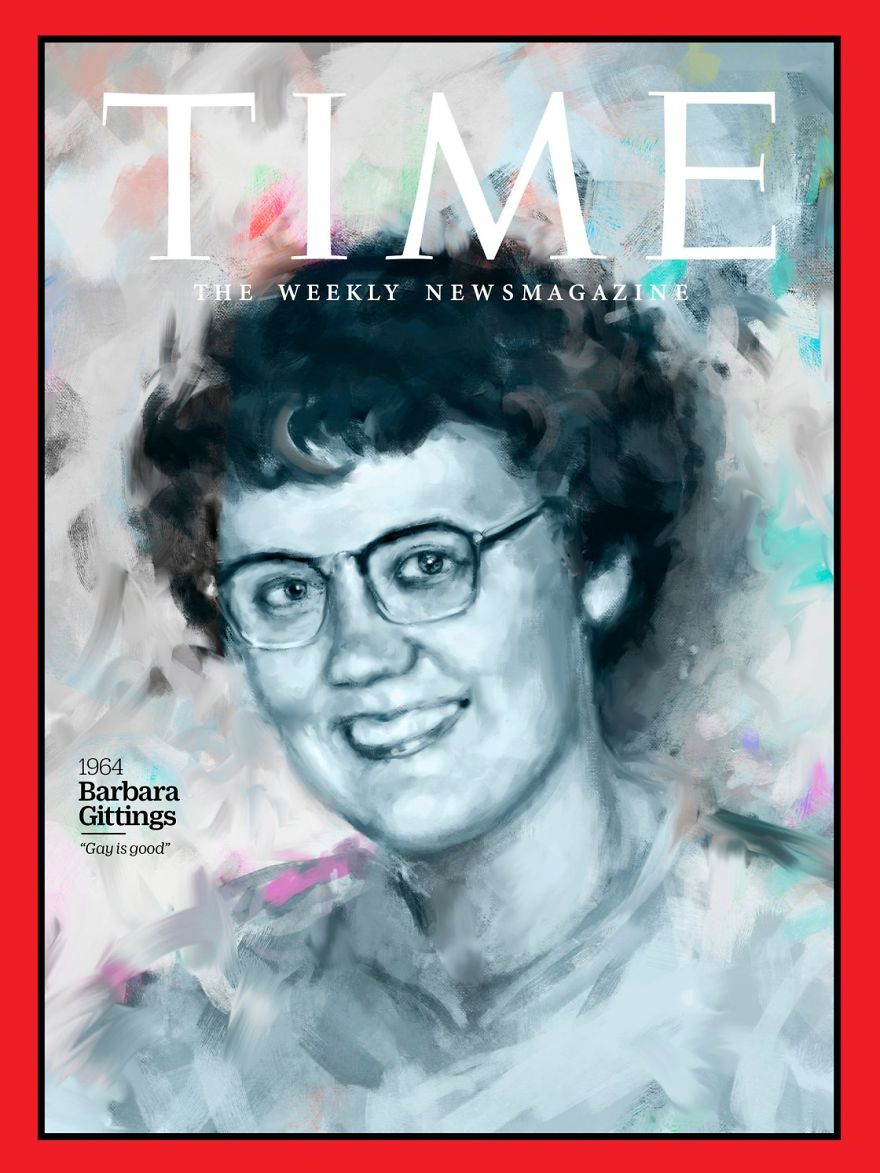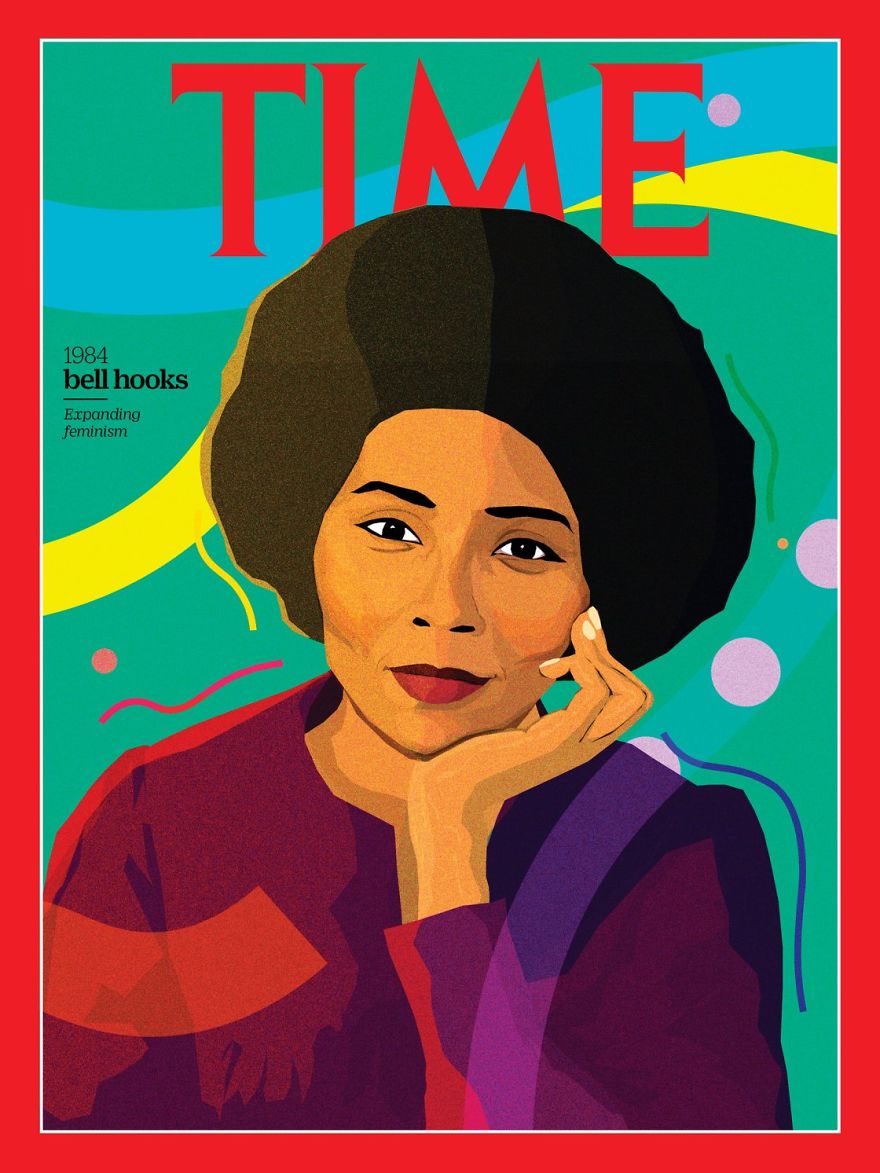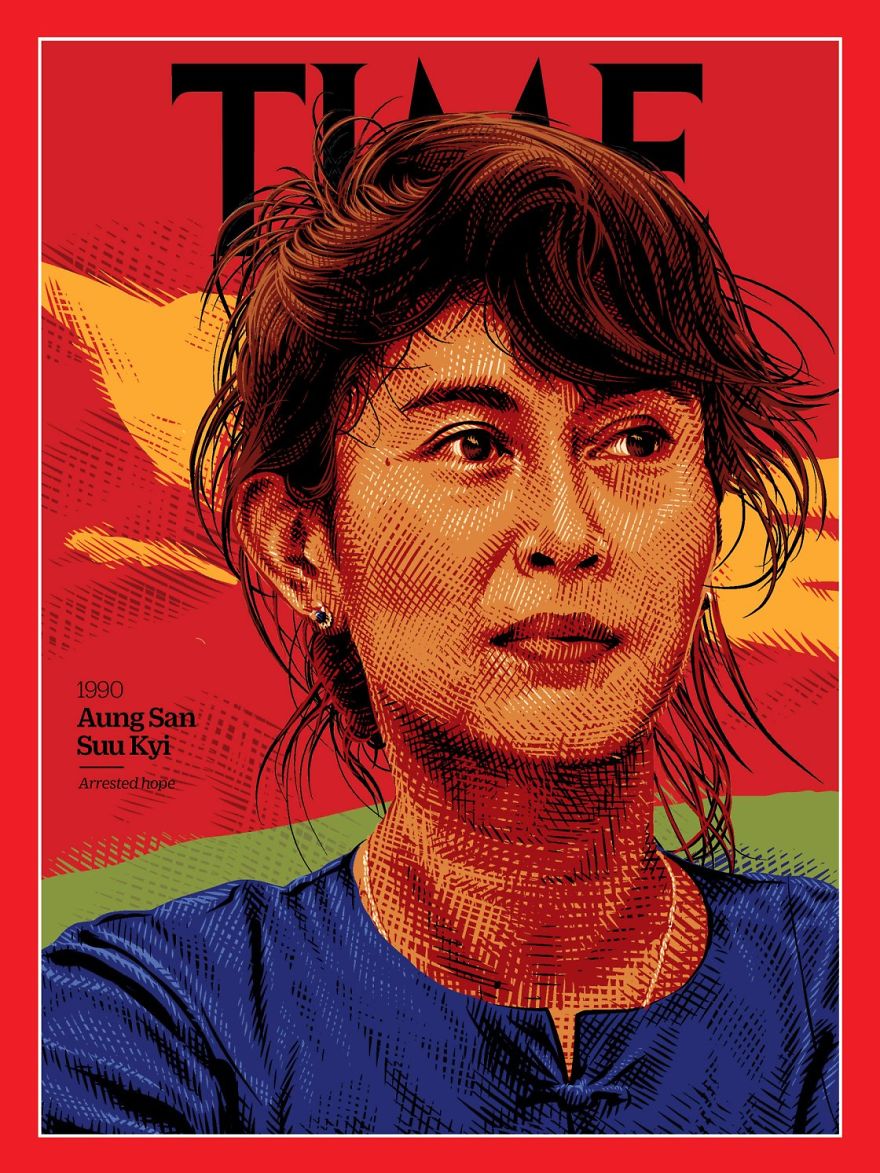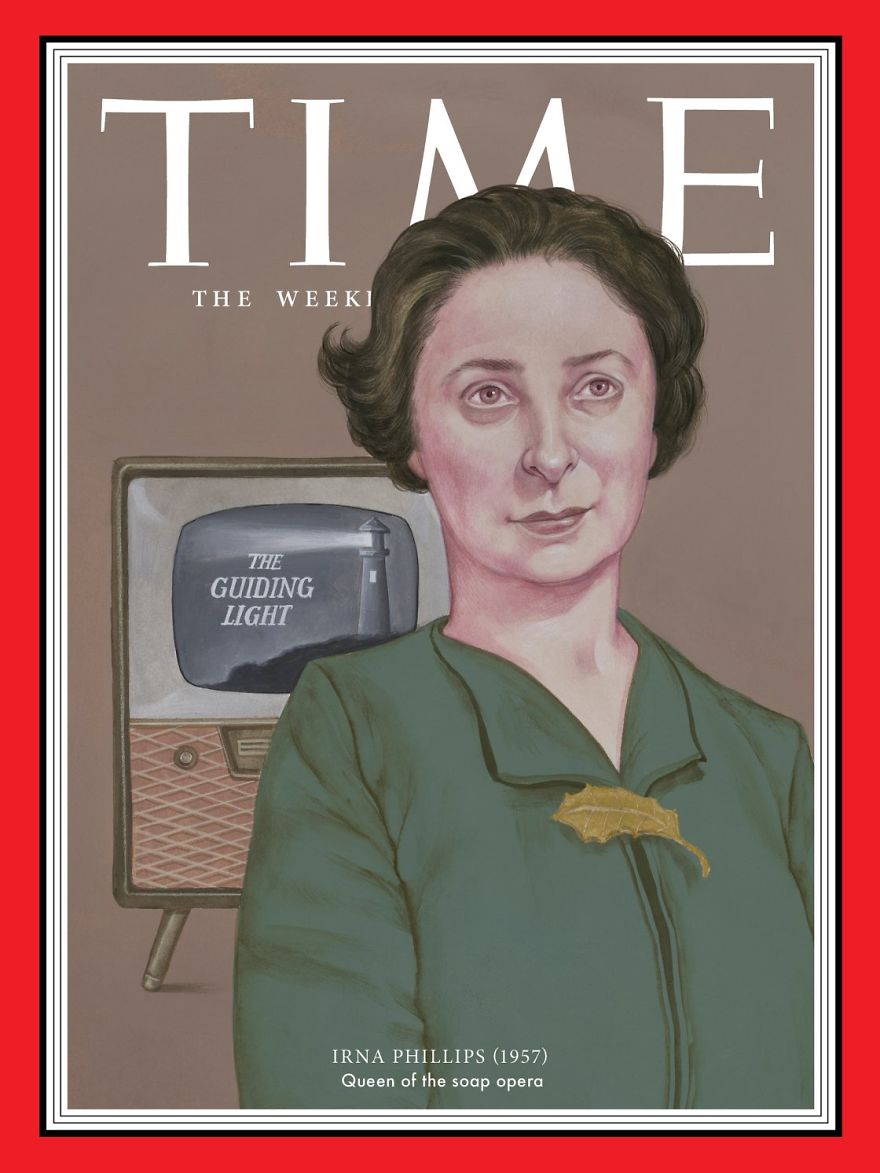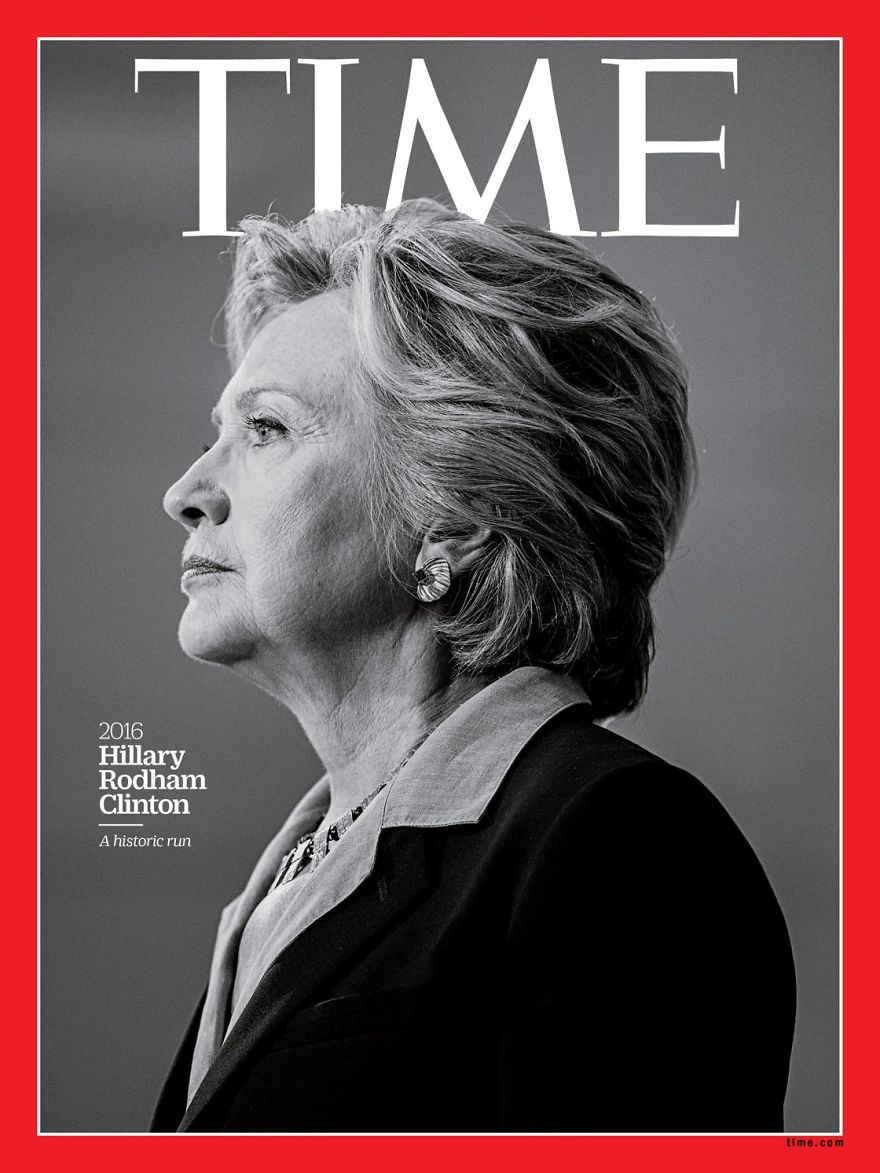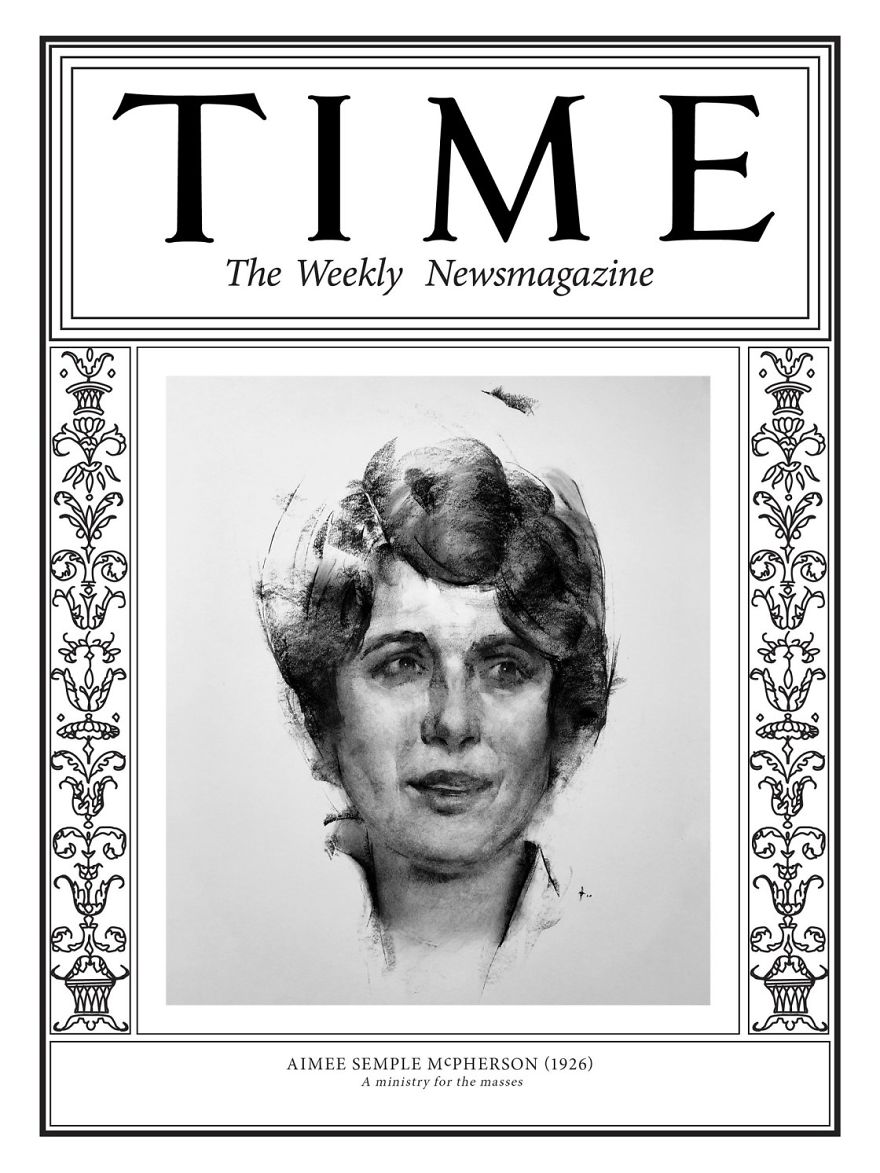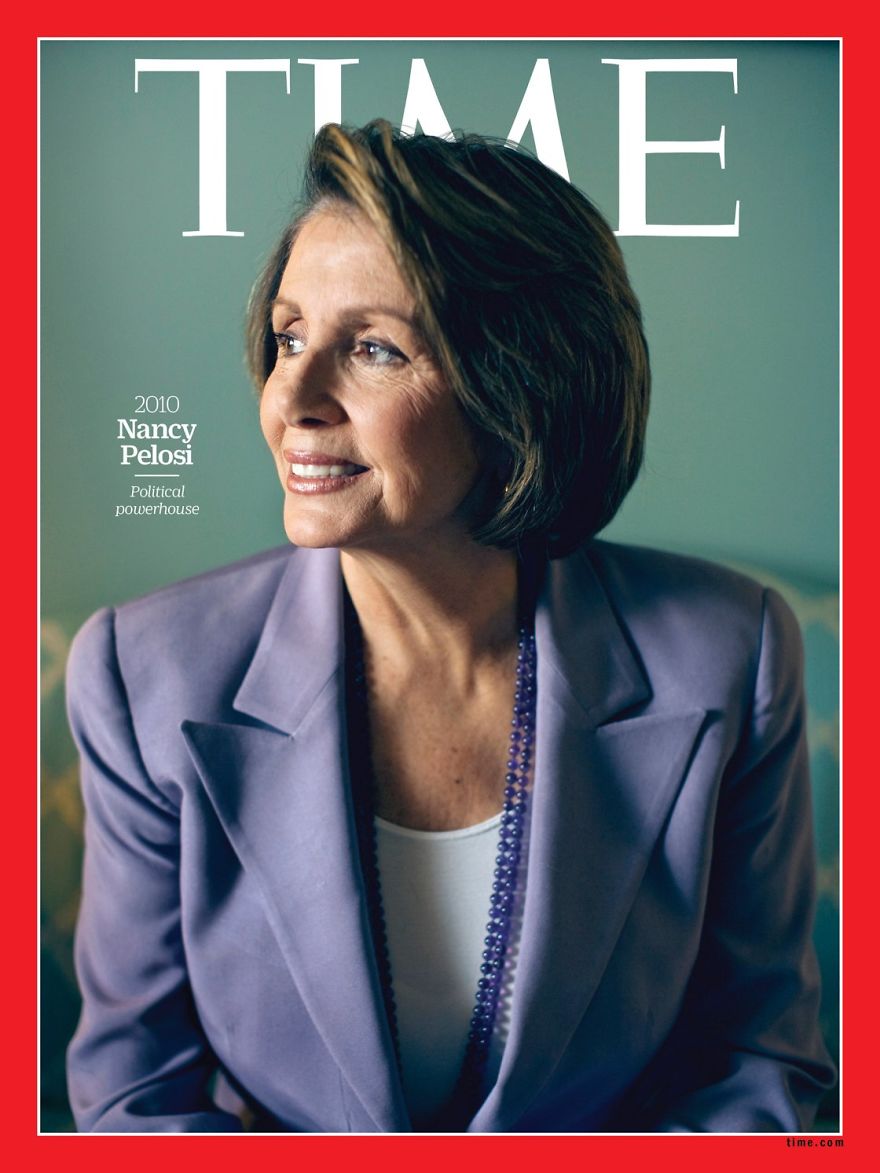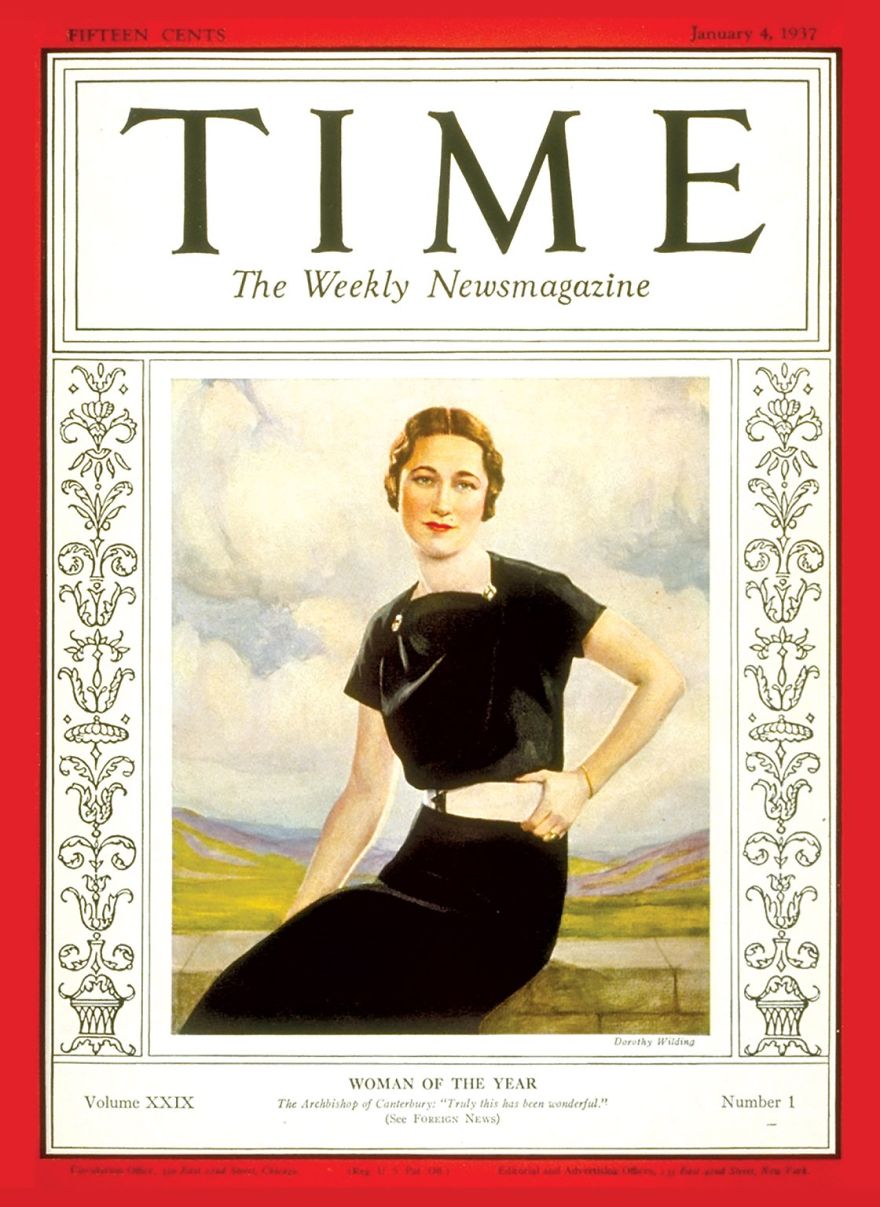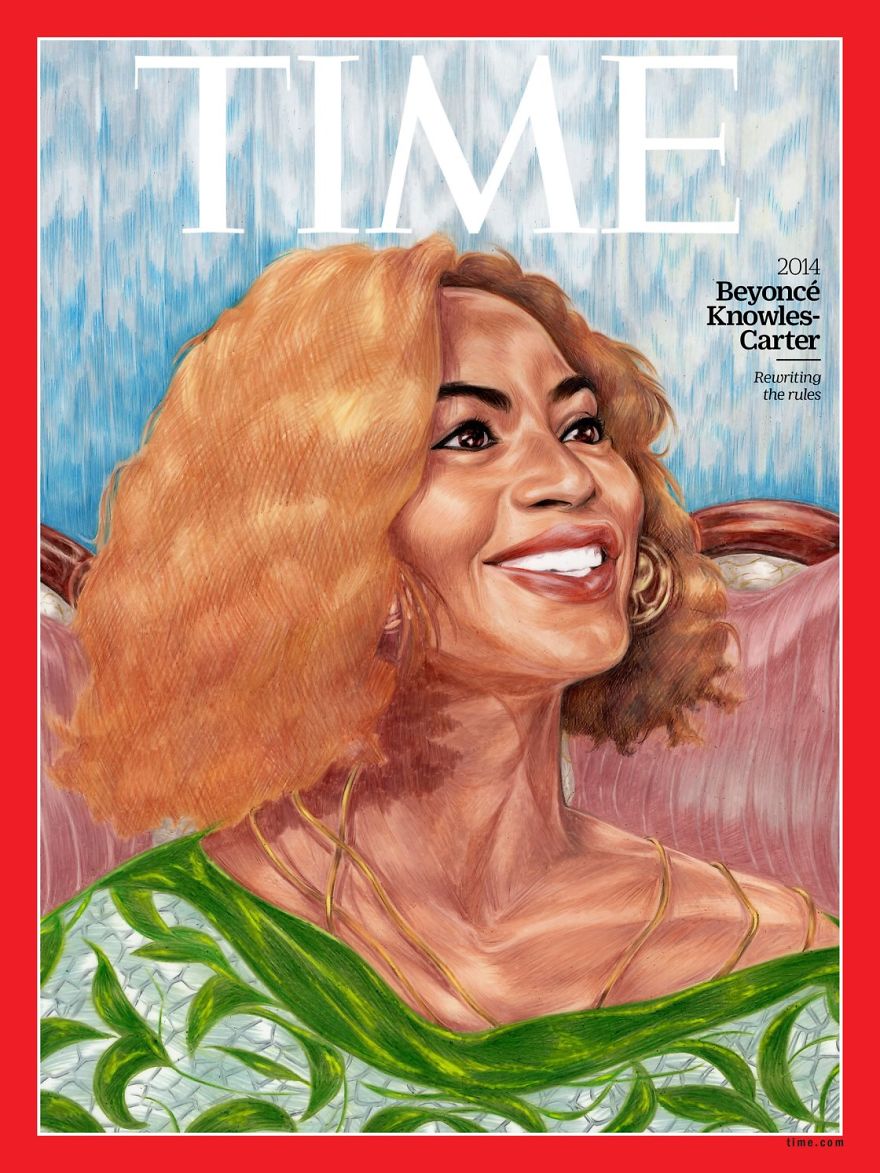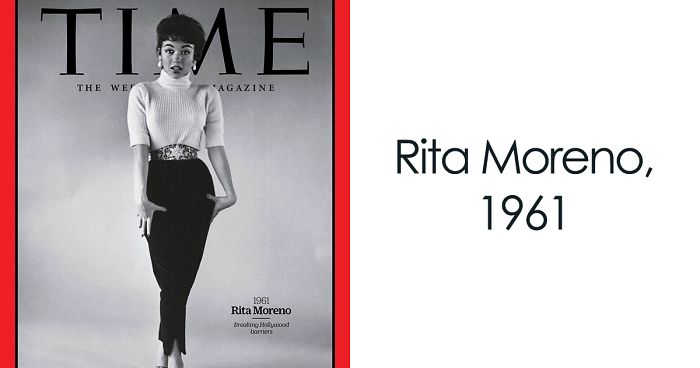
14Kviews
Time Releases ‘Woman Of The Year’ Covers That Contain The Most Influential Women Of The Past Century (30 Pics)
Women's Day is over, but our appreciation for women doesn't end. There are so many women that deserve recognition, that have done so much for our world to be a better place. That's why Time magazine decided to honor all females from 1920 to the present. They took the most influential and powerful women from the past century and made "Person of the Year" covers with them, explaining why they deserve to be there.
Over the past 100 years, only five women have been named "Person of the Year"—Wallis Simpson (1936), Elizabeth II (1952), Corazon Aquino (1986), Angela Merkel (2015), and Greta Thunberg (2019). So here are 100 women that have shined with their skills and ambition. Read about their achievements and vote for your favorite one.
Are there more women you wish were on the cover of Time magazine? Which one inspired you the most? Tell us in the comments!
More info: time.com
This post may include affiliate links.
2009: Malala Yousafzai
"When BBC Urdu asked Malala Yousafzai’s father if one of his students would blog about life under the local Taliban, his daughter took on the task. Her first post was published under the pen name Gul Makai (“cornflower”) on Jan. 3, 2009. She was 11 years old.
Over the next three years, Yousafzai wrote about her life and her desire to get an education, in a region where girls’ schools were being shuttered and bombed. As her renown grew, so did the threats against her life. On Oct. 9, 2012, a gunman from the Pakistani Taliban boarded a school bus, called her out by name, then shot her in the face. When I heard the news, I was shaken to the core—here was a girl, just a year or two older than my own children. But Yousafzai not only survived but thrived, as an author, activist, Nobel Peace Prize laureate and role model for anyone who wants to make the world a better place.
I often think about Yousafzai’s bravery in daring to raise her voice on behalf of others and our obligation to follow her example—to be vigilant in the protection of basic human rights, whatever our age, whatever our circumstance. We can start by heeding her words: 'Let us pick up our books and pens. They are our most powerful weapons.' — Jennifer Salke"
1997: Ellen DeGeneres
"Comedian and actor Ellen DeGeneres appeared on the cover of TIME in 1997 along with three seismic words: 'Yep, I’m gay.' The lead character on her sitcom, Ellen, came out at the same time, making DeGeneres the first to play a gay lead on American network TV. It was an enormous risk. At the time, polls showed that more than half of Americans believed same-sex relations were 'always wrong.' There was blowback.
However, ultimately the risk paid off, and not just for Ellen, who described the decision as 'the most freeing experience.' As she persisted and then thrived in show business, generations of LGBTQ people felt a new sense of possibility. 'If I hadn’t seen her on TV,' comedian Kate McKinnon, an openly lesbian cast member on Saturday Night Live, said in a tribute this year, 'I would’ve thought I could never be on TV.' – Katy Steinmetz"
1938: Frida Kahlo
"Frida Kahlo was often seen through the lens of her more famous husband. In 1938, a press release for her first solo exhibit initially described her as the 'wife of Diego Rivera' before conceding that 'she proves herself a significant and intriguing painter in her own right.' These days, it’s more common for Rivera to be viewed in her shadow. And Kahlo’s work in 1938 turned out to be instrumental in building her legacy, as she came to prominence around the world for her vivid and surreal self-portraits: in New York City, where that solo show was met with excitement and curiosity; in her hometown of Mexico City, where she sold her first major painting; and in Paris, where a work she painted that year would soon make her the first 20th-century Mexican artist to have a painting, The Frame, bought by the Louvre, beating even her husband to that milestone. But the struggle was far from over for Kahlo, who lived a tumultuous life beset by hardship and heartbreak.
She contracted polio as a child. At 18, she was the victim of a horrific bus accident that left her in debilitating pain. She miscarried several times; her relationship with Rivera was vexed by infidelity. Kahlo channeled this turmoil into breathtaking, iconoclastic art.
She depicted taboo topics like abortion, miscarriage, and breastfeeding; she accentuated her unibrow and mustache in defiance of gender norms. At a time when indigenous art wasn’t taken seriously, she incorporated Mexican folkloric touchstones into both her paintings and her unique fashion sensibility. She railed against capitalism and imperialism. Through her deconstruction of long-held beliefs about artistry—and her ability to express both torturous pain and unfettered joy in her art—she remains one of the most enduring artists of the 20th century. — Andrew R. Chow"
In her time it was unheard of for a woman to be her own person. Women were always in the shadows of their husbands. She was beyond remarkable!
1920: The Suffragists
"It was the culmination of generations of activism, and Carrie Chapman Catt, who had devoted three decades to the suffrage struggle, was among the crowds that celebrated the ratification of the 19th Amendment in 1920. 'Women have suffered agony of soul which you never can comprehend, that you and your daughters might inherit political freedom,' Catt told a victorious throng. 'Prize it!'
Among those agonies was an ongoing debate about how women should go about securing those rights—and the ongoing disenfranchisement of women of color. Catt opted for pragmatism and politics, lobbying on a state level and in the halls of Congress. Along the way, she tussled with Alice Paul and Lucy Burns, militant suffragists who preferred a more dramatic approach. Paul and Burns organized public parades and staged a groundbreaking, years-long White House picket with banners that implored President Woodrow Wilson to act. The 'Silent Sentinels' endured arrests and imprisonment in a squalid workhouse where they were brutalized and force-fed. Which approach was more effective?
'Every movement for social change needs both,' says suffrage historian Johanna Neuman. For women of color, though, the 1920 victory did not guarantee voting rights. Despite their fervent participation in the suffrage struggle, their voting rights were secured only with the 1965 Voting Rights Act."
1953: Rosalind Franklin
"Without Rosalind Franklin, there may have been no James Watson and Francis Crick—or, more specifically, no global fame and Nobel prize. Trained as a chemist, Franklin created an X-ray photograph that provided evidence of the double-helix structure of DNA molecules. In 1953, Watson, who had been investigating the structure of DNA as well, was shown the image and immediately knew its significance. 'The instant I saw the picture my mouth fell open and my pulse began to race,' he wrote in his 1968 book, The Double Helix. 'The black cross of reflections which dominated the picture could only arise from a helical structure.'
The image was not proof, but critical evidence, as was the data Franklin had derived when she analyzed the image. Watson, Crick and their colleague Maurice Wilkins came by the image and data legitimately in the course of their work, and no one ever seriously alleged intellectual theft. But no one pretends either that they could have achieved their later breakthrough, proving the double-helical structure of DNA, without Franklin’s work. Yet when Watson and Crick published their findings in 1953, and when they and Wilkins won the Nobel Prize for the same findings in 1962, Franklin was forgotten. In 1958, at age 37, Franklin died of cancer.
Only now is she being appreciated. In my cancer advocacy work, I’ve met female scientists who are welcomed and respected by their male colleagues. I’m sorry Rosalind Franklin wasn’t. But from now on, whenever you hear the names of the two men who discovered DNA, make it a troika: Franklin, Watson, and Crick—in that order. — Katie Couric"
1935: Amelia Earhart
"When Amelia Earhart settled into her airplane on Jan. 11, 1935, ready to set off on an unprecedented solo flight across the Pacific Ocean, the aviator wasn’t just thrilling her fans. She was defying those who continued to believe that a woman’s place was in the home – not the office, not the factory, not the pilot’s seat. In the days before she planned to fly 2,400 miles from Hawaii to California, an open letter urged her to stand down, noting that ten others had died trying.
Despite poor weather in Honolulu, she pressed on, and about 18 hours later she was landing in Oakland, becoming the first person, woman or man, to perform the feat. Two years later, Earhart would fail to complete an even more dangerous attempt to fly around the world. But her grit and derring-do, on full display as thousands of cheering supporters swarmed her plane that day in Oakland, forever expanded expectations for just how far the fairer sex could go. 'Women must try to do things as men have tried,' Earhart once said. 'When they fail, their failure must be but a challenge to others.' – Katy Steinmetz."
1987: Diana, Princess Of Wales
"It’s easy to forget today what pariahs people with AIDS were in the year 1987. Ignorance, superstition and an aura of sexual seediness swirled around those afflicted, their cause of death noted in obituary columns with a vague lack of specifics that protected their relatives from opprobrium. The 26-year-old Princess of Wales lived with the specter of AIDS every day. In the loneliness of her failing marriage to Prince Charles, gay men were the bedrock of her private world: fashion designers, ballet dancers, art dealers and numerous members of the palace staff. They sympathized with her, escorted her, lightened her load. It pained her to watch them sicken and die. In April 1987, Middlesex Hospital invited her to open the first ward in the U.K. dedicated to the treatment of HIV/AIDS.
Accepting the invitation was the kind of socially progressive statement that private secretaries usually steered their principals to avoid. Diana was intensely nervous, even though she unhesitatingly agreed to do it. She knew it was the chance to dispel the stigma surrounding the disease. With her instinctive understanding of the power of gesture, she resolved not only to open the new ward but to shake the hands of 12 male patients without gloves.
Diana, Princess of Wales, shakes hands with an unidentified 32-year-old AIDS patient in his private room at Middlesex Hospital, London, April 19, 1987. Diana, Princess of Wales, shakes hands with an unidentified 32-year-old AIDS patient in his private room at Middlesex Hospital, London, April 19, 1987. AP Such was the fear of ignominy that only one patient, a 32-year-old named Ivan Cohen, agreed to be photographed with Diana, and only on condition that the picture be taken from behind. She extended her hand. The cameras rolled. A broken taboo ricocheted round the world: Diana, exuding compassion and confidence, clasping the terminally ill AIDS patient’s hand in hers. For the next decade, she continued her visits to hospitals and bedsides. A nurse present at Diana’s historic original visit told the BBC, 'If a royal was allowed to go in and shake a patient’s hands, somebody at the bus stop or the supermarket could do the same. That really educated people.' That iconic moment also had a profound impact on Diana.
It clarified what her royal status meant—a new kind of global power. Whatever its frustrations, being the Princess of Wales gave her the ability to change lives and to expand tolerance. She saw what could happen when humanitarian concern is connected with the global media. Celebrities have tried to emulate her ever since. — Tina Brown"
1929: Virginia Woolf
"In 1928, addressing distinguished female students at the University of Cambridge, novelist and critic Virginia Woolf declared, 'A woman must have money and a room of one’s own if she is to write fiction.' Replace 'write fiction' with any creative, intellectual or political pursuit, and in a sentence, Woolf had summed up millennia of inequality. In her 1929 extended essay 'A Room of One’s Own,' Woolf played with both fiction and nonfiction, building on the themes of her lectures.
She invented the indelible figure of Judith Shakespeare, sister of William, who had equal talent but would never become a world-famous playwright because she was barred from education and relegated to the home. Suddenly, readers imagined a world history filled with the ghosts of gifted women and the works they never had the opportunity to create.
Before 1929, Woolf had established herself with Mrs. Dalloway and To the Lighthouse as one of the boldest novelists of the 20th century, and then when 'A Room of One’s Own' was published to both celebration and outrage, she became a political visionary too. Her essays were—and still are—a rallying call to women around the world. — Lucas Wittmann"
1949: Simone De Beauvoir
"Simone de Beauvoir was born in 1908 into an upper-class Catholic family. While studying for the competitive agrégation exam in philosophy, which she passed in 1929, she met Jean-Paul Sartre, the great love of her life. In 1949, she published The Second Sex and revolutionized feminist thought. She won France’s highest literary prize in 1954 for her novel The Mandarins and, in 1971, wrote the text of the Manifesto of the 343, a French petition to legalize abortion.
At 16, I stumbled upon an image of de Beauvoir sitting in Café de Flore in Paris with a stack of books. 'She’s a famous author,' my mother told me. I went to the library and borrowed The Second Sex, expecting an erotic book that would answer my burning questions. The first few pages were a disappointment. This wasn’t a book about love or sex, nor a treatise on pleasure. But I kept going. It was a revelation. De Beauvoir exposed a long-hidden truth: that there is no female nature.
She consulted biology, history, mythology, literature, ethnology, medicine and psychoanalysis to question the roles assigned to women. The book told me that I control my destiny. If there is no fixed female essence, then we too are only what we do. The Second Sex provided me with weapons to understand, to defend, to respond and to persuade. It gave me the desire to write, an exercise in reclaiming the self. De Beauvoir knew: 'Freedom is an inexhaustible source of discovery, and every time we give it a chance to develop, we enrich the world.' — Leïla Slimani, translated from French by Gretchen Schmid."
1948: Eleanor Roosevelt
"Having held the title from 1933 to 1945, Eleanor Roosevelt was the longest-serving First Lady in U.S. history. What she did with the office was impressive: by crisscrossing the country to promote President Franklin D. Roosevelt’s agenda, and by producing a radio show and newspaper column, she showed that First Ladies could play an active part in Executive Branch affairs.
And yet she left an even greater legacy after her time in the White House ended. When FDR died in 1945, his successor, Harry S. Truman, appointed the erstwhile FLOTUS to be America’s first delegate to the newly created United Nations. As chair of the U.N. Commission on Human Rights, she worked in the years after the Holocaust to prevent future world wars and spearheaded the Universal Declaration of Human Rights, which the General Assembly adopted on Dec. 10, 1948.
Its statement that 'All human beings are born free and equal in dignity and rights” is still considered a foundation of international human rights law. It’s no wonder she called that work her “most important task.' — Olivia B. Waxman."
1934: Mary McLeod Bethune
"Mary McLeod Bethune’s résumé was already peppered with superlatives and onlys, but in 1934 the civil rights activist was a woman on the brink of the most political power wielded by an African-American woman to date. By continually lobbying the federal government to tend to the needs of African Americans, she had already gained the ear of Presidents Coolidge and Hoover.
As the nation reeled during the Great Depression, she pushed Roosevelt to pay attention to black Americans too. Soon, the former teacher and women’s group organizer would step into an official New Deal role as head of the National Youth Administration’s Division of Negro Affairs and head of what would be known as FDR’s “Black Cabinet,” becoming the highest-ranking African-American woman in government and the first ever to head a federal department.
During her government tenure, she fought for integration and against segregation, discrimination and lynching. As a colleague once said, “No one can do what Mrs. Bethune could do.” — Erin Blakemore."
1945: Chien-Shiung Wu
"Few people, when asked about the Manhattan Project and the weapons it created, call to mind the name Chien-Shiung Wu. But without the physicist, the project might have failed, perhaps prolonging World War II into 1946 and beyond. Wu was born in China in a town north of Shanghai in 1912, to parents who not only believed in educating girls but also founded a school that took care to include them.
Wu emigrated to the U.S. in 1936, where she ultimately taught physics at Princeton University, and where she made two key contributions to building the bombs that ended the war. The first came in 1942 when Enrico Fermi was having trouble keeping his plutonium chain reaction running at a government research complex. As the tale is told, he was advised to 'ask Miss Wu.' She correctly diagnosed the problem as xenon contamination.
The second was after Wu formally joined the Manhattan Project when she helped develop the method for separating nonfissionable uranium 238 from fissionable U-235—the bomb’s key fuel. When the weapons were used in 1945 and the war was won, names like Fermi and Oppenheimer would be recalled best. But all owe some of their notoriety to the wisdom of Miss Wu. — Jeffrey Kluger"
1942: The Resisters
"Historians who hail the heroes of World War II typically focus on soldiers storming the beaches of Normandy or Allied troops liberating concentration camps. Rarely remembered are the networks of quiet, effective resisters who also risked their lives to thwart Nazi atrocities while the war raged on. These resisters are exemplified by women like Miep Gies, who in 1942 decided without hesitation to hide Anne Frank and her family along with others in Amsterdam.
She later preserved the teen’s diary, which allowed future generations to learn about life during the Holocaust and hear Anne’s unique voice. That same year, 28-year-old Haviva Reik enlisted with the pre-state of Israel’s elite Palmach fighting force and later joined a unit of paratroopers, hoping to be sent to her native Slovakia to rescue Jews trapped under Nazi occupation. The British refused to transport a woman for a military mission, so Reik secured a ride from American pilots and met her colleagues behind enemy lines, in the middle of the Slovakian national uprising.
After arriving, she fed starving Jewish residents, helped some escape and eventually rallied Jewish partisan fighters. In 1944, she was captured and killed by Nazi collaborators. Hannie Schaft, another young dissenter, went from law student to legendary fighter when she and two friends seduced and killed Nazis as part of their work with the Dutch resistance. Her tactics were so infamous that Germans referred to her simply as “the girl with the red hair.” And Hannah Szenes, who grew up experiencing anti-Semitism in Hungary, joined the British army in Palestine, parachuted into Yugoslavia and was captured trying to save Jews at the height of their deportation from her home country.
Despite being tortured and put on trial, Szenes refused to betray her mission and was also executed in 1944. In her diary, Anne Frank wondered, “How many people look upon women too as soldiers?” They may not have fought on the front lines, but underground fighters and everyday objectors saved Jews and helped preserve the memory of the horrors that took place and the millions of lives that were lost. — Abigail Abrams"
1951: Lucille Ball
"Lucille Ball spent decades drifting between stage, screen and radio before she found her niche. But TV made her a star, perhaps because she so passionately defended her vision for the first great sitcom, I Love Lucy. CBS initially declined to cast Ball’s husband Desi Arnaz as the foil to her daffy housewife, fearing the marriage of a white woman and a Cuban-born man would alienate viewers.
So the couple self-financed a pilot too good to refuse. In the second season, an expecting Ball helped destroy a taboo that framed pregnancy as salacious proof that a woman had been sexually active, with a story line about the birth of Little Ricky. Working in a medium that reflected and helped shape the postwar U.S. family, the show offered an image of domestic life that was more progressive, but also just funnier, than the sanitized world of Ozzie and Harriet. Ball wielded even more power behind the camera.
After splitting with Arnaz, she took over Desilu, the production company that launched Star Trek and Mission: Impossible. Three decades after her death, Hollywood’s most powerful women—from Julia Louis-Dreyfus to Reese Witherspoon—walk a path she cleared. — Judy Berman."
She was a brilliant businesswoman, comedian, and actor. I can't believe this isn't voted higher. Maybe most of you are to young to remember her. If you don't know about her and what she's done, you really should read more about her. If it wasn't for her, Ellen wouldn't have been able to do what she did. What an amazing woman!
1998: J.K. Rowling
"In the fall of 1998, Harry Potter crossed the Atlantic. The wizarding world imagined by author J.K. Rowling already had a foothold in Europe: the release of Harry Potter and the Chamber of Secrets in the U.K. that July made it the first children’s book to top the British hardback best-seller list. Buoyed by the series’ success and critical acclaim across the pond, the first Harry Potter book debuted stateside in September to enthusiastic reviews.
Before year’s end, Warner Bros. had secured the film rights, and the boy wizard was on his way to becoming a globally recognized brand. Two decades later, authors who cite Rowling as a creative influence—from Rick Riordan to Tomi Adeyemi—are power players in their own right, and the publishing industry has been transformed by Rowling’s unlikely rise. The billions of dollars Harry Potter made in bookstores and at the box office resulted in a surge in similar fare, from Twilight to The Hunger Games.
Melissa Anelli, author of Harry, a History, says the series proved to publishers that young audiences are 'not just willing to read a book, but would follow the stories they loved to the end of the earth'—and thus, that young-adult literature is worth serious investment. — Cate Matthews"
1959: Grace Hopper
"Grace Hopper graduated from Yale in 1934 with a mathematics Ph.D., and her service in the U.S. Navy Reserve during World War II put her on the front lines of computer science in the 1940s. By 1959, she had helped to create and popularize COBOL, one of the first standardized computer languages.
As a pioneer in programming, Hopper shaped the world of software as we know it today—and paved the way for women everywhere to thrive in math, computer science and service to their countries. In 2016, President Obama posthumously awarded her the Presidential Medal of Freedom, saying, 'If Wright is flight and Edison is light, then Hopper is code.' — Susan Fowler."
I still have my 11" copper "nanosecond" she sent me after I wrote her when I was 11. So very gracious to answer a kids query.
1979: Tu Youyou
"Tu Youyou’s first triumph over an infectious disease was her recovery from tuberculosis as a teenager, an experience that inspired her to pursue a career in medicine.
History will remember her for her role in discovering artemisinin, a drug that has prevented millions of deaths from malaria. Artemisinin is derived from sweet wormwood, a plant used in traditional Chinese remedies.
Tu has described her team’s findings, published in English in 1979, as 'a gift from traditional Chinese medicine to the world.' The discovery earned her a Nobel Prize and won humanity important ground in the battle against one of history’s deadliest diseases. — Melinda Gates"
1931: Maria Montessori
"In thousands of classrooms around the world, as children work independently to solve math problems with beads and learn the alphabet with sandpaper letters, their activities can be traced back a century to Maria Montessori’s radical educational philosophy.
One of the first female physicians in Italy, Montessori developed early-childhood teaching methods that made the student a respected collaborator and independent thinker, rather than the submissive pupils of yore. In 1931, she trained teachers through her Association Montessori Internationale and hosted Mahatma Gandhi, who supported the use of her methods in India. Her approach has educated generations. — Katie Reilly"
This is the only model for teaching young children any school or day care should use. She was a trail breaker in her quest to remove the stigma of poverty from children who were locked up in their homes all day as their moms worked 12 and 16 hours. these children had intellectually deprived childhoods and were believed to be genetically inferior. it was a situational inferiority easily remedied by challenging the Childs mind with simple problems to solve. Each was self educated. in her style of teaching, and what lesson is better learned than one in which the student/child experiences the Gestalt of realization?
1955: The Bus Riders
"In the hours after Rosa Parks’ arrest on Dec. 1, 1955, Women’s Political Council president and Alabama State College professor Jo Ann Robinson used the school’s mimeograph machine to run off a set of flyers. “Another Negro Woman has been arrested and thrown into jail because she refused to get up out of her seat on the bus for a white person to sit down,” they read. “Don’t ride the buses.”
At the time, 75% of the people who rode the bus in Montgomery, Ala., were African American—and they knew there was strength in numbers. The boycott announced in that flyer lasted more than a year, and its seeds had been sown long before. Claudette Colvin, 15, had refused to give up her seat that March. So had Aurelia Browder, 36, in April and Mary Louise Smith, 18, in October. Black Montgomery residents were aghast when two policemen dragged Colvin off the bus on March 2. Martin Luther King Jr., an activist minister who had just moved to the area six months prior, helped fight Colvin’s arrest—knowing that, with Brown v. Board of Education having struck down school segregation in 1954, the door was open for other legal challenges to segregation, says historian Jeanne Theoharis.
But while Colvin was charged with violating the city bus segregation law, she was only convicted of assaulting a police officer, so a direct legal challenge to that specific law couldn’t be made. Parks was well aware of Colvin’s case, having invited her to the local NAACP chapter’s youth meetings. So Parks didn’t resist when she was arrested, making sure she could be charged only with violating segregation law.
Years of involvement in the civil rights movement factored into this act of defiance; she has said she felt “pushed as far as I could stand to be pushed.” In theory, this opened up a path to challenge the law, but civil rights leaders worried that Parks’ case could get stuck in state courts—an appeal by 1944 bus resister Viola White had been tied up in the Alabama courts—and that her NAACP activism could doom its chances. So in February 1956, lawyer Fred Gray filed a separate federal suit with Colvin, Browder, Smith and longtime bus rider Susie McDonald, 77, as the named plaintiffs. “No man is willing to be on the case,” says Theoharis, author of The Rebellious Life of Mrs. Rosa Parks. But four women, including two teenagers, were.
A federal district court ruled intrastate segregated buses unconstitutional in Browder v. Gayle in June; the U.S. Supreme Court upheld the decision that November. The boycott ended Dec. 20, 1956, having cost the city over $750,000 (about $7 million today). Facing death threats and unemployment, Parks and Colvin decided to move north, but their actions had already helped inform a new phase of the civil rights movement, and had catapulted King into a new leadership position.
The plaintiffs never received the recognition many male activists did, but their resistance informed both Parks’ decision to stay seated and the important legal fight that followed. With their victory, these women paved the way for the desegregation of public places, central to the civil rights movement. — Olivia B. Waxman"
1954: Marilyn Monroe
"In 1954, Marilyn Monroe—already a sex symbol and a movie star—posed on the corner of Lexington Avenue and 52nd Street in New York City, for a scene intended to appear in her 1955 film The Seven Year Itch. The breeze blowing up through a subway grate sent her white dress billowing around her, an image that lingers today like a joyful, animated ghost.
Monroe was a stunner, but she was also a brilliant actor and comedian who strove to be taken seriously in a world of men who wanted to see her only as an object of desire. Today, especially in a world after Harvey Weinstein’s downfall, she stands as a woman who fought a system that was rigged against her from the start. She brought us such pleasure, even as our hearts broke for her. — Stephanie Zacharek."
1960: The Mirabal Sisters
"Patria, Minerva, and María Teresa Mirabal—three sisters from a middle-class family, all married with children—may not have seemed the most likely revolutionaries. But living under the Dominican Republic’s brutal dictator Rafael Trujillo in the late 1950s, the Mirabal sisters risked their lives to work in the resistance. During Trujillo’s 31 years in power, the regime violently repressed civil liberties and dissent. The Mirabal sisters helped to organize and grow the underground movement challenging the regime and were repeatedly arrested for their activities. Minerva once dismissed her allies’ fears for her life, saying 'If they kill me, I’ll reach my arms out from the tomb and I’ll be stronger.'
She fulfilled the promise. The state’s murder of the three sisters, aged 36, 34 and 25 on Nov. 25, 1960, outraged the public and was a key trigger for Trujillo’s own assassination by a group of dissidents and former allies six months later. After the transition to democracy in the late 1970s, the Butterflies, as Dominicans call the sisters, became symbols of both democratic and feminist resistance. A fourth Mirabal sister, Dede, who was less actively involved in the resistance, survived the regime and helped continue her sisters’ legacy until her death in 2014, setting up a foundation and a museum in their name. The U.N. made the date of their death the International Day for the Elimination of Violence Against Women. —Ciara Nugent"
1952: Queen Elizabeth II
"When TIME named Queen Elizabeth II the Woman of the Year in 1952, it was not for her gender but for what she symbolized. The 26-year-old acceding to the throne, editors wrote, was a 'fresh young blossom' whose citizens hoped she would be an 'omen of a great future.'
In fact, Elizabeth became Queen just as the dissolution of the British Empire sped up, with the loss of Egypt, Sudan and Ghana in the early years of her reign. Almost seven decades later, she oversees an island nation reduced to a bit player on the world stage. Yet at the age of 93, her soft power is undimmed; she draws both great leaders and throngs of tourists to her state and personifies British endurance untainted by politics. She has steered her family through scandal successfully enough that the next generation is poised to carry the crown forward.
Unlike her heirs, however, she remains virtually unknowable, having never allowed the media access to her private thoughts or opinions. In her utter rejection of a public persona, she is best understood, still, as a symbol: no longer the potent fluorescence of youth, but a hard-worn tree in whose limbs and roots can be traced the archaeology of an era. — Dan Stewart."
She's a relic of a bygone age. We don't need or want kings or queens. The royals were supposedly chosen to rule because of god(s), but that is just harmful superstition that lead to a lot of economic inequality; an awful excuse to hoard wealth while many people starve in the streets.
1985: Wilma Mankiller
"In 1985, Wilma Mankiller paved the way for female leadership in America when she became the first woman to be Principal Chief of the Cherokee Nation, the largest tribe in the U.S., a role she held for a decade, ushering in an era of prosperity, cultural revitalization and self-governance for Cherokee people. Mankiller was born in 1945 in Tahlequah, Okla, on rural family land. In the 1950s, federal relocation programs that attempted assimilation by moving Native people into cities sent her family to San Francisco.
They lived in urban poverty and faced discrimination and racism, but were also surrounded by a strong, political and diverse indigenous community, which formed a foundation for Mankiller’s feminism and belief in the power of Native communities to support and govern themselves. In 1977, she moved back to Oklahoma with her children and lived without running water or electricity on her family land. Using her knowledge of Native sovereignty, political history, and federal Indian law, Mankiller worked for the tribe, embodying the Cherokee concept of gadugi—collective community work toward a common goal. When Ross Swimmer sought a running mate in the 1983 Cherokee Nation election, he selected Mankiller despite her relatively recent return to the Oklahoma community.
They overcame hesitancy and sexism from voters and won. In 1985, Swimmer was tapped for a role in the federal government and Mankiller took over as Principal Chief. Her policies were progressive; she saw the interconnectedness of economic growth and social programs, putting revenue from casinos and other tribal economic ventures back into health clinics, job training, and other self-determination initiatives. Mankiller won two more terms as Principal Chief before deciding not to run for re-election in 1995 because of poor health.
During her time as chief, tribal enrollment grew, infant mortality dropped and employment rates doubled. Mankiller died in 2010, leaving a legacy of cultural pride. “I want to be remembered as the person who helped us restore faith in ourselves,” she once said. Indeed, her policies on health care, education, and self-governance for the Cherokee Nation provided a model that would be followed by other tribal nations, and the U.S. — Adrienne Keene"
1968: Aretha Franklin
"R&B may be the secular child of gospel music, but in Aretha Franklin’s voice the two styles entwined in heavenly perfection: every note she sang felt sacred and sublime. Franklin, born in 1942, began singing gospel as a child in her father’s Detroit church and, at 18, signed with Columbia Records.
But it was her move to Atlantic Records, in 1967, that ignited her career. Franklin released three albums in 1968: Lady Soul, appearing in January, included “Chain of Fools,” a dis aimed at an ex-lover that could also be read as an excoriation of people who would follow blindly rather than lead.
Summer saw the release of Aretha Now; on that album’s “Think,” Franklin turned the words “Freedom, oh freedom!” into a defiant chant, an insistence on forward movement at all costs. That song—that whole album—was a salve for a torn nation: between the release of Lady Soul and Aretha Now, the assassination of Martin Luther King Jr. opened up a wound in the country that has never fully healed. Franklin capped off the year with a live album, and her career continued to climb. But 1968 was when we needed her most. She more than delivered. — Stephanie Zacharek"
1939: Billie Holiday
"Billie Holiday knew the dangerous power of “Strange Fruit” when she first sang it at a Manhattan club in 1939. As written by the schoolteacher Abel Meeropol, with its images of black bodies hanging like bruised fruit, the ballad was already a vivid protest of lynching. But filtered through Holiday’s smoky vocals, it took on even greater urgency.
It was so incendiary that Columbia Records refused to let her record it, some radio stations banned it, and federal agents tried to stop her from singing it. And the song, released on an alternative label, did strike a nerve—starting a conversation about racially motivated hate crimes and giving Holiday a national audience. Her rise was surprising in a musical era dominated by belters: Holiday, by contrast, had a small range and a conversational singing style that often dragged behind the beat. But it was this approach that unlocked a personal subtext in songs, whether it be deep pathos or low-burning sultriness.
While Holiday earned her way into venues like Carnegie Hall, she was plagued by one challenge after the next: drug addictions, domestic abuse, racist audiences. Thanks in part to her outspokenness about inequality and racism, federal agents hunted her for her entire life. They jailed her in 1947 and revoked her cabaret card on the grounds that her songs might harm the “morals” of the public. In 1956, Holiday published her autobiography, Lady Sings the Blues, which biographer John Szwed tells TIME is “probably the most damning document of America ever produced.”
Three years later, she died, bitter and broke. But her legacy would only grow. Twenty-six years after Holiday’s rendition, at the height of the civil rights movement, Nina Simone would record a cover of “Strange Fruit” that Kanye West would sample 48 years after that. Through it all, Holiday’s version retains its unmatched potency. — Andrew R. Chow"
1921: Emmy Noether
"'Smart' didn’t do Emmy Noether justice: Albert Einstein called her a “creative mathematical genius.” The German-born Noether altered algebra—notably with her 1921 paper Theory of Ideals in Ring Domains—and her proofs about conservation of energy-resolved a quirk in Einstein’s general theory of relativity.
Even so, as a woman, Noether had to fight for a professorship. When she did get one, at the University of Göttingen, she was paid minimally, and in 1933, with Germany under Nazi rule, she and other Jewish professors were dismissed. Exiled to the U.S., she kept teaching until her death in 1935. Even now, the world still learns from Noether, whose abstract principles are fundamental to modern particle physics. — Emily Barone"
1943: Virginia Hall
"She was known as the Limping Lady, because of a prosthetic leg, but secretly, she was a hero. During tours in occupied France with the British Special Operations Executive and CIA predecessor Office of Strategic Services, American spy Virginia Hall was an intelligence-industry innovator.
She used makeup and savvy subterfuge to escape capture by the Gestapo, who unsuccessfully hunted her for assisting the French Resistance. Hall trained resistance cells that performed guerrilla sabotage like blowing up bridges and even derailing a freight train and set the stage for the Allies to invade Normandy and Provence. At the end of the war, she reported that her team had captured 500 Germans and killed 150. The Nazis called her 'the enemy’s most dangerous spy.'
Her work is credited with convincing British and American military officials to deploy other women as spies during a major moment for women in war. In 1942 and 1943, the U.S. Armed Forces finally allowed women to enlist. But female war veterans still struggled for recognition and benefits. Though never publicly lauded during her lifetime—she received awards, but didn’t want to blow her cover—Hall was the U.S.’s most decorated WW II woman civilian. She is credited with developing spy tactics that are still used by the CIA today. — Erin Blakemore"
1996: Ruth Bader Ginsburg
"It’s hard to believe now that there was ever a time when Ruth Bader Ginsburg was not known for her dissents. But for a stretch of 1996, the second woman appointed to the Supreme Court could imagine a triumphant future building on her work as visionary advocate in the 1970s—not just for women’s liberation, as she often said, but for women’s and men’s liberation.
The prestigious Virginia Military Institute (VMI) still barred women, but when the case went to the Supreme Court, Ginsburg argued that everyone was harmed, and all stood to benefit. 'If women are to be leaders in life and in the military, then men have got to become accustomed to taking commands from women,' she said at oral argument, 'and men will not become accustomed if women are not let in.' Back in her ACLU days, on a quest to prove that gender discrimination violated the Constitution, she had represented not only women who broke glass ceilings but also men who were caregivers, each limited by the law as it stood.
She had rarely convinced Justice William- Rehnquist. In 1996, though, the conservative Justice joined a 7-1 decision requiring that women be admitted to VMI, helping Justice Ginsburg finish what attorney Ginsburg had started and establishing a major precedent. The paradox of Ginsburg—reserved institutionalist arguing for radical constitutional change—seemed to resolve itself in the VMI victory. But as politics left her outnumbered on much that mattered to her, the Justice stiffened the resolve she had from the days she was blocked for being, as she put it, a 'woman, a Jew and a mother.' By age 80, in 2013, her righteous dissents would earn her fans around the world.
Today, Ginsburg is surprisingly optimistic. Her work has been at the pinnacle of the law, but she recognizes that, as she puts it, 'change comes from a groundswell of ordinary people … And men have to be part of the effort.' — Irin Carmon"
Hell Yeah RBG, I hope she hangs around until after Trump is out office.
2019: Greta Thunberg
"She started a global movement at the age of 15, dominated headlines and became TIME’s youngest ever individual Person of the Year in 2019. But Greta Thunberg was understated when reflecting on her year. 'I have not accomplished anything,' she told TIME in Lisbon, after a rough trans-Atlantic sailing trip brought her back from a four-month climate strike tour around North America. 'I have just acted on my conscience and done what everyone should be doing.'
Acting on her conscience has spurred millions around the world to act, whether it’s eating less meat, eschewing air travel or joining a weekly climate strike. What began with the solitary teenager in a blue hoodie striking from school on the steps of the Swedish Parliament in August 2018 to protest government inaction on climate change swelled to an estimated 4 million people joining strikes in September 2019, in the largest climate demonstration in human history.
Friends and family, and even Thunberg herself, didn’t expect the movement to grow to that size. She too has grown along with it—from being a quiet teenager to a symbol for millions speaking to the whole world. Her persistence has propelled the climate crisis to the forefront of global public consciousness and shown that a generation of young leaders are ready to step up where adults have faltered. 'We are the ones right now who are leading the way,' Thunberg told thousands at another mass strike in Madrid, at the same time as the U.N. climate talks. 'The people in power need to catch up with us.' — Suyin Haynes"
The world needs a lot more Gretas and people fighting for the future of the planet.
1969: Marsha P. Johnson
"In 1969, police raided a gay bar in New York City called the Stonewall Inn, patrons resisted, and the LGBT-rights movement changed forever. One of the rioters who burst into the streets was Marsha P. Johnson, a self-described transvestite and drag queen who helped remind everyone just how many directions oppression can come from.
Decades later, New York City decided to erect a statue in her honor. There’s a documentary about her. Fans have tattooed themselves with her image and words. The surge of interest is due, in part, to the example set by 'St. Marsha.' As she called on fellow activists not to forget issues like class and homelessness and racism—long before the word intersectional was in the zeitgeist—Johnson pushed past struggles like mental illness, poverty and HIV. 'She was a black, gender-nonconforming, feminine-presenting, sex-working, street-living person,' says Susan Stryker, visiting professor of women’s, gender and sexuality studies at Yale University.
“Yet she was politically engaged.” The fervor also comes from a growing acknowledgment of how LGBT rights in America took shape in the wake of Stonewall. Accounts don’t agree on what the likable, unpredictable Johnson did that night. Some say she was among the first to revolt. Others insist she showed up later. But many argue it’s beside the point. 'I don’t think whether she threw that first brick matters,' says Darius Bost, assistant professor of ethnic studies at the University of Utah. 'It’s about the diversity of that legacy. Were trans women there? Were people of color there?' The answer is yes: before, during and after. — Katy Steinmetz"
1933: Frances Perkins
"There was a time in the U.S. when employers could pay workers as little as they wanted, kids toiled in sweatshops, and bosses could lock in employees to prevent them from taking breaks. Frances Perkins halted these practices, defending workers whose lives had become dangerous during the nation’s rapid industrialization. Perkins was having tea one afternoon in New York in 1911 when she witnessed the Triangle Shirtwaist Factory fire, where 146 workers died after being trapped in the burning building.
Horrified, she pushed New York to pass early worker health and safety laws, first as an advocate and later as the state’s industrial commissioner. Her work made Perkins such a prominent voice for the working class that Franklin D. Roosevelt asked her in 1933 to serve as his Secretary of Labor. She accepted on the condition that he’d support her in establishing a safety net for workers. “Nothing like this has ever been done in the United States before,” she told him, according to Kirstin Downey, author of a Perkins biography. “You know that, don’t you?” Perkins was the driving force behind the New Deal, the package of laws that protected average Americans during the Great Depression, and she implemented relief programs that paid unemployed men to work on public projects.
She secured unemployment insurance and pensions for the elderly and financial assistance for the infirm in the Social Security Act of 1935; and established a minimum wage, maximum work hours and the eradication of child labor in the Fair Labor Standards Act of 1938. Perkins served as Labor Secretary until Roosevelt’s death in 1945. “I came to Washington,” she once said, “to work for God; FDR; and the millions of forgotten, plain common workingmen.” — Alana Semuels"
1941: Jane Fawcett And The Codebreakers
"Even for the most public figures, it can take years for influence to be recognized. When the Official Secrets Act—British legislation criminalizing unauthorized disclosure of state secrets—is involved, it can take decades.
So it wasn’t until the 1990s that Jane Fawcett’s work during World War II became widely known. In 1940, the 18-year-old debutante joined a covert project at Bletchley Park, headquarters for Allied military codebreaking. The 8,000 women there were underrepresented at the highest tiers of the operation but played a key role in shortening the war.
In 1941, Fawcett was sitting in a cramped, dark decoding room when a message came in that revealed the location of the Bismarck, Germany’s most fearsome battleship. Fawcett translated the message and, immediately recognizing its importance, relayed the intel to the navy—which, two days later, found and sank the ship. This marked the first significant victory by the Bletchley Park Codebreakers but, Fawcett later said, she “never told a soul, not even my husband.” — Billy Perrigo"
1961: Rita Moreno
"Rita Moreno’s 1961 breakout role in West Side Story almost led her to quit acting. Make-up artists colored her skin darker and Moreno, a native Puerto Rican, felt her accent “didn’t make any sense.” She resented being asked to sing “America,” which had lines like “Puerto Rico, you ugly island, island of tropic diseases.” She spoke up, and the lyrics were changed. In her nearly 70-year career, Moreno has never stopped fighting against typecasting and for fair representation of Latinos.
The daughter of a seamstress and a farmer, Moreno grew up in poverty and faced discrimination, especially in her early Hollywood roles. She persevered, and after West Side Story was a hit, she went on to appear in the Electric Company, Oz, and as the voice of Carmen Sandiego. At 88, her career continues to flourish, with TV roles on Bless This Mess and One Day at a Time. In 1962, she became the first Latina to win an Oscar, going on to take home an Emmy, a Grammy and a Tony—a feat only 15 entertainers have ever accomplished. She’s one of 24 to win what’s called the Triple Crown of Acting, snagging competitive Academy, Emmy and Tony Awards.
In 2020, she’ll serve as an executive producer on a remake of the film that launched her to fame nearly 60 years ago. — Soledad O’Brien"
My first experience with Rita Moreno was "The Electric Company" as a kid, it wasn't until I was a teen that I discovered her immense talent.
2003: Serena Williams
"After winning the 2003 Australian Open, Serena Williams became just the fifth woman in tennis history to hold the titles of all four Grand Slam tournaments—the Australian Open, the French Open, Wimbledon and the U.S. Open—at the same time. She gave her feat an alliterative flourish that neatly spoke truth to her power: the Serena Slam.
Williams even bested her closest confidante, older sister Venus, in the final of all four of those major championships. 'I’d kind of like to be just like her,' said Venus, at the time a four-time Grand Slam winner, after that Aussie Open final. Williams was just 21 years old. If she’d peaked then, she would have earned accolades as an all-time great. But nearly two decades and 23 major titles—a record for the Open era—later, she has more clout than ever. Her influence extends far beyond the baseline. Critics have called her racist names and tried to shame her for her muscular frame. But Williams has embraced her body, and her blackness, with the same force as one of her two-handed backhands: even her occasional outbursts at umpires spark national debates about decorum and double standards. She’s battled injuries and life-threatening illnesses, including a complicated delivery of her daughter Olympia in 2017.
Months later, however, Williams returned to the women’s tour, at 36, as the world’s most famous working mom. She’s since reached the finals of four major events, showing that women can embrace motherhood and a job as time-consuming and physically grueling as professional tennis. In her decades of greatness, Williams has inspired a new generation of tennis talent, young women of color who, like her, dared to take up what’s long been a lily-white sport. Rising stars Naomi Osaka, 22, and Coco Gauff, 15, idolized Williams. Gauff grew up in Florida with her poster on her wall. Williams has not only taken women’s tennis to new heights. She has secured her legacy in the generations that will follow her. — Sean Gregory"
2012: Pussy Riot
"With colorful ski masks, explicit lyrics and mosh pit–ready dance moves, the feminist collective known as Pussy Riot grew out of the protest movement that peaked in Moscow in early 2012, the first street-level challenge to the reign of Russian President Vladimir Putin.
The group’s viral videos mixed punk rock and performance art into a powerful form of rebellion, and it became an icon of the anti-Putin movement when three of its members were put on trial that summer. The charges against them were 'hooliganism motivated by religious hatred or hostility.' Their crime was a performance, which they called a 'punk prayer,' near the altar of Moscow’s Cathedral of Christ the Savior. Its title was 'Virgin Mary, chase Putin away!' Two of them—Nadezhda Tolokonnikova, 22, and Maria Alyokhina, 24—were sentenced to three years in prison for the stunt. (Yekaterina Samutsevich received a suspended sentence.)
Their public show trial forced a reckoning in Russia, an era-defining clash between Putin and a new generation of his subjects, who were rising up against his version of autocracy and demanding democratic change. That moment hasn’t arrived yet, but Pussy Riot’s message of defiance still inspires young women in Russia and far beyond. — Simon Shuster"
1927: Queen Soraya Tarzi
"The daughter of a liberal Afghan intellectual, Queen Soraya Tarzi was fond of breaking with tradition. As the first Queen Consort of Afghanistan and wife of King Amanullah Khan, she became one of the most powerful figures in the Middle East in the 1920s and was known throughout the world for her progressive ideas.
Tarzi and Khan worked closely together; in 1926 he declared, “I am your King, but the Minister of Education is my wife, your Queen.” In the face of opposition, the couple campaigned against polygamy and the veil, and practiced what they preached; Tarzi was known for tearing off her veil in public and instead wearing wide-brimmed hats with an attached veil. A fierce believer in women’s rights and education, she opened the country’s first school for girls, and along with her mother founded the country’s first women’s magazine in 1927, called Ershad-I-Niswan, or 'Guidance for Women.' Saying that independence “belongs to all of us,” Tarzi forcefully called for women to “take their part” in nation-building.
A second wave of reform in Afghanistan in the 1970s would echo Tarzi’s ideas from 50 years before, with a rise in women’s education and representation in political life, and the raising of the marriage age. — Suyin Haynes"
It sounds like the muslim community could use a whole lot more like Soraya.
1956: Golda Meir
"Israel had had only one foreign minister by the time Golda Meir was named to the post in 1956, but there was a logic to making hers the public face of what at the time was an eight-year-old state for a 2,000-year-old nation. Born in Kyiv and raised in Milwaukee, Golda Meir embraced the Zionist dream of a Jewish homeland and proved effective at promoting it.
After she raised $50 million for Israel’s war of independence, founding Prime Minister David Ben-Gurion wrote that Meir was the 'Jewish woman who got the money which made the state possible.' Her legacy also included a dismissive approach to Palestinian national identity and the trauma of the Yom Kippur War. But in a newly minted society where female military service was the norm, Meir’s 1969 election to prime minister made her not only the first woman to lead Israel but also a role model in another liberation movement, farther west. – Karl Vick"
1977: Judith Heumann
"Organizations dedicated to helping people with disabilities have existed since at least the 1800s, but as the civil rights movement gained momentum in the 1960s, disability activists demanded equal treatment for their communities too. Judith Heumann, who had polio as a baby and uses a wheelchair, started her activism early.
After graduating from college, she applied for a teaching license but was rejected by the New York City board of education, which called her a fire hazard. Heumann sued for discrimination and won in a landmark case, becoming the first wheelchair user to teach in the city’s schools. That victory put Heumann in the spotlight. She founded her own disability-rights group in 1970 and became an advocate for the independent-living movement. She successfully pushed Richard Nixon to sign the first federal civil rights legislation for disabled people. But when regulations for the Rehabilitation Act of 1973 were stalled, Heumann helped organize more than 100 disabled activists to stage a sit-in, named for the law’s section on disabilities, at a San Francisco federal building in 1977.
The 504 Sit-in, which lasted 28 days, challenged the perception of people with disabilities as helpless or objects of pity. In Heumann’s words: “We demonstrated to the entire nation that disabled people could take control over our own lives and take leadership in the struggle for equality.” The 504 Sit-in accomplished its goal, and those protections laid the groundwork for the Americans with Disabilities Act. Heumann, who served in the Education and State departments of the Clinton and Obama administrations, has continued to advance the rights of disabled people around the world. — Abigail Abrams"
1971: Angela Davis
"An activist. An author. A scholar. An abolitionist. A legend, as revered by my generation of millennials as she is her own. She is Angela Y. Davis. Davis opened 1971 with an American declaration of innocence heard around the country: 'I am innocent of all charges which have been leveled against me by the state of California.' The state, governed by Ronald Reagan, had charged Davis with capital crimes in connection with an armed courtroom takeover in August 1970 that left her friend Jonathan Jackson, two inmates and a judge dead in Marin County.
Responding officers had shot these four people. But investigators accused Davis when they traced a gun used in the takeover to her. Davis smelled a setup and fled. She eluded would-be captors for two months before President Richard Nixon congratulated the FBI on its 'capture of the dangerous terrorist Angela Davis' in October 1970. In 1971, Davis became America’s most famous “political prisoner” as she awaited trial. Defense committees in the U.S. and abroad shouted at demonstrations the chant of 1971, 'Free Angela,' about the woman John Lennon and Yoko Ono immortalized in song.
The defense committees formed a broad interracial coalition of supporters who believed Nixon’s America, not Davis, was America’s Most Wanted. Her supporters charged that Nixon’s America was terrorizing, imprisoning and trying to kill the movement, the organizations of antiracist, anticapitalist, antisexist and antiwar activists. Their freedom struggle in 1971 became the struggle for freedom of Angela Y. Davis, an incarcerated body Nixon’s and Reagan’s law-and-order America wanted dead. She was on trial for her life. Millions of progressive Americans defended her like they were on trial for theirs.
After being acquitted of all charges in 1972, Davis moved from defended to defender, consistently resisting the structural causes of inequity and injustice as others took the bigoted way out and victim-blamed. For decades, she has unflinchingly defended black women, black prisoners, the black poor—and all women, all prisoners, all poor people—when few Americans would.
She has defended America from the clutches of imperialism, exploitation, racism, sexism, poverty, and incarceration when few Americans would. In the final analysis, Davis managed to transform America’s yearlong shouts of 'Free Angela' in 1971 into Angela’s lifetime of shouts of “Free America.” — Ibram X. Kendi"
1999: Madeleine Albright
"Armed with only an academic’s intellect and a diplomat’s toolbox, U.S. Secretary of State Madeleine Albright outmaneuvered the post–Cold War Russians, members of NATO and even some in her own government to lead the effort to bring an end to a ghastly campaign against ethnic Albanians in Slobodan Milosevic’s Kosovo.
Her critics and boosters alike had a name for it: Madeleine’s War. The episode marked the high-water mark of American humanitarian intervention in the post-Soviet world. Albright worked the phones and her Air Force jet to hold together the NATO alliance to build pressure on Moscow and to avoid even the slightest of differences among allies. When possible, she employed her counterpart’s native tongue because, after all, she speaks six languages. In the end, Moscow acquiesced to NATO’s stepping in to launch a “humanitarian war,” and Milosevic backed down.
For Albright, the mission had an added personal element: as a child, she fled the regimes of Adolf Hitler and, later, Joseph Stalin. She already had seen what unchecked regimes could accomplish—and also what Americans at their best could. — Philip Elliott"
2008: Michelle Obama
"Michelle Obama spent 2008 campaigning for her husband Barack, experiencing a level of scrutiny that was undeniably linked to her race and would persist for years to come. That August, she delivered a stirring address at the Democratic National Convention in which she talked about the 'improbable journey' from her working-class Chicago upbringing to that very stage. Speaking of her young daughters, she shared that 'their future—and all our children’s future—is my stake in this election.'
After her husband won, she gracefully stepped into the role of First Lady as the first black woman to do so. Focused on social issues like education and healthy living, she was deeply committed to the well-being of our nation and to the future of its people, especially its children.
Her charisma, confidence, and openness created an approachable air to the White House. Though her days as First Lady are over, her influence hasn’t waned. Her lived experience sends the message that through kindness, diligence, intelligence, and honesty, you can effectively change the world. If she can do it, you can do it too. — Zazie Beetz"
I have a lot of criticism of President Obama. He expanded drone strike killing, mass surveillance on the population and warrantless wiretapping, not closing Guantanamo Bay, not stopping the B.P. oil crisis, not doing enough for climate change, the corporate and bank bailouts, not stopping the Flint Michigan water crisis, etc. Those actions were truly, horrendously despicable. I don't know what Michelle's injustices are, but she stood by a man who had many. While I like her idea of healthier school lunches, she is still tainted in my view because of the actions of her husband.
1966: Stephanie Kwolek
"Twice in chemist Stephanie Kwolek’s life, she refused to take no for an answer, and both times it paid off. The first was in 1946 when, just out of Carnegie Mellon University, she applied for a job at DuPont and was told that it’d take two weeks for an answer. That timing was a problem, she told her interviewer since she had another offer to consider. So on the spot, she was offered the job.
The second occurred in 1964. Kwolek, still at DuPont, had been assigned to develop long-chain polymers that could be manufactured at temperatures below 200°C (392°F); lower-temperature polymers meant stronger polymers.
Kwolek came up with a thick, cloudy fluid with the opalescence of spoiled meat. She took it to the lab to be spun down into whatever fibers it might produce, and the operator of the device refused, worrying that the stuff would clog the equipment. She insisted. The result: Kevlar, which she patented in 1966. Today, Kevlar is used in more than 200 products including spacecraft, cell phones and, of course, bulletproof vests that have saved the lives of countless police officers and soldiers around the world. — Jeffrey Kluger"
1963: Rachel Carson
"There was a time when a book could change the world. Biologist and writer Rachel Carson’s early works about the ocean were besotted with life. But her fourth book, Silent Spring, was a searing indictment of synthetic pesticides—grim nerve agents for insects like DDT that she called “elixirs of death.” Published in September 1962, it likened the danger from pesticides to the threat from nuclear-weapons testing. Chemicals “are the sinister and little-recognized partners of radiation in changing the very nature of the world—the very nature of its life,” Carson told the nation in April 1963, in a CBS Reports television documentary.
An investigation President Kennedy had ordered soon confirmed Carson’s claims. As an editor for the Fish and Wildlife Service, Carson had lived a quiet life with her adopted son, her mother and a few cats. By the time of her death from breast cancer in 1964, at 56, she had set in motion a movement that produced Earth Day, the Environmental Protection Agency, a domestic ban on DDT and a transformation of how Americans see the world they inhabit. — William Souder"
1983: Françoise Barré-Sinoussi
"Françoise Barré-Sinoussi didn’t plan on becoming a scientist; she fell into her career as a virologist only after volunteering at the Pasteur Institute in her hometown of Paris. She ended up earning a Ph.D. there and went on to play a pivotal role in identifying the human immunodeficiency virus, or HIV, responsible for AIDS. In 1983, with Luc Montagnier, she extracted the virus from the swollen lymph nodes of patients suffering from the then mysterious illness and discovered it was a previously unknown retrovirus that attacked human immune cells.
She shared the Nobel Prize in 2008 for her work, which led to the development of life-changing anti-HIV drugs that have saved millions of lives. But Barré-Sinoussi knows her work isn’t done. Nearly 40 years after her discovery, 38 million people around the world are still living with HIV. Not all of them have access to medications, and even if they do, they need to take them for life.
So she continues to search for new ways to prevent and control HIV. 'We cannot cure HIV yet,' she told TIME in 2014. 'The epidemic is not over, and the treatments are not perfect. There has been a lot of progress, but it’s not enough.' — Alice Park"
1982: Margaret Thatcher
"The decades after the Second World War were a chastening time for the U.K. The once-mighty British Empire lost most of its colonies, and despite steadily rising living standards, the British economy was no longer the global steam engine it had once been. So in 1982, when Prime Minister Margaret Thatcher led a successful military campaign to defend one of the last of Britain’s overseas outposts, the Falkland Islands, from an Argentine attack, it stirred a swell of patriotism, reigniting the wartime spirit, especially for her Conservative Party’s elderly voters.
The following year those voters rewarded Thatcher with a massive parliamentary majority, which she used to unleash a free-market revolution. She slashed the size of the British state, deregulated the economy, sold off dozens of state-owned industries and cut taxes with the proceeds. Many became rich as a result of her reforms, but inequality increased substantially too. The rift she created in British society still cuts deep. But nobody disputes her position as one of Britain’s most influential Prime Ministers of the 20th century. — Billy Perrigo"
1980: Anna Walentynowicz
"Poland’s escape from Soviet rule began with Solidarity, a movement for the rights of workers that Anna Walentynowicz, a welder and crane operator, helped create in 1980. In retaliation for her activism, she was fired that year from the Lenin Shipyard.
Her colleagues went on strike to get her job back, sparking a mass resistance that culminated in the Gdansk Agreement, which allowed the first free-trade union in communist Eastern Europe. Within a year, the Solidarity union had nearly 10 million members, with Walentynowicz as one of its leaders. The triumph in Gdansk precipitated the fall of communism, a decade later. It also led generations of Poles to see Walentynowicz as the mother of their independence. — Simon Shuster"
1992: Sinead O’Connor
"On Oct. 3, 1992, Sinead O’Connor turned her Saturday Night Live performance into a fierce political statement. Eyes ablaze, voice quaking with rage, O’Connor ripped apart a photograph of Pope John Paul II, after replacing a lyric from Bob Marley’s 'War' with the words child abuse.
A few weeks later, she revealed that as a teen she had suffered abuse at the hands of the Catholic Church. She was still widely condemned—and her career took a significant blow. In 2010, O’Connor offered an explanation: 'I wanted to force a conversation where there was a need for one; that is part of being an artist.' Today, entertainers often speak out about their personal experiences; back then, it was less common. As an Irishwoman, O’Connor was aware of the danger of criticizing a powerful entity like the church. She took that risk in order to publicly demand justice for children who were sexually abused by members of the clergy.
Nine years after her performance, Pope John Paul II acknowledged and apologized for the church’s long history of sexual abuse. In recent years, O’Connor has been vocal about her mental health struggles, once again laying herself bare for the world. She remains an example of the power of provoking necessary, if unpopular, conversations—and the courage it takes to do so. — Olivia Wilde"
2004: Oprah Winfrey
"By the time Oprah Winfrey became the first black woman to make it onto the Forbes billionaire list, in 2003, she was already the most successful talk-show host in TV history and a producer, media mogul, actor, author and philanthropist of unparalleled cultural clout.
But it wasn’t until the following year, when she gave away Pontiacs to her entire studio audience, that she ascended to something like secular-saint status—despite facing some backlash over the hefty gift taxes recipients had to pay. 'You get a car! You get a car! Everybody gets a car!' became shorthand for any modern miracle. That Oprah magic has only grown since 2004.
A recipient of accolades, from a Peabody to a Kennedy Center Honor, she gave a crucial early endorsement to Barack Obama. In 2011, she wrapped her 26-year-old talk show and launched cable network OWN; last fall saw the revival of her powerhouse book club as part of a multiyear Apple TV+ deal. She may never heed the call of pundits who wish she’d run for President. Yet when political discourse and pop culture so often cater to the lowest common denominator, Oprah’s signature fusion of entertainment, education and social conscience remains a vital appeal to our best selves. — Judy Berman"
Too bad she promotes so much anti-science woowoo. Prayer, miracle cures, and fad diets are not good for humanity. She is the one that made the charlatan "Dr." Oz famous. Shameful. With her extraordinary wealth, power, and influence, she could be promoting science, but unfortunately she is not.
2002: The Whistleblowers
"Against the big personalities of politics and business, workaday people can seem inconsequential. But by 2002, three women made it clear that when dedicated to doing the right thing, anyone can make a difference. Cynthia Cooper alerted the audit committee of telecom giant WorldCom to one of the largest accounting frauds in history; Sherron Watkins warned then Enron CEO Kenneth Lay of an accounting hoax that concealed hundreds of millions of dollars in debt; Coleen Rowley detailed the FBI’s failure to respond to warnings from her field office about a conspirator in the Sept. 11 attacks.
For their actions, the three whistle-blowers were named TIME’s Persons of the Year in 2002. “We don’t feel like we are heroes,” Cooper said then. Though the women told TIME that they were just doing their jobs, their actions had huge repercussions. Congress passed the Sarbanes-Oxley Act in 2002 to establish more robust financial regulations for public companies as a reaction to the accounting scandals at Enron and WorldCom. The FBI embarked on a yearslong reorganization. And at places like Cambridge Analytica and Uber, employees knew that speaking out against wrongs at giant organizations could have enormous impact. — Alana Semuels"
1925: Margaret Sanger
"In March 1925, one of America’s most famous women took the stage at an international birth control conference to argue for “the health and happiness of the Unborn Child.” Though she joked about a civil service exam for would-be parents, Margaret Sanger made a case for birth control as an alternative to both abortion and “enforced, enslaved maternity.”
Already, Sanger had defied laws that rendered both contraception and talking about birth control, crimes. She became a subject of gossip and outrage for her public clinic and campaign to make birth control a topic of conversation. Sanger’s association with the eugenics movement would ultimately compromise her reputation. She argued that birth control could be used to weed out “defective” babies. It was part of an ongoing alignment with those who thought birth control could be used to breed more desirable traits into the population—a move possibly informed by her desperation to popularize contraception.
Historians still tussle over Sanger’s complicated legacy. What isn’t at issue is her influence: Sanger founded the predecessor to Planned Parenthood, and by helping legalize birth control, she helped women gain control over their bodies and futures. — Erin Blakemore"
1932: Babe Didrikson
"Named the greatest female athlete of the 20th century by the Associated Press, Mildred “Babe” Didrikson, a tough-talking Texan, excelled in a stunning number of sports: track, golf, basketball, baseball, tennis, swimming, bowling, and billiards among them. She was once asked if there was any sport she didn’t play. 'Yeah, dolls,' she replied. Born into a Norwegian immigrant family in 1911, Didrikson caught the eye of a Dallas insurance company with her basketball skills when she was 18; she quit school to join the firm’s Amateur Athletic Union hoops team. She was named an All-American from 1930 to 1932.
In ’32, she was the sole representative of the Employers Casualty team at the U.S. amateur track-and-field championships; over the course of three hours, she finished first in five different events—broad jump shot put, javelin, 80-m hurdles and baseball throw—and tied for first in the high jump, single-handedly outscoring every other team at the event. 'Implausible is the adjective which best befits the Babe,' the New York Times later declared. At the Olympics in Los Angeles a few weeks later, she became the only female Olympian ever to collect individual medals in a running, throwing and jumping event (the 80-m hurdles, javelin, and high jump).
That record still holds. Almost overnight, Didrikson shot to global fame. By refusing to conform to early–20th century expectations of femininity, Didrikson showed that women more than belonged on the playing field. They too could break athletic barriers, just like the men. And yet, her athletic opportunities proved sparse. “It would be much better if she and her ilk stayed at home, got themselves prettied up and waited for the phone to ring,” one sports columnist wrote. Didrikson turned to vaudeville to make money. But even as she sang and played harmonica, she couldn’t be kept from the competition. In 1934, Didrikson took her talents to the golf course. Over the next two decades, she won 82 tournaments—-including an incredible 14 consecutive events in one stretch—and became a founding member of the LPGA. A year after being diagnosed with colon cancer in 1953, she won the U.S. Women’s Open by a record 12 strokes.
A proud pioneer of what’s now known as trash talk, she was unafraid to inform her competitors they were playing for second place. And how exactly did she launch those booming tee shots? 'I just loosen my girdle,' Didrikson said, 'and let the ball have it.' — Sean Gregory"
1944: Recy Taylor
"All justice movements are intertwined with one another. They are threads that make up the fabric of the American story. Progress today is possible because of the groundwork laid by trailblazers who stood up for what was right, even when it was dangerous. Each trailblazer has had other formidable women who shaped her career. For Rosa Parks, it was Recy Taylor. In 1944, Taylor, a 24-year-old African-American mother from Alabama, was walking home from church when six white men kidnapped and gang-raped her at gunpoint. In Taylor’s time, women—and people of color—were seen as neither reliable narrators of their own stories nor humans with equal worth and dignity.
But Taylor refused to stay silent. Despite death threats and her family’s home being firebombed by white supremacists, Taylor channeled her painful truths into a search for justice, speaking out and insisting on prosecution. The NAACP sent Parks—already a member of the group—to investigate, and other activists like W.E.B. Du Bois and Langston Hughes joined to form the Committee for Equal Justice for Mrs. Recy Taylor, garnering national press coverage. Taylor never received justice, but her case kindled the civil rights movement and inspired other black women to speak out about their assaults in a time of overwhelming discrimination. In 2011, the Alabama legislature officially apologized to Taylor for failing to prosecute her attackers. — Amanda Nguyen"
1940: Dorothea Lange
"Dorothea Lange was eager to go home. After a month in the field in central California in March 1936, the photographer drove 20 miles past a sign that read PEA-PICKERS CAMP before a nagging feeling caused her to turn back. The decision resulted in a picture of 32-year-old Florence Owens Thompson and three of her children, which came to be known as Migrant Mother. It remains the most indelible image of the Great Depression, and is now one of the most famous photographs ever made.
The photo prompted the government to respond to prevent starvation at the camp, and it was shown at the Museum of Modern Art’s first photography exhibition, in 1940. 1940, incidentally, was also the year Lange was fired from her position with the Farm Security Administration for being 'uncooperative.' (For one thing, she refused to follow orders to train her lens primarily on white Americans, whose suffering, it was assumed, would engender more support.)
She proved incorrigible: two years later, on assignment for the War Relocation Authority to photograph Japanese-American internment camps, she made images that were searingly critical of the policy, which were suppressed until after the war. Lange was uniquely suited to wield her camera as a tool to inspire social change by putting a human face on suffering—work she carried on for three decades following the creation of her best-known image. Contracting polio as a child had left her with a limp that helped her relate to outsiders; early work as a portrait photographer trained her to capture subjects’ dignity.
Since her death in 1965, her work has been appreciated as much for its value as art as for its documentation of history, though Lange disapproved of her photos’ being divorced from context, preferring captions that captured her subjects’ voices. As she put it in an interview not long before her death, 'My powers of observation are fairly good, and I have used them.' — Eliza Berman"
1950: Margaret Chase Smith
"On June 1, 1950, Maine Senator Margaret Chase Smith—then the only woman in the U.S. Senate—stood before the world’s greatest deliberative body and confronted a fellow Republican, Senator Joseph McCarthy, over his destructive witch hunt for American communists.
Her “Declaration of Conscience” should be remembered as one of the seminal addresses in the history of the Senate. Americans, she said, possess “the right to hold unpopular beliefs.” They also have a “right to protest” and a “right of independent thought.” Moreover, “The exercise of these rights should not cost one single American citizen his reputation or his right to a livelihood, nor should he be in danger of losing his reputation or livelihood merely because he happens to know someone who holds unpopular beliefs.”
This is a statement of true tolerance and resonates with core American principles. Although Smith was hailed in some quarters, McCarthy responded with an insult fit for Twitter, calling Smith and her six Republican co-signers “Snow White and the Six Dwarfs.” Ultimately, Smith prevailed. Smith did more than merely confront McCarthy. She also defined the GOP as the “champion of unity and prudence.” She placed the party in the lineage of Abraham Lincoln.
She was a strong Republican, but, she said, “I don’t want to see the Republican Party rise to victory on the four horses of calumny: fear, ignorance, bigotry, and smear.” There are times when victory is not worth the cost. — David French"
1973: Jane Roe
"Roe v. Wade, the Supreme Court decision that legalized abortion nationally, profoundly altered American law, life, and politics. It is in many ways ground zero for the tremendous gains women have made in the decades since. It also created a legal framework that would later be used to extend rights to LGBTQ people.
Known by the pseudonym Jane Roe, the plaintiff grew up poor, abused by those who were supposed to care for her. After she became pregnant with her third child, she connected with Sarah Weddington and Linda Coffee, lawyers looking to challenge abortion restrictions (she at one point fabricated a gang rape, believing that might legally entitle her to an abortion, but the allegation was not in the lawsuit). In the three years, it took the case to reach the Supreme Court, she gave birth to a child she placed for adoption. Roe built on earlier decisions legalizing contraception based on a right to privacy that the justices determined derived from several different amendments to the constitution.
These newfound rights to plan wanted pregnancies and end unintended ones upended traditional gender roles as Americans knew them. We know now that being able to choose when and whether to have children makes women more likely to finish their education, more financially stable and less likely to stay in abusive relationships. States with fewer abortion restrictions have lower rates of maternal and infant mortality. The case galvanized the pro-life movement. When Jane Roe revealed herself to be Norma McCorvey in 1984, she was harassed and threatened; someone shot through her windows and she replaced her front door with one made of steel.
McCorvey was an abortion-rights advocate for years before becoming “100% pro-life” in the ’90s. She died in 2017. Today, while women continue to reap Roe‘s benefits, the question of abortion’s legality remains at least politically unsettled. Every Supreme Court nominee encounters the same litmus test: Will you uphold Roe v. Wade? With a historically conservative court, the right to safe abortion seems less secure than ever. —Jill Filipovic"
1988: Florence Griffith Joyner
"Known by a single name—Flo-Jo—Florence Griffith Joyner remains the fastest woman in history. At the 1988 U.S. Olympic trials in Indianapolis, Griffith Joyner ran the 100 m in 10.49 sec., a world record that still stands. 'Cannot be,' an announcer said after the race.
“No one can run that fast.” At the Seoul Olympics that September, Griffith Joyner won gold in the 100 m, 200 m and 4 x 100 relay, and set a 200-m world record of 21.34 sec. that’s yet to be broken. Her fashion also drew attention: she wore one-legged racing suits and long, brightly painted fingernails, flouting the idea that feminine fashion and sports don’t mix. 'Conventional is not for me,' she once said. In the track world, where the use of performance-enhancing drugs is prevalent, Griffith Joyner’s records will forever be viewed by some with suspicion.
One track runner publicly declared that he sold Griffith Joyner human growth hormone. She vehemently denied it. But Flo-Jo died—young, at 38, after an epileptic seizure in 1998—an unforgettable icon. 'We were dazzled by her speed,' President Bill Clinton said, 'humbled by her talent and captivated by her style.' — Sean Gregory"
1928: Anna May Wong
"Long before Lucy Liu or Awkwafina spoke up about the lack of Asian representation in Hollywood, Anna May Wong was fighting the same unjust structures. The native Angeleno, born to second-generation Chinese-American parents, became a silent-film star in the 1920s on the strength of her expressiveness. But because of miscegenation laws that prevented interracial couples onscreen—and rampant yellowface practices—her opportunities were mostly limited to stereotypes like the rejected other woman or the villainous dragon lady.
After years of speaking up against racism, Wong moved in 1928 to Europe, where she found audiences were more receptive to her talent, regardless of her race. She starred in films, plays, and operettas, and became a global fashion icon.
She later returned to the U.S., where she continued to fight discrimination and, in the 1950s, became the first Asian American to land a leading role in a U.S. TV series, The Gallery of Madame Liu-Tsong. With her ingenuity and resilience, she set a template for generations of Asian Americans to pursue their own artistry and stardom. — Andrew R. Chow"
1924: Coco Chanel
"Gabrielle 'Coco' Chanel, born in 1883, lived several lives before her death in 1971. She was the shrewd businesswoman who developed one of the world’s most famous perfumes, only to lose control of the company that produced it.
She presaged the era of logomania with her own symbol, two linked C’s. Opportunistically, she got through World War II by consorting with Nazis. But any woman today who loves elegant yet comfortable clothes owes her a debt. Chanel was one of the first designers to use jersey fabric in fashionable day wear—dresses and suits and pleated skirts—that moved the dial away from restrictive corsets and useless frills.
And because Chanel herself loved to borrow men’s clothes, in 1924, she designed a woman’s suit made of supple Scottish tweed, so softly and ingeniously tailored that it was a joy to wear. To this day, the Chanel suit is a model marriage of practicality and beauty. The woman who brought it into the world knew that to move forward, you first had to be able to move. —Stephanie Zacharek"
1958: China Machado
"Before Noelie “China” Machado started modeling, she said, she never thought she was beautiful; there were “no images” of people like her. (Machado had Portuguese, Chinese and Indian roots.)
But in 1958, she was photographed by Richard Avedon, becoming one of the first known women of color featured in a major U.S. magazine. Machado said Avedon threatened to sever ties with Harper’s Bazaar when the publisher balked at her appearance. The final images paved the way for other women of color in the industry. Time and again, Machado was a pioneer.
She became an editor at Harper’s in 1962 and signed with IMG Models at the age of 81—proving that a more inclusive view of beauty was not just possible, but necessary. — Cady Lang"
1970: Gloria Steinem
"By 1970, Gloria Steinem was already becoming a key voice in the women’s movement through her reporting for New York magazine. But that year, her activism left the page in a momentous way. Though she was afraid of public speaking, Steinem did it anyway. That May, she testified at Senate hearings for the Equal Rights Amendment.
“I have been refused service in public restaurants, ordered out of public gathering places and turned away from apartment rentals,” she told her almost all-male audience. “All for the clearly stated, sole reason that I am a woman.” At the Women’s Strike for Equality on Aug. 26, the 50th anniversary of U.S. women’s suffrage, Steinem spoke to some 20,000 in New York City. Her increasing dedication sparked her to launch a feminist platform: in 1971, she co-founded Ms. magazine.
With a remarkable ability to communicate the agenda she helped set, Steinem quickly evolved from journalist to the face of the women’s movement—the headline speaker at countless protests; the messenger of a more equal, feminist future; and an indispensable force in reimagining the fate of American women for decades to come. — Eliana Dockterman"
1995: Sadako Ogata
"Sadako Ogata was settling in as the head of UNHCR in 1991 when more than a million Iraqi Kurds fled the fallout of the Gulf War. She jumped onto a helicopter to the Iraq-Turkey border to hear firsthand accounts and promised rapid aid. Nicknamed “the diminutive giant,” Ogata—who stood under 5 ft. tall—gained a reputation as a formidable negotiator.
The only Japanese citizen and the first woman to lead the UNHCR, she was re-elected three times and boldly expanded the agency’s mandate to include internally displaced persons. Throughout the 1990s, which she called the “turbulent decade” of her tenure, she navigated crises in places from Afghanistan to the Balkans to Rwanda, helping to protect some of the world’s most vulnerable. — Laignee Barron"
2015: Angela Merkel
"For her first 10 years as Germany’s Chancellor, Angela Merkel proceeded with the cautious deliberation of the young scientist she had been in communist East Germany. That temperament, combined with Germany’s economic might, made Merkel the most consequential leader in a European Union that shared her devotion to human rights, free markets and open borders.
Then, in the summer of 2015, as desperate Syrian refugees poured into Europe, Merkel made an uncharacteristically quick decision. Letting into Germany some 1 million refugees was an audacious act of generosity that lifted hearts, confounded ISIS and made Merkel the TIME Person of the Year. But it also triggered an anti-immigrant backlash that nourished right-wing nativism.
Five years on, the refugees that Mutti ('Mommy') welcomed are still being absorbed into Germany. But reaction to the influx fractured her party and cost her the leadership both of her country—she has vowed to step down by 2021—and of a European project now less open, less united and less certain of itself. — Karl Vick"
1937: Soong Mei-Ling
"Soong Mei-ling is as much an architect of modern China as any communist revolutionary. The Wellesley-educated wife of Nationalist leader Chiang Kai-shek was instrumental in winning U.S. support for China’s war against Japan (1937–1945), becoming the first Chinese national to address both houses of Congress.
At home, she was seen as power-hungry but, through her New Life Movement, helped foster an upright Chinese identity in opposition to supposed Western decadence, prefiguring some of the ideological zealotry of the Cultural Revolution. In 1937, TIME named her Person of the Year alongside her husband, declaring, 'No woman in the West holds so great a position as Mme Chiang Kai-shek holds in China.' — Charlie Campbell"
1947: Amrit Kaur
"In 1918, a young princess returned to India from studying at Oxford and became fascinated by Mohandas Gandhi’s teachings. Rajkumari Amrit Kaur, born into the royal family of Kapurthala and educated in Edwardian England, decided her life’s mission was to help India break free from its colonial ties and oppressive societal norms.
Before long, she was tackling social issues, pushing for women’s education and the right to vote and to divorce, and speaking out against child marriage. She became a secretary to Gandhi in 1930. When India finally won independence from British rule in 1947, Kaur became the first woman to join the Cabinet, serving as Health Minister for 10 years. In that position, she founded the Indian Council for Child Welfare; helped establish the country’s top hospital and medical college; and campaigned to prevent malaria, likely saving hundreds of thousands of lives.
Awarded an honorary degree from Princeton in 1956, Kaur was praised for offering “substantial and highly effective programs of action” to mothers and children, to the sick and starving. In leaving her life of luxury, Kaur not only helped build lasting democratic institutions, she also inspired generations to fight for the marginalized. — Naina Bajekal"
1946: Eva Perón
"Evita, as Argentines call their most famous First Lady, was in showbiz long before the Broadway musical about her life. In the 1930s, 15-year-old Eva Duarte moved from her impoverished family’s home to Buenos Aires to become an actor. But parts in radio plays gave way to a more pivotal role: shaping Argentina’s political future. In 1946, shortly after marrying General Juan Domingo Perón, Eva began campaigning for her husband in presidential elections.
After she became First Lady that year, her speeches championing “the shirtless”—as she called the working classbecame foundational to Peronism, the controversial populist movement that still divides Argentine politics today. Eva used her influence to divert money to massive social programs, funding schools, orphanages, and hospitals. Her support was also crucial to the passage of women’s suffrage in 1947. Seven decades after Evita died from cancer in 1952, she still looms large—sometimes literally.
When Peronists won the presidential election in October, they relit a monumental portrait of her that rivals had blacked out on Buenos Aires’ biggest avenue, returning her to the forefront of the national narrative. The truth is, she never left. — Ciara Nugent."
1967: Zenzile Miriam Makeba
"The 1967 global hit “Pata Pata,” sung by Johannesburg-born Zenzile Miriam Makeba, wasn’t South Africa’s freedom anthem—apartheid wouldn’t end for another 27 years—but it provided the opening riff for a revolution.
A musician forced into exile in the U.S. in 1960 by a regime weary of her vocal opposition, Makeba, known by then as Mama Africa, salted her international concerts with harrowing accounts of growing up black under white-minority rule. Wherever she toured, condemnation of her government followed. “People think I consciously decided to tell the world what was happening in South Africa,” she once told an interviewer.
“No! I was singing about my life, and in South Africa, we always sang about what was happening to us—especially the things that hurt us.” The opening chords of “Pata Pata” were an irresistible earworm; by the time Makeba hit the refrain, audiences were already moving, both with the music and against the apartheid regime.
Makeba returned to South Africa once apartheid began to crumble in 1990, picking up almost exactly where she had left off 31 years prior: using her music as a balm for her country’s wounded soul. — Aryn Baker"
1976: Indira Gandhi
"In 1976, the “Empress of India” had become India’s great authoritarian. She was the daughter of the nation’s first Prime Minister, Jawaharlal Nehru, the constitutional democrat who strained every sinew after independence from Britain to establish liberal democracy. But his only child was different. She started off as an ingenue, jeered at as a “dumb doll.”
Party bosses propped up Nehru’s daughter because they thought she would be their puppet. Instead, she split her party, yoking a tide of pro-poor populism to storm to a massive election victory in 1971. She became the first Prime Minister to win a decisive victory over Pakistan in the Bangladesh Liberation War. But in her mammoth victory lay the seeds of paranoid insecurity, and she proved to be as ruthless as she was charismatic. By 1975, as a result of economic instability, her government was swamped by an avalanche of street protests, and after her election was deemed invalid, she declared an emergency.
On the night of June 25, 1975, the electricity was suddenly shut off in Delhi’s newspaper offices. She quickly ripped apart her father’s democracy and amended India’s constitution to give herself enormous powers. She jailed political opponents, muzzled the press and extinguished fundamental rights across the country. By 1976, she would scorn democratic processes to stamp out rivals, dismissing party colleagues and state leaders at will.
That year, her government rammed through the 42nd Amendment arrogating supreme powers to Parliament. She instituted “family rule” in her party with the ascendance of her son Sanjay. She also oversaw a remorseless slum-clearance drive in Delhi and forcible-sterilization campaigns across India. — Sagarika Ghose"
1972: Patsy Takemoto Mink
"Title IX, the civil rights law passed in 1972 that prevents sex discrimination in federally funded educational institutions, owes its existence largely to the efforts of Representative Patsy Takemoto Mink of Hawaii. Mink, who was rejected from more than a dozen medical schools because she was a woman and then faced discrimination as a practicing lawyer, devoted her life to advocating for gender equality and educational reform.
The first woman of color and the first Asian-American woman elected to the House of Representatives, Mink served 12 terms in Congress and said she felt a responsibility not just to her constituents but also to women across the country. In the nearly 50 years since its passage, Title IX has been used both to ensure that female athletes are given equal opportunities in sports and to protect students and staff from sexual assault and harassment. It also shields from retaliation those who report violations of the law.
Mink was honored after her death in 2002 when Title IX was renamed the Patsy T. Mink Equal Opportunity in Education Act. She was posthumously awarded the Presidential Medal of Freedom. —Cady Lang"
1981: Nawal El Saadawi
"For Egyptian psychiatrist, feminist and novelist Nawal El Saadawi, prison was a rebirth. The 1972 publication of her fundamental work of feminist criticism, Women and Sex, had cemented her reputation as a fearless commentator on women’s rights in Egypt. In 1981, she was jailed for “crimes against the state” for her outspoken views, including her criticism of female circumcision.
For El Saadawi, the sentence was a clear demonstration of the link between political power and patriarchy. With eyebrow pencil and a roll of toilet paper, she wrote of her experience: Memoirs From the Women’s Prison, published in 1983, became the basis of a continued body of work that has shaped the discourse on women’s liberation in the Arab world. — Aryn Baker"
1994: Joycelyn Elders
"Raised in a poor Arkansas farming family, Joycelyn Elders didn’t visit a doctor until she was 16 years old. But she went to medical school and, in 1993, became the first African American and the second woman to be named U.S. Surgeon General. Elders kept pushing boundaries while in office, advocating for robust sex education and studies on drug legalization—and drawing critics.
Not even then-President Bill Clinton was ready for her progressive views on sexuality—he asked her to resign in 1994 after she argued masturbation should be discussed in school sex ed. Today, many of her views are more mainstream. Recently, the now 86-year-old doctor has adopted a new cause: advocating for more black physicians in the medical field. — Jamie Ducharme"
2007: Lilly Ledbetter
"Like millions of women, Lilly Ledbetter worked a demanding job to support her family. And, like millions of women, she was underpaid for it. In 1979, a Goodyear tire factory in Alabama hired her as an overnight supervisor, making her one of the first female managers at the plant. But after 19 years with the company, she received an anonymous tip: while she was earning $3,727 per month, men with her same title were making thousands more.
After filing a complaint with the Equal Employment Opportunity Commission in 1998, Ledbetter was awarded more than $3.5 million in damages. But the tire giant appealed, and the verdict was reversed. In a 2007 decision, the Supreme Court ruled 5-4 that Ledbetter had to report discrimination within 180 days of when the prejudiced salary decision was made—impossible to do if you’re unaware of the discrepancy.
Justice Ruth Bader Ginsburg wrote a strongly worded dissent, and Congress listened, passing the Lilly Ledbetter Fair Pay Act in 2009. Now, the 180-day statute of limitations resets with each new paycheck an employee claim reflects discrimination—essential in a society where women are paid an average of 82¢ for every dollar earned by men. — Abby Vesoulis"
2017: The Silence Breakers
"The hashtag #MeToo went viral in October 2017 after Hollywood mogul Harvey Weinstein was accused of sexual misconduct by dozens of women. But the movement had been brewing all year. That February, Susan Fowler blew the whistle on a culture of harassment at Uber and inspired hundreds of women in Silicon Valley to share their own stories. In August, Taylor Swift testified in court about being groped by a Denver DJ. That same month, seven female employees sued the Plaza Hotel in New York City alleging sexual harassment by co-workers.
In October, a woman using the pseudonym Isabel Pascual helped plan a rally for agricultural workers who were being harassed and threatened. A few weeks later, Adama Iwu organized an open letter signed by 150 women about harassment in the California state capitol, leading to an investigation. In a matter of months, the #MeToo movement felled hundreds of men accused of harassment or assault, from Matt Lauer to Kevin Spacey, and spurred the launch of organizations like Time’s Up that aim to create lasting change in workplaces.
Progress has been neither quick nor linear. The Plaza suit is ongoing. Survivors and activists expressed righteous indignation when Supreme Court Justice Brett Kavanaugh was confirmed despite allegations of assault. Still, the ripples of #MeToo have not dissipated. Weinstein was found guilty of rape in February 2020 and ordered to await sentencing from jail, a signal to women that their stories can be believed and that even the most powerful men can face consequences. Using the name coined by TIME in its 2017 Person of the Year issue, a group of Weinstein accusers now call themselves the Silence Breakers. “What I wanted to do was cause a massive cultural reset,” Rose McGowan, one of the accusers, said on the day of the verdict. “We achieved that today.” — Eliana Dockterman"
1993: Toni Morrison
"'We die. That may be the meaning of life. But we do language. That may be the measure of our lives.' Toni Morrison spoke these words when she won the Nobel Prize in Literature in 1993, becoming the first black woman so honored.
Not many people can squeeze so much meaning into just a few sentences, but Morrison, an icon of storytelling, did it all the time. In books like The Bluest Eye (1970), Sula (1973), Song of Solomon (1977) and Beloved (1987), she used magical realism and poetic language to interrogate and explore the black experience and the aftershocks of generational trauma. In both fiction and nonfiction, Morrison wasn’t afraid to hold a mirror up to our society—even if we didn’t like the reflection staring back at us.
She wrote from varying perspectives, employing nonlinear structures and stream-of-consciousness monologues that relayed her tremendous capacity for empathy. Morrison’s words force us to re-examine what we think to be true about ourselves. When reading them, I feel shaken one moment and completely seen the next.
Her work makes me think of my grandmother. It makes me want to know more about my grandmother’s grandmother. Morrison has always made me proud to be a black woman. She was a superhero who looked like the women who guided and nurtured our families for generations. She was one of us. I’m glad we weren’t afraid to worship at her feet while she was still here. My only wish is that we could’ve kneeled down at them for a little bit longer. — Lena Waithe"
1965: Dolores Huerta
"'Sí, se puede.' We hear it at protests and see it written on signs at marches, and it became the rallying cry of Obama supporters during his 2008 presidential campaign. A chant of unity and strength, it has been embraced by many social movements that have brought American democracy closer to its promise.
It signifies the movement for economic justice and farmworker dignity that Dolores Huerta began in the 1960s, before many who chant her words today were even alive. Born in New Mexico in 1930, Huerta was raised by a farmworker and union-activist father, and a mother who welcomed farmworkers into her hotel at reduced rates. Her parents’ values seeded Huerta’s career in activism: as a young elementary school teacher, she saw her students come to class hungry and in need of shoes and decided she could help them best by organizing their farmworker families.
By age 32, she co-founded the National Farm Workers Association with Cesar Chavez. And in 1965, she led a grape workers’ strike in California that turned into a successful nationwide consumer boycott of grapes and resulted in better pay, benefits, and protections for thousands of workers. Huerta launched the slogan “Sí, se puede” (“Yes, we can”) amid farmworker protests in Arizona in 1972 as a demonstration of her belief in the individual and collective power of workers. For female workers, in particular, her role was transformative. At a time when less than 40% of women were in the workforce, Huerta insisted that they have an equal voice at work and in unions, elevated low-wage workers in the women’s movement and mentored young female activists across the country.
To Huerta, women are never powerless victims, only leaders and authors of their own stories. We have been learning from Huerta for decades. She saw a need to address working poverty at its root, and remains one of our nation’s greatest labor leaders. When we see injustice, may we all seek to organize power, as Huerta did, and may we do so with her unstoppable strength and determination.— Ai-jen Poo"
1962: Jacqueline Kennedy
"The youngest First Lady in nearly 80 years, Jacqueline Kennedy was unlike any before or since. What had been criticized about her during her husband’s campaign for President—her style, her hair, her elite education, and upbringing—she recognized as assets once she was in the White House.
She was savvy at leveraging her public persona, quickly becoming a fashion icon and a leading proponent of prioritizing history and the arts for everyday Americans. After her husband took office, she turned her attention to the refurbishment of the White House. She took care to solicit artifacts from previous Presidents, as well as redesigning rooms to reflect different eras of American history. The First Lady’s nationally televised tour of the renovated White House in 1962 drew a record 56 million viewers from around the world. (She later won an honorary Emmy.) Having studied art history, she understood the power of cultural monuments to create national and historical identity. This understanding, combined with her trendsetting style and appearances, helped her become so popular that President Kennedy famously described himself as 'the man who accompanied Jacqueline Kennedy to Paris.'
After a little less than three years in the White House, at the age of 34, she was made the world’s most famous widow. She had the unimaginable composure to understand the historical and public importance of her reaction to her husband’s assassination, even amid her personal grief and trauma. She made several swift and crucial choices that helped keep the nation together: she wore the now-iconic pink suit with bloodstains during Lyndon B. Johnson’s swearing-in, to remind the country of what had just happened hours earlier. She orchestrated a funeral based on Lincoln’s that gave a ritual and pageantry, cementing her husband’s legend. And she crafted her family’s Camelot story into a carefully controlled narrative, to allow the nation to have the sort of royalty they desired. Following her husband’s passing, Jackie worked to create a safe and nurturing environment for her children, eventually marrying Aristotle Onassis. She later became an editor at Doubleday and a vibrant part of New York City life—particularly with her advocacy for preserving Grand Central Terminal and her support of the American Ballet Theatre.
For a woman so aware of her public narrative, she surprisingly said, 'I want to live my life, not record it.' In our current age of obsession over how we present ourselves to the world, she is a model of one who found beauty amid tragedy to truly appreciate her precious, only life.—Natalie Portman"
1975: American Women
"The cover of TIME’s Jan. 5, 1976, issue was unprecedented. It featured a dozen “Women of the Year” who symbolized the ascending power and status of women in myriad realms: literature, the military, religion, education, the White House, the statehouse, the Cabinet, Congress, sports, law, journalism, and labor.
Yet the “Person of the Year” TIME was recognizing was less any of them than The American Woman writ large. She was the subject of an 11-page spread that chronicled the average woman’s pursuit of equality at home, at the office, in society. “Enough U.S. women have so deliberately taken possession of their lives,” the cover story read, “that the event is spiritually equivalent to the discovery of a new continent.”
Looking back, the strides that justified the selection may seem small, like the fact that 7% of lawyers were women (today it’s 36%) or that there were 18 women in Congress (now 126). But early representation is usually the hardest won. And progress often comes with caveats. In a special section of the historic issue, TIME’s publisher highlighted the work of more than a dozen women who had conducted interviews and research for the project. In the fine print, however, was a fact he did not tout: the ultimate job of writing the cover story had still gone to a man. –Katy Steinmetz"
1991: Anita Hill
"As the chorus of the #MeToo movement reached a crescendo, with women everywhere speaking out about the abuse they had endured at the hands of powerful men, one voice from the past seemed to echo into the present. When Anita Hill testified before Congress in 1991 and accused Supreme Court nominee Clarence Thomas of sexual harassment, she did so nearly three decades before the start of the movement that might have supported her and spoke alone as a black woman in front of an all-white, all-male Senate Judiciary Committee.
Poised in her delivery, the attorney detailed ways she said Thomas had harassed her when he was her supervisor at two government agencies. But with a cynical reception from the committee and a forceful denial from Thomas, he was confirmed. Even so, Hill’s impact was profound: the month after her testimony, Congress passed a law extending the rights of sexual harassment victims. And the following year, the Equal Employment Opportunity Commission received a 50% increase in sexual-harassment complaints than it had the year before. Hill continued her career as an author, commentator, and professor, focusing on equality.
Her story was drawn back into the debate in 2018 when Christine Blasey Ford accused Supreme Court nominee Brett Kavanaugh of sexually assaulting her when they were teens. Like Thomas, Kavanaugh denied it and was confirmed, stirring up the same lasting questions about gender and power. But as more women come forward and push for change, Hill’s courageous voice resounds. — Tessa Berenson"
1923: Bessie Smith
"Bessie Smith was born into tragedy. Her parents died by the time she was 9, leaving her in the care of older siblings. A gifted singer, Smith was forever changed—perhaps even saved—by her rare talent on the stage and insatiable drive off it.
Years of busking and performing in traveling vaudeville shows led to a deal with Columbia Records in 1923 and a signature recording, “Downhearted Blues,” which sold nearly 800,000 copies. Smith’s song became an instant classic, beloved by contemporary audiences and revered by the generations that followed. It helped make Smith the highest-paid black entertainer of the time and earned her the moniker Empress of the Blues.
But Smith was set apart by more than her success. Often called “rough,” she was not only African American and curvy, but also an openly bisexual artist who channeled her early struggles into her music. Her lyrics—defined by her sass and biting wit—addressed poverty and conflict, imploring working-class women to be up-front about their sexual desires. For me, as an African-American woman who is trans—part of two communities that are most marginalized—Smith’s life shows the importance of staying true to yourself, even when the hardest of obstacles are in your way. — MJ Rodriguez"
1978: Lesley Brown
"When Lesley Brown gave birth to her daughter Louise in 1978, they called her a “test-tube baby.” Today, we know the technique Brown pioneered—one that has helped millions of couples have children despite fertility struggles—as in vitro fertilization or IVF.
Brown and her husband volunteered to try the experimental procedure after a nearly decade-long effort to conceive. Experts did not know if the method would work, and the American public was wary, but Brown had a healthy pregnancy on her first try. When she died 34 years later, the executive director of the clinic where she was treated praised her “incredible leap into the unknown”—which would, over time, reshape our notions of who gets to have a baby, and when. —Jamie Ducharme"
My wonderful daughter, about to graduate from college as an engineer, is a direct result of this work in IVF and I thank all the scientists, doctors and especially women who worked so hard to make it a reality.
1974: Lindy Boggs
"Lindy Boggs came to Washington as a wife. She left it half a century later with a legacy all her own, as an influential Congresswoman who had championed women’s economic freedom—and who had another round yet to go, becoming ambassador to the Vatican at age 81. Boggs, born on a sugar plantation in Louisiana, moved to the nation’s capital in 1941 after her husband Hale Boggs was elected to Congress; when he disappeared in a plane crash in 1972, she won his seat in a special election.
Two years later, when the House banking committee was considering an amendment to a bill that would have banned discrimination in lending on the basis of race, age or veteran status, Boggs noted that sex and marital status weren’t included. At the time, it was legal in the U.S.—and not uncommon—for banks to refuse to issue credit cards to women on their own economic merit; a husband’s signature was what mattered. Boggs tweaked the bill, made new copies of it herself and handed it out to her colleagues.
In its final form, the Equal Credit Opportunity Act of 1974 ensured that women would be able to get loans and credit cards and at the same interest rates given to men of similar financial status. From her seat on the House Appropriations Committee, Boggs also pushed for equal pay for government jobs and access to government business contracts. Boggs helped win American women new economic independence: power not as wives, but as people. —Alana Semuels"
1986: Corazon Aquino
"There was a mythic quality to Corazon Aquino’s ascent. Well-born and a devout Catholic, she was a supportive wife to the Philippines’ most prominent critic of kleptocratic dictator Ferdinand Marcos, and seemingly harbored no political ambitions until her husband’s murder in 1983.
She took over as leader of the opposition and won the presidency in 1986 after ordinary people gathered to protect soldiers who refused to stuff ballot boxes. TIME named her Woman of the Year. Filipinos went with “Mother of Democracy.” That democracy has endured on the archipelago.
So have its power structures: a tradition of elite rule helped her son Benigno Aquino III to a widely admired term as President. And his coarse, swaggering successor, Rodrigo Duterte, daily demonstrates both the machismo Corazon Aquino overcame and the value of the principled civility she modeled. — Karl Vick"
2006: Ellen Johnson Sirleaf
"After 14 years of civil war, Liberia was in shambles. Hospitals, schools and major infrastructure were destroyed. Hundreds of thousands of people had been displaced and at least 200,000 killed. Corruption was rife in the postwar transitional government. Into the breach stepped Ellen Johnson Sirleaf, who campaigned for President on a platform of fixing the mess that the men before her had created. At her 2006 inauguration, she was lauded as the first woman to be elected head of state in a modern African country, engendering hopes not only for Liberia but also for a new generation of female leaders on the continent.
As a woman in a traditionally male environment, Sirleaf embraced her contradictory nicknames—that of Ma Ellen healing her damaged nation, and Liberia’s Iron Lady. With an initial budget of only $80 million, Sirleaf rebuilt key infrastructure and ushered in an economic revival, helped by her savvy negotiation of nearly $5 billion in foreign debt relief. She maintained Liberia’s peace, helped ease its pain and became a Nobel laureate in 2011. But for all the international accolades, Sirleaf’s presidency, which ended in 2018, is regarded with disappointment at home, where allegations of corruption and cronyism have tarnished her record.
She appointed close family members to top government posts. During the 2014 Ebola outbreak, she sent military troops to quarantine a poor and heavily infected neighborhood in the capital, with bloody results. And she did not focus on empowering women or other female leaders; of the 19 candidates who ran to replace her, only one was a woman. For all the expectations, and inevitable failures, she did achieve something unprecedented in 70 years of leadership by Liberian men: she stepped aside for someone else when her time in power was up. — Aryn Baker"
2001: Wangari Maathai
"Wangari Maathai was the first woman in Central and East Africa to earn a Ph.D., but she learned the ways of the world by planting trees. In 1977, she founded the Green Belt Movement to teach peasant women livelihoods while reforesting urban areas.
That wholesome pursuit was seen as a threat by Kenya’s land-grabbing politicians, and in 2001, Maathai spent International Women’s Day in jail, where she often found herself. But having found organic links between environmentalism, poverty reduction and democratic rights, she a year later won a Parliament seat with 98% of the vote.
The Nobel Peace Prize followed in 2004. By the time of her death in 2011, Maathai had taken on palm-oil plantations in Southeast Asia, and her movement, with branches in 30 countries, had planted 50 million trees. — Karl Vick"
2000: Sandra Day O’Connor
"The first woman to sit on the U.S. Supreme Court, Sandra Day O’Connor was known for a centrist pragmatism even as she often voted with the conservative bloc and waded into some of the most contentious issues during 25 years on the bench.
The most politically provocative case of her tenure came in 2000 when the Supreme Court determined the presidential election. In a 5-4 split along ideological lines, with O’Connor joining the conservative majority, the court ruling resulted in George W. Bush’s victory over Al Gore.
The divisive decision tainted the Justices with accusations of partisanship and tested Americans’ faith in their electoral system. — Tessa Berenson"
2013: Patrisse Cullors, Alicia Garza And Opal Tometi
"In July 2013, when George Zimmerman was acquitted of fatally shooting Trayvon Martin, an unarmed black teenager, activist Alicia Garza posted on Facebook, ending with: “black people. I love you. I love us. Our lives matter.” Garza’s friend Patrisse Cullors added the hashtag, and #BlackLivesMatter went viral. Amid outrage, the three words became a rallying cry for thousands around the world protesting violence and systemic racism against black people.
Today, thanks to the movement’s founders—Garza, Cullors and Opal Tometi it has grown into one of the most influential social-justice groups in the world. With more than a dozen chapters and affiliates in major cities, Black Lives Matter has provided a model for other movements, including #NeverAgain, a student-led coalition for gun control, founded after the deadly school shooting in Parkland, Fla.
While critics called Garza, Cullors and Tometi terrorists and threats to America, the activists continued urging the public to pay attention to the spate of fatal shootings of unarmed black men and women that followed Martin’s, shutting down highways, blocking bridges and staging die-in demonstrations. “We will continue to fight like hell,” Cullors wrote on the group’s website, “because we deserve more.” — Melissa Chan"
1922: Xiang Jingyu
"Xiang Jingyu rejected traditional gender roles, instead committing herself to the cause of the Chinese Communist Party. Some records suggest Xiang became the first director of the Chinese Communist Women’s Bureau in 1922, as well as the first female member of the CCP Central Committee, though official party histories are unclear on her precise role.
Undeniably she was one of the foremost revolutionaries of her time, advocating for women’s education rights and organizing mass labor strikes. After her execution in 1928, she was better remembered as a martyr than an activist, but her vision of women’s liberation impacted those around her—including Mao Zedong, who later proclaimed that “women hold up half the sky.” — Suyin Haynes."
1930: Martha Graham
"In 1930, four years after establishing her school and its philosophies, visionary choreographer Martha Graham debuted Lamentation, a wrenching solo piece in which a shrouded and self-bound figure twists and writhes, contracted into her pain and the search for release. It’s a seminal piece in her opus, beloved for its enduring power as a meditation upon distinctly feminine grief.
Created in response to male-dominated Russian and European schools—and the decorative roles they gave female dancers—Graham’s company deconstructed the traditions of acceptable training, presenting a revolutionary new art form. Her signature technique uses the power of the pelvis, controlled breath, and weighted movement to embody a ritualized way of inhabiting the female form—stripping back structure and socially acceptable portrayals.
The result is deeply personal and relies on the body as a conduit for knowledge. With a dazzling array of personal works that spanned 50 years, Graham laid the foundation for contemporary dance. In reflecting visceral elements of universal human experience and collective memory, Graham asks us to move not just our bodies, but our souls. —Marisa Tomei"
1989: Madonna
"By 1989, Madonna, the scrappy performer born Madonna Louise Ciccone, was already a superstar: she’d whirled onto the landscape, in a torn-up T-shirt and two wrists’ worth of rubber bracelets, just as America was awakening to the AIDS crisis, and for young people became a symbol of determination and self-invention. She had defied our expectations so many times. How many surprises could she have left up her lace sleeves?
The bombshell answer came in the form of a hymn of joyous carnality, 'Like a Prayer,' the lead single and title track of her fourth studio album. In the video, Madonna—sending a marvelously mixed message of purity and seduction in a 1950s-style slip, a discreet cross sparkling around her neck—spreads her gospel of joy and erotic ardor within the sacred confines of a country church. A statue of a saint, presumably Martin de Porres—he’s a black man locked in his own little cage, a not-so-metaphorical prison—comes to life and kisses her gently on the forehead. This could be the start of a mutual seduction, but he leaves her. She seizes a dagger and wraps her fingers around the blade, though the resulting cuts aren’t the normal kind: stigmata flower in the palms of her hands like two bloody pennies. Pepsi had used 'Like a Prayer'—accompanied by tamer imagery—in a commercial. But the video cast the song in a new light, and religious groups were enraged. Pepsi canceled her contract in response.
Yet Madonna’s allegedly blasphemous act of creation carried her all the way to the bank: 'Like a Prayer' spent three weeks at No. 1 on the Billboard Hot 100, and the album on which it appeared went on to sell more than 15 million copies. Even more significantly, this close-to-perfect song marked Madonna as an artist in it for the long haul, one whose marriage of provocation and pop would inspire future generations to shape their careers in her image. She couldn’t be underestimated or circumscribed, least of all by a multibillion-dollar corporation. She was a material girl, always, but only on her own terms. — Stephanie Zacharek"
2005: The Good Samaritans: Melinda Gates
"There was a certain amount of muttering when Melinda Gates appeared alongside her husband Bill and U2 frontman Bono as TIME’s Persons of the Year in 2005. Wasn’t she just a wife? A hobbyist spending the money her husband made? Did she really deserve this, even if the Bill & Melinda Gates Foundation had, in the magazine’s words, 'spent the year giving more money away faster than anyone ever'?
The years since have proved the mutterers mistaken, as Gates has become an ever more committed and shrewd philanthropist, embedding herself both in the field and in the data to make bold decisions not only to spend but also to invest. Yes, she has been half of a team, but over 20 years that team has given away more than $50 billion and persuaded governments and other billionaires—hello, Warren Buffett!—to join them. In 2012, she realized family planning was key to improving women’s lives and spearheaded the Gates Foundation’s funding of this area.
Since then, contraceptives have been given to more than 20 million women who had none before. In 2005, TIME chose the cover trio for 'making mercy smarter and hope strategic and then daring the rest of us to follow.' Gates is still doing just that. — Belinda Luscombe"
2011: Tawakkol Karman
"When the Arab Spring came to Yemen in 2011, Tawakkol Karman was already on the front lines, having four years earlier begun a weekly protest against corruption in the streets of its capital. Defying her conservative Muslim country’s standards of acceptable female behavior, she called for the end of a regime she believed had robbed her nation’s youth of its future. As the mother of two daughters and a son, she wanted to ensure that women’s voices played a fundamental role in the revolution her country so badly needed.
Her leadership at a sit-in that lasted several months earned her the nickname “Mother of the Revolution.” Her insistence on peaceful dialogue in the face of tear-gas volleys, police raids, and a brutal massacre earned her the 2011 Nobel Peace Prize, shared with Liberian peace activists Ellen Johnson Sirleaf and Leymah Gbowee, for playing “a leading part in the struggle for women’s rights and for democracy and peace in Yemen.” She was the first Yemeni, the first Arab woman and the second Muslim woman to win a Nobel, and, at 32, the youngest Peace Prize laureate at the time. — Aryn Baker"
1964: Barbara Gittings
"The Stonewall riots have become the focal point of the modern LGBTQ-rights movement, but they didn’t start it. The groundwork was laid in the previous decade by activists like Barbara Gittings, who understood that before marginalized people can prevail, they must understand that they are worthy and that they are not alone.
In an era when it was dangerous to be out, Gittings edited the Ladder, a periodical published by the nation’s first known lesbian-rights organization, the Daughters of Bilitis, creating a sense of national identity and providing a platform for resistance. In the August 1964 issue, her editorial blasted a medical report that described homosexuality as a disease, writing that it treated lesbians like her more as “curious specimens” than as humans. Gittings would go on to be instrumental in getting the American Psychiatric Association to stop classifying homosexuality as a mental illness and in getting libraries to carry gay literature.
Whether she was wielding a pen or a protest sign, the militant advocate had a simple message: when society said that being gay was an abomination, Gittings said that gay was good. — Katy Steinmetz"
1984: bell hooks
"Gloria Jean Watkins, who writes under the name bell hooks, turned 18 in 1970. That year, Toni Cade Bambara’s anthology The Black Woman featured emerging black women whose voices would shift the way America thought about gender, race and class, Alice Walker and Toni Morrison among them.
Those novelists, along with playwright Ntozake Shange and essayists Paule Marshall and Michele Wallace, spent the decade turning the literary world inside out. hooks’ work embodies the fullness of these thinkers who influenced her but is singular in the way it articulates a complicated set of intersecting oppressions. In 1984’s Feminist Theory: From Margin to Center, she critiqued the way mainstream feminism sidelines women of color. “Throughout the work, my thoughts have been shaped by the conviction that feminism must become a mass-based political movement if it is to have a revolutionary, transformative impact on society,” she wrote. If hooks had believed in behaving, she would have stayed in academia. Instead, she became that rare rock star of a public intellectual who reaches wide by being accessible.
For generations of black girls, hooks has been a rite of passage. I read her seminal essay collection Ain’t I a Woman as a film student reading Laura Mulvey’s essays about the male gaze and writing about NWA’s misogyny. Like a superfan, I began publishing my name in lowercase. Today, as we push back against those who wish to stymie progress on every front, the clear way she unpacks what it means to be a black feminist, a praxis that requires we take on class and race and gender, could not be more important. — dream hampton"
2018: The Guardians: Maria Ressa
"By 2012, Maria Ressa had already had an impressive career in the news when she and three other women started Rappler, aiming to serve a Filipino population rapidly moving online. But the news site turned into a global bellwether for free, accurate information at the vortex of two malign forces: one was the angry populism of an elected President with authoritarian inclinations, Rodrigo Duterte; the other was social media. In the Philippines, the Internet largely exists on Facebook, because the platform offers free data through its mobile app.
But it fell to Ressa’s reporters to expose dozens of fake and spam-heavy accounts Duterte supporters used to manipulate the online discourse that many now mistake for reality.
For her trouble, Ressa was subjected to an online hate campaign and multiple arrests. TIME named Ressa a 2018 Person of the Year, including her with the staff of the Capital Gazette and others as a Guardian in the War on Truth. Since then, she has continued to navigate the murk between social media and despotism, calling out her findings to the rest of us at the risk of her life. — Karl Vick"
1990: Aung San Suu Kyi
"A revolutionary spirit engulfed Myanmar in the summer of 1988. The daughter of Aung San, the country’s independence hero, caught the fever. Aung San Suu Kyi joined the opposition, lending her status as political royalty to the fight against the military dictatorship. The uprising ended in bloodshed; the military killed thousands and put the upstart National League for Democracy (NLD) activists in prison or, in Aung San Suu Kyi’s case, under house arrest. But her fight for democracy persisted. In 1990, the NLD won a landslide in an election swiftly invalidated by the junta.
It would be another 22 years, 15 of them spent in confinement before Aung San Suu Kyi could claim a seat in parliament. Then in 2015, Myanmar’s first civilian government in more than half a century took power with Aung San Suu Kyi at the helm. She became the de facto head of state in the newly crafted role of state counselor. But the Nobel Peace Prize laureate soon disappointed her supporters abroad when her Administration, which still shares power with the military, defended the army’s brutal campaign against the Rohingya Muslim minority.
In December 2019, Aung San Suu Kyi personally traveled to the International Court of Justice at The Hague to deny allegations of genocide. Her rejection of the claims delighted her domestic base but further cemented her descent from a democratic icon to international pariah. — Laignee Barron"
1957: Irna Phillips
"Forbidden love, hidden children, tragic deaths, tearful reunions. For Irna Phillips, creator of the soap opera, nail-biters and heartbreak were all in a day’s work. Phillips pioneered the genre when she wrote, produced and starred in a radio serial called Painted Dreams in the early ’30s. By 1957, her newest TV project, As the World Turns, was making soap-opera history. The show broke boundaries, expanding soap operas’ length and scope. With its focus on the residents of fictional Oakdale, Ill.
As the World Turns privileged character over plot—a method still seen in today’s prestige TV. Phillips popularized cliff-hangers and swelling organ music to ratchet up tension, and commercials for household goods like margarine and, yes, soap to wash it away. Within two years of its release, As the World Turns became America’s top daytime show.
Eventually, 10 million viewers tuned in every afternoon. Dismissed by critics, the show was beloved by women who saw their preoccupations and power reflected. Its popularity proved to advertisers that women’s stories were worth investment. As the World Turns ran for 54 years, the third-longest TV run of any daytime soap. Another Phillips creation, Guiding Light, was canceled in 2009 after 72 years on radio and television. —Erin Blakemore"
2016: Hillary Rodham Clinton
"In an era of feminist activism, it’s easy to forget that it was once unthinkable that a woman could be President. Hillary Rodham Clinton changed that when, in 2016, she came within a hair’s breadth of winning the White House. She also broke barriers along the way.
As First Lady in the ’90s, she took a more hands-on role in policymaking than her predecessors did, including overseeing the failed effort to pass comprehensive health care reform. It was also during this time that she famously declared that “human rights are women’s rights, and women’s rights are human rights.” Clinton was the first First Lady to seek elected office, and the first female Senator of New York. As Secretary of State under President Barack Obama, she spread what became known as the “Hillary Doctrine,” which linked the empowerment of women and girls to national security.
And though she lost the presidency to Donald Trump, she won the popular vote by nearly 3 million. Over the course of her political career, Clinton has been both beloved and reviled. Critics can certainly point to mistakes of her own making, but she has also faced what she calls a “pernicious double standard.” Clinton has come to symbolize both the great strides forward for women in politics and the stiff headwinds they still confront. — Charlotte Alter"
1926: Aimee Semple Mcpherson
"Thousands flocked to her memorial service. Millions listened in shock as it was reported: “Sister” Aimee Semple McPherson, the nation’s most famous evangelist of the era, it seemed, was dead. A Pentecostal preacher with a knack for publicity, McPherson gained national fame for traveling the U.S. in a car painted with Jesus Is Coming Soon—Get Ready, delivering passionate sermons and faith-healing demonstrations.
Thanks to the new medium of radio, she preached in people’s homes too. By 1926, she had founded a Bible college and established what would become one of the first mega-churches, the International Church of the Foursquare Gospel in Los Angeles, which has branches around the world today. Her sermons regularly drew crowds of as many as 30,000. A month after her reported death in May 1926, McPherson reappeared, claiming she’d been abducted.
News of her “resurrection” created media madness. Whether the alleged kidnapping was a publicity stunt is up for debate. What isn’t is that she blazed a trail for other religious figures. Her groundbreaking mix of cutting-edge media and old-time religion set the stage for televangelism and religious celebrity in the decades to come. — Erin Blakemore"
2010: Nancy Pelosi
"For about a century, politicians tried and failed to create a program offering universal access to health care in America. With the passage of the Affordable Care Act (ACA) in 2010, it finally happened. But while the bill was widely nicknamed Obamacare, it wouldn’t have gotten done without the Speaker of the House, Nancy Pelosi.
When some White House advisers wanted to quit, Pelosi urged President Obama to keep going and worked to convince her colleagues until there were enough votes: “If the gate is locked, we push open the gate. If we don’t push open the gate, we’ll pole vault over it. If that doesn’t work, we’ll parachute in. But we’re not letting anything stand in the way of passing affordable health care for all Americans.” The ACA was just one of many achievements Pelosi racked up during her terms as the first woman Speaker from 2007 to 2011, including protections against pay discrimination for women, allowing gay people to serve openly in the military and saving the economy from financial collapse.
When her party lost the majority in 2010, she refused to quit, and as minority leader, she still found ways to be effective, protecting the ACA and Obama’s Iran nuclear deal against massive pressure from the right. Even many in her own party thought her time had passed—Republicans depicted her as an extreme liberal partisan, and many Democrats worried her polarizing persona was a liability for their party.
But in 2018 she led them back to the majority and became the first Speaker in six decades to return to the Speakership after losing it. Today, Democrats hail her for her tenacity in standing up to President Trump, protecting America’s system of checks and balances, and masterminding the third presidential impeachment in the nation’s history. — Molly Ball"
1936: Wallis Simpson
"When Wallis Simpson and Edward, Prince of Wales, fell in love, the course of the monarchy was altered irrevocably. The British establishment couldn’t sanction the heir to the throne marrying a divorced American; one official called her a woman of “limitless ambition.”
And so in 1936, Edward abdicated the throne he had just inherited for the woman he loved. TIME named Simpson its first Woman of the Year, for becoming “the most-talked-about, written-about, headlined and interest-compelling person in the world.” This year, as another American struggled to navigate the royal family with her husband, Simpson reminds us that when modernity clashes with tradition, nobody emerges unscathed. — Suyin Haynes"
2014: Beyoncé Knowles-Carter
"When Beyoncé Knowles-Carter debuted as a member of Destiny’s Child in the ’90s, no one could foresee that she would one day be the self-proclaimed 'King Bey,' as big as Michael Jackson, Janet Jackson or Prince. By the time she released her first solo album in 2003, her star power was clear, but in the music industry, shooting stars often fizzle. Virgos, astrologers tell us, are perfectionists, and Knowles-Carter, born in September 1981, treated each album as an opportunity to build. Her work ethic is rivaled only by her supreme ability to keep us out of her business.
When she dropped her eponymous fifth album near midnight in December 2013, with no indication it was coming, her legend status was clear. Beyoncé was a visual album with sick beats and her signature girl-power anthems. But with 'Flawless,' she went a step further, sampling a Chimamanda Ngozi Adichie speech and explicitly claiming feminism for herself. Black feminists were beside themselves, with both excitement and disdain. Could a pop star really be down with smashing the patriarchy? Her performance in front of the word FEMINIST at the 2014 MTV Video Music Awards was a helluva way to punctuate a point.
A few years later, her explosive 'Formation' let us know she was back, pro-black and unapologetic. The Lemonade album’s overtures to Black Lives Matter insisted she may be pop, but she is also political. It was a hat tip to her haters and a nod to her serious critics. She’s a woman of few words, but she’s listening. It’s this call-and-response between Beyoncé, the Bey-hivers and the Bey-haters that makes her a singular performer. Haters may hate, but she just gets better. —Brittney Cooper"
Where are Jane Goodall and Dian Fossey? We need more female scientists and environmental activists on this list. They missed two of the greatest.
Celebrating women and highlighting their accomplishments, YES! Using the Times magazine as some sort of an authority on who should be celebrated, I don't think so. This is the same publication that named Hitler as a person of the year in January of 1939. Followed by that murderous psychopath Stalin the following year!! And no, they never retracted their wonderful selections or apologized for it. Mr and Mrs Senvaitytė I truly wish you selected another source to celebrate the International Women's Day rather than this disgraceful publication. Thank you.
Man of the Year isn’t supposed to honor the best person of the year, but merely to recognize the most influential. Hitler and Stalin both deserved the title. In fact I think they copped out in 2000 by not choosing Hitler as the man of the century, and copped out even more egregiously by not choosing Bin Laden for 2001.
Load More Replies...Where are Jane Goodall and Dian Fossey? We need more female scientists and environmental activists on this list. They missed two of the greatest.
Celebrating women and highlighting their accomplishments, YES! Using the Times magazine as some sort of an authority on who should be celebrated, I don't think so. This is the same publication that named Hitler as a person of the year in January of 1939. Followed by that murderous psychopath Stalin the following year!! And no, they never retracted their wonderful selections or apologized for it. Mr and Mrs Senvaitytė I truly wish you selected another source to celebrate the International Women's Day rather than this disgraceful publication. Thank you.
Man of the Year isn’t supposed to honor the best person of the year, but merely to recognize the most influential. Hitler and Stalin both deserved the title. In fact I think they copped out in 2000 by not choosing Hitler as the man of the century, and copped out even more egregiously by not choosing Bin Laden for 2001.
Load More Replies...

